Сообщение Early color pictures of the American lifestyle in the 1920s появились сначала на Old Pictures.
]]>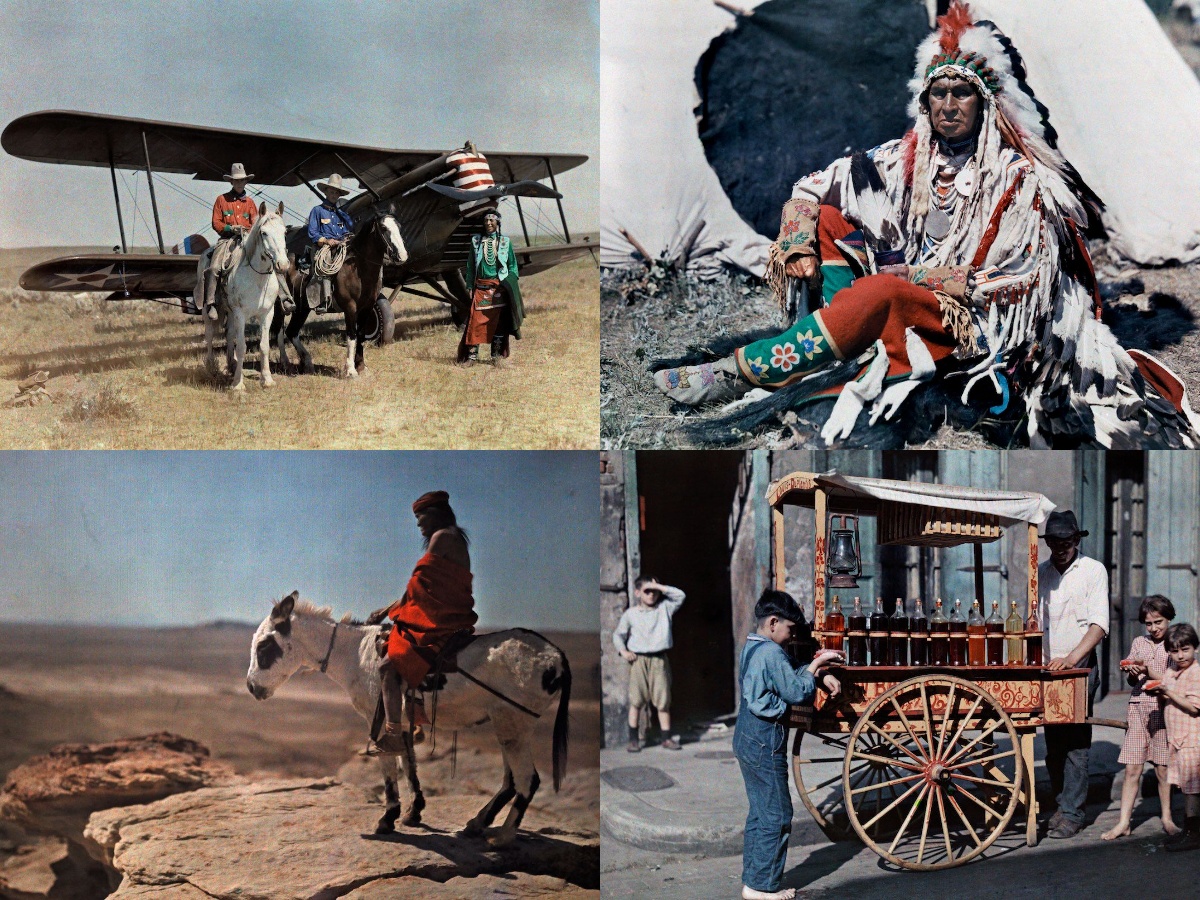 The special value of these 1920s pictures is that they are real color shots, not colorized. The photographers of the National Geographic Society used the autochrome process to obtain America’s color photographs at the beginning of the 20th century. The color multilayer photographic film “Kodachrome” appeared a bit later, in 1935. This invention vastly expanded the possibilities of color printing.
The special value of these 1920s pictures is that they are real color shots, not colorized. The photographers of the National Geographic Society used the autochrome process to obtain America’s color photographs at the beginning of the 20th century. The color multilayer photographic film “Kodachrome” appeared a bit later, in 1935. This invention vastly expanded the possibilities of color printing.
Nonetheless, the Society accumulated a collection of autochrome color pictures from the 1910s and 1920s with around 12,000 images.
In July 1914, National Geographic magazine published its first color photographs. They showcased the power of autochrome and changed the style of the magazine cover.
Pictures from all over America of the 1920s
Another value of this set is its wide geography. Oldpics used to publish some bright 1920s (as well as other periods’ photographs) pictures of the large cities, like New York, which attracted many outstanding photographers. This photo set is different. There’re plenty of countryside photographs which are relatively rare finds. But those NYC-photography lovers shouldn’t worry either. Some special color shots of the Greatest city in the world are in this publication too.
This series covers different aspects of American life, culture, and magnificent landscapes. These 1920s pictures look closer to the 19th-century landscape photography of Carleton Watkins and American settler’s Solomon Butcher series. Again, these are color ones, and thus they keep some exceptional details of the early 20th-century lifestyle.
Idealized American lifestyle of the 1950s by Nina Leen
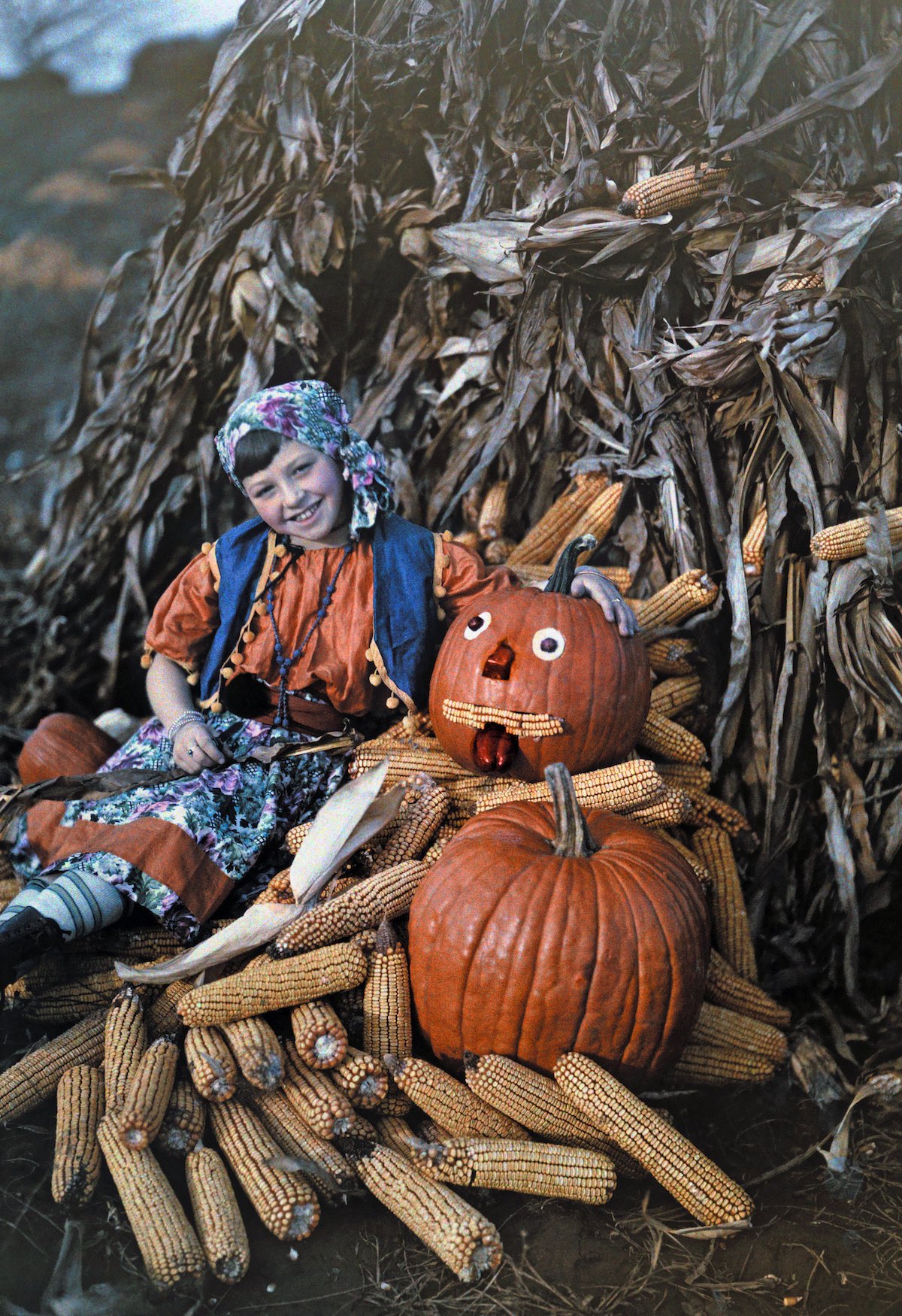
Virginia – A girl poses with corncobs and pumpkins during the harvest, Virginia. Photo by Charles Martin.
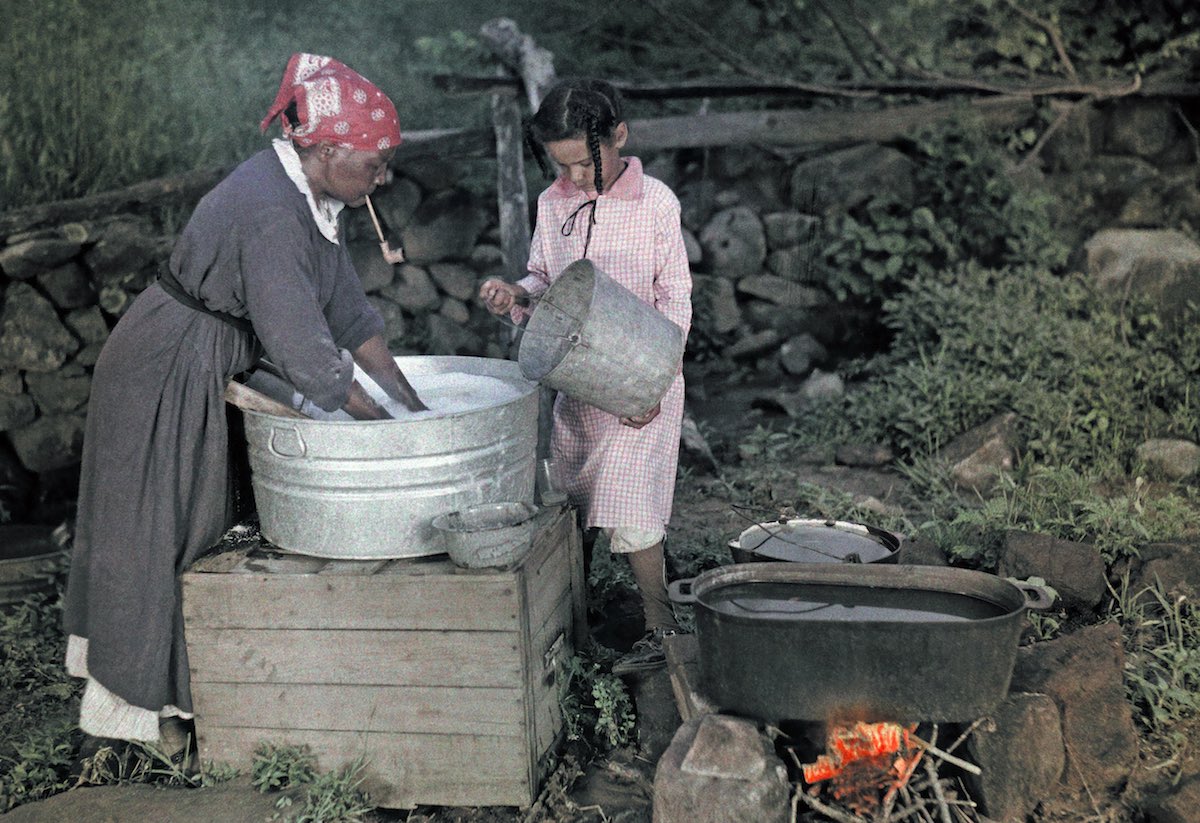
A woman with a teenager washes on the street in Sperryville. Photo by Charles Martin
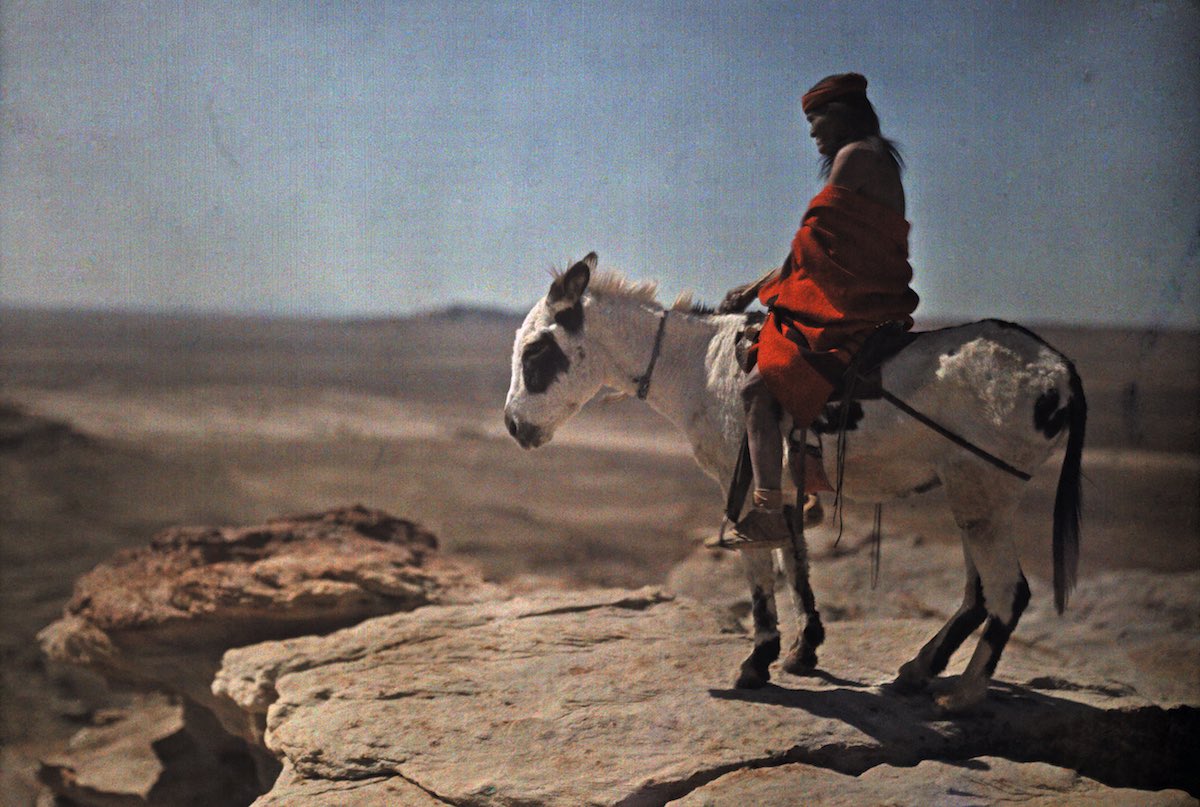
A Hopi Indian on his donkey stands on the edge of a high mountain. Photo by Franklin Price Knott
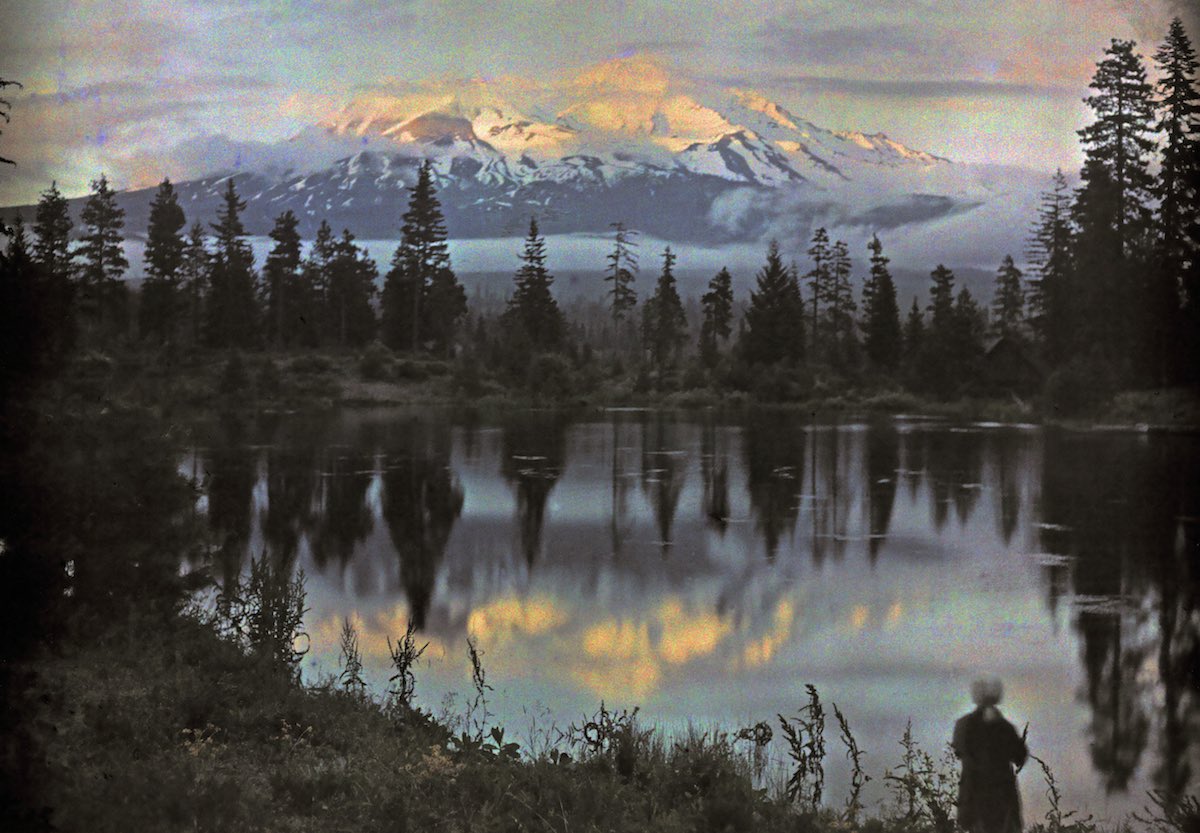
Mount Shasta in California and a woman at the edge of a pond. Photo by Franklin Price Knott
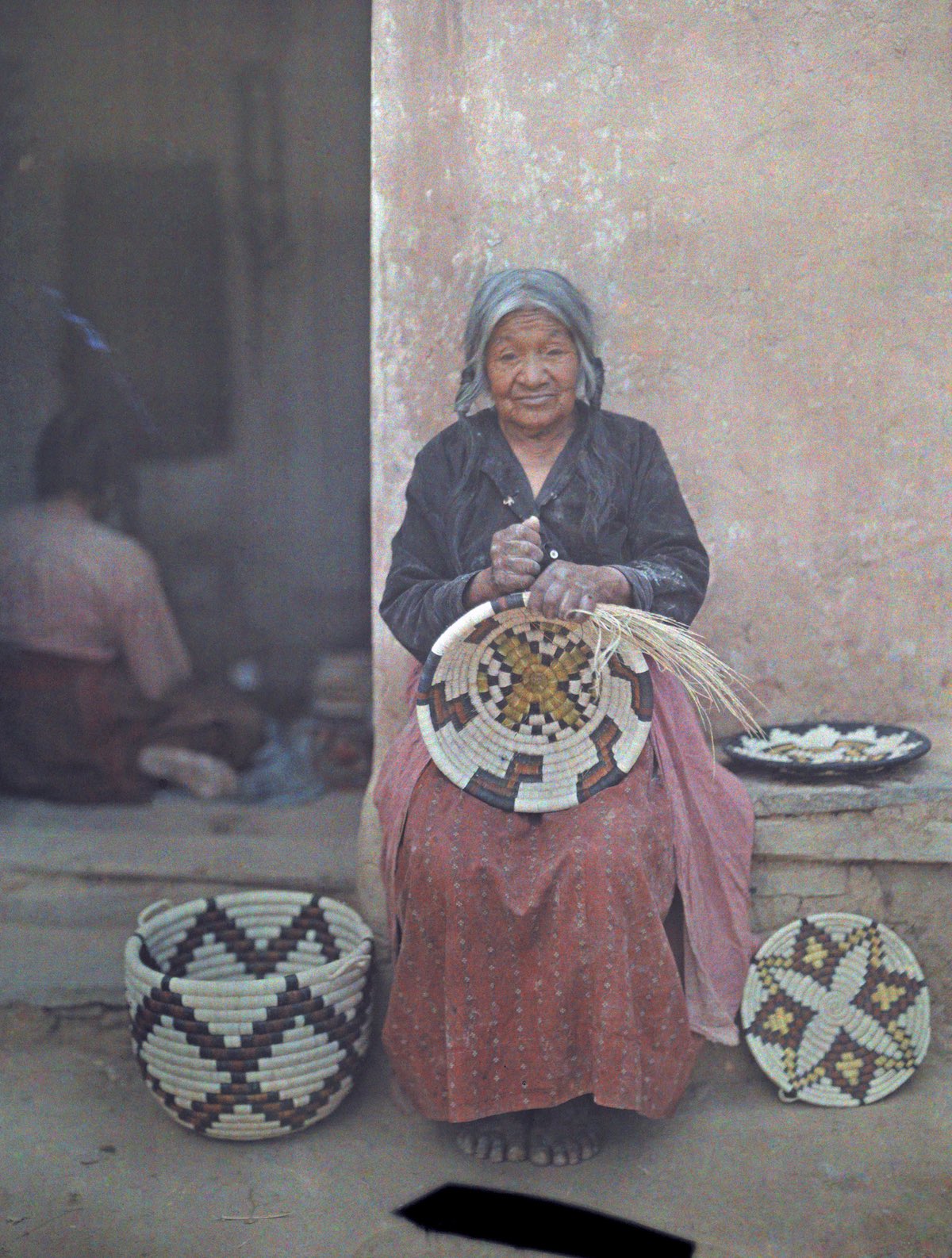
Portrait of a Hopi Indian woman weaving a basket. Photo by Franklin Price Knott
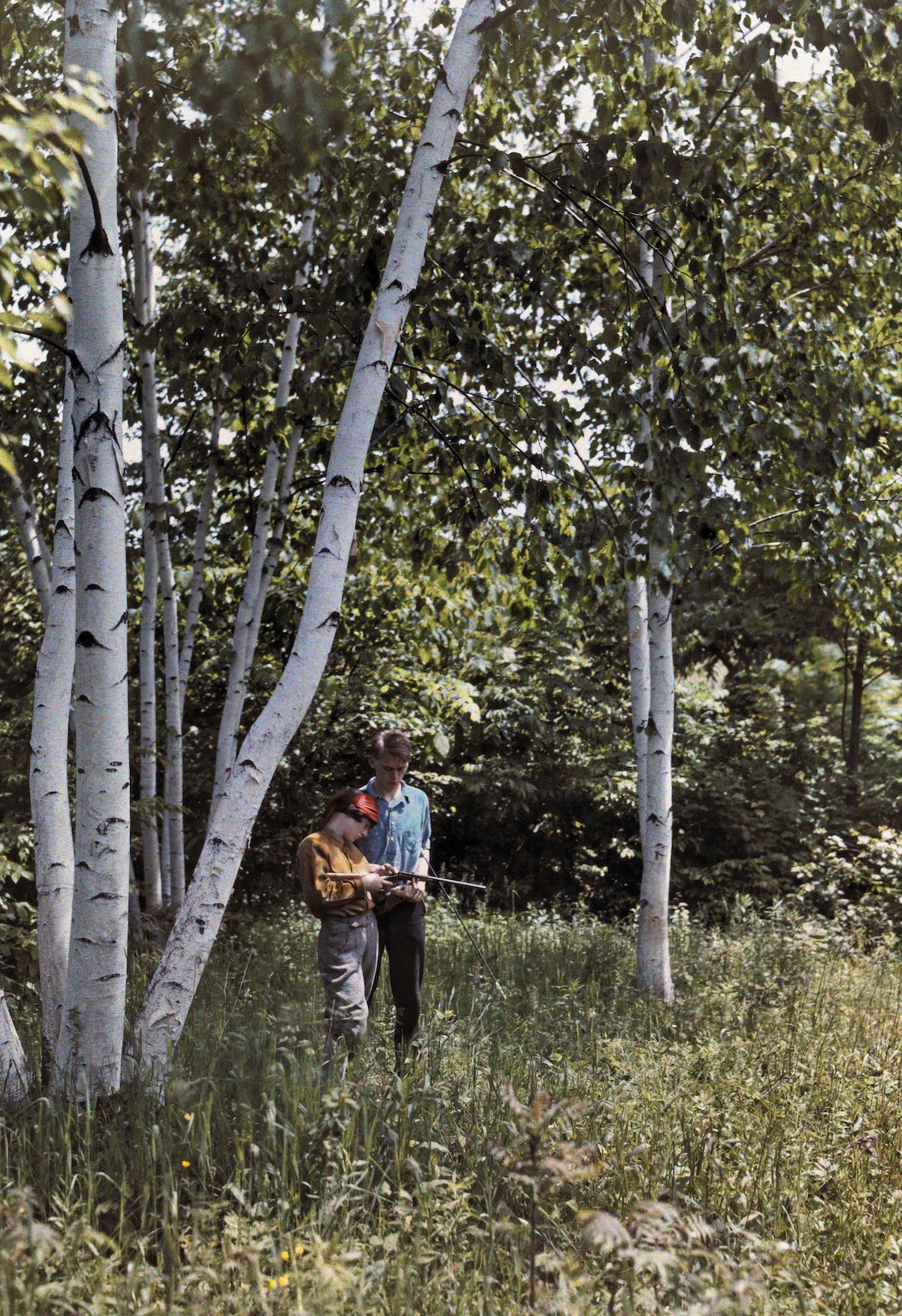
Two men stand among white birches in the Battenkill Valley, Bennington, Vermont. Photo by Clifton R. Adams
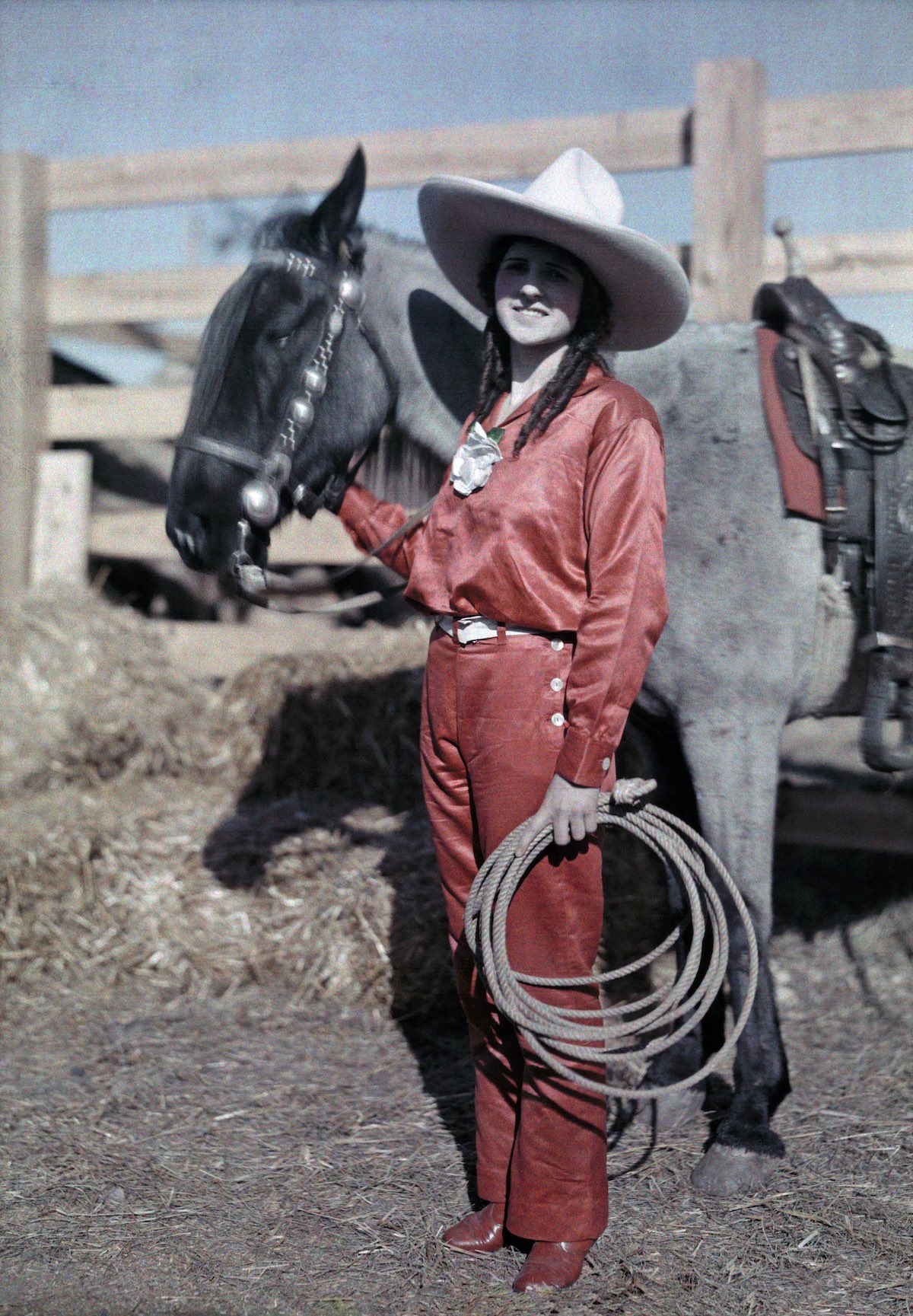
A rider poses with her pony in a rodeo in Texas. Photo by Clifton R. Adams
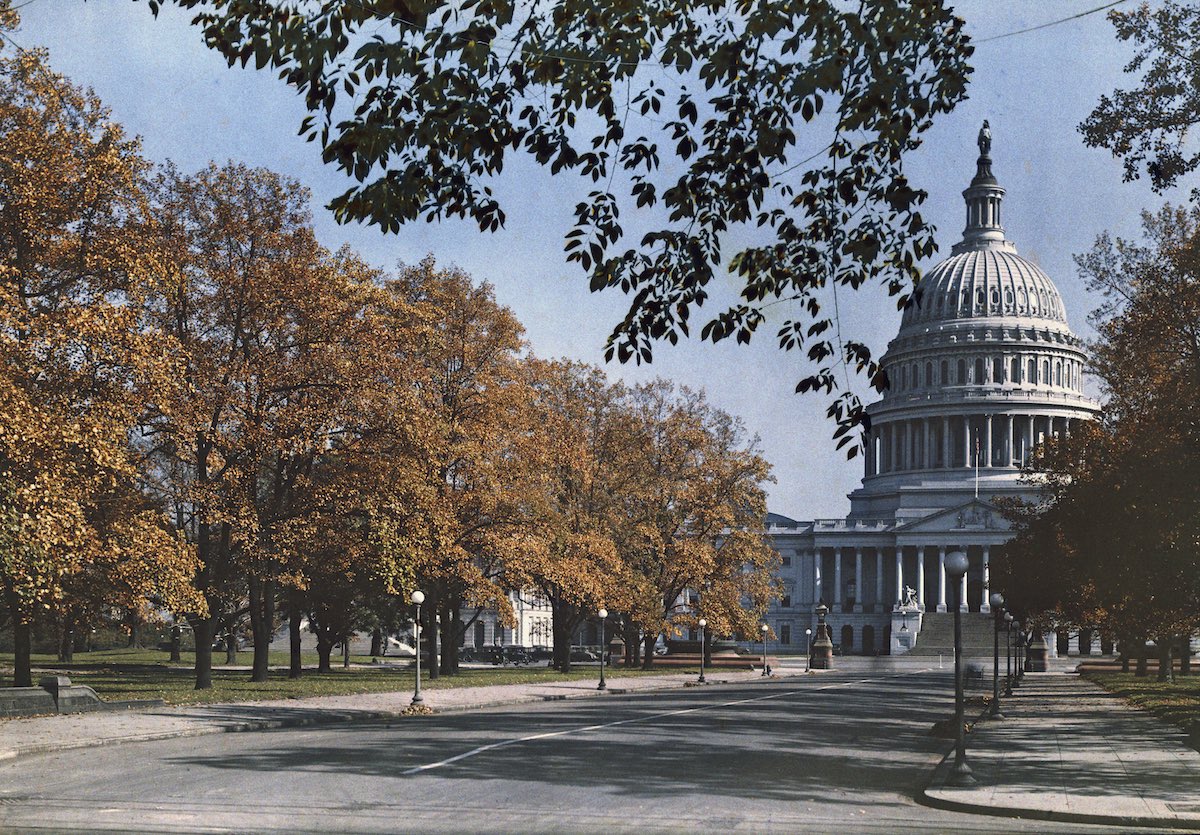
Amazing view of the Capitol. Photo by Charles Martin
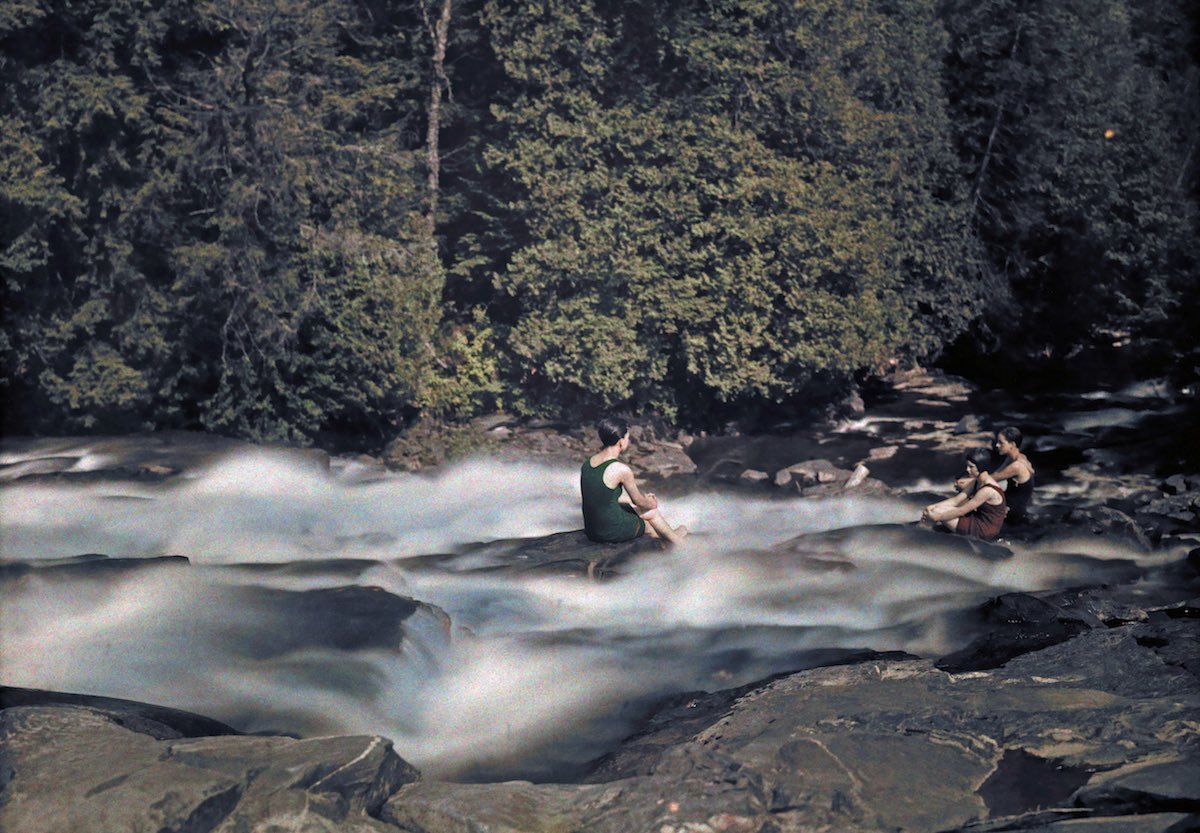
Vacationers by a running river on a warm summer day. Photo by Clifton R. Adams
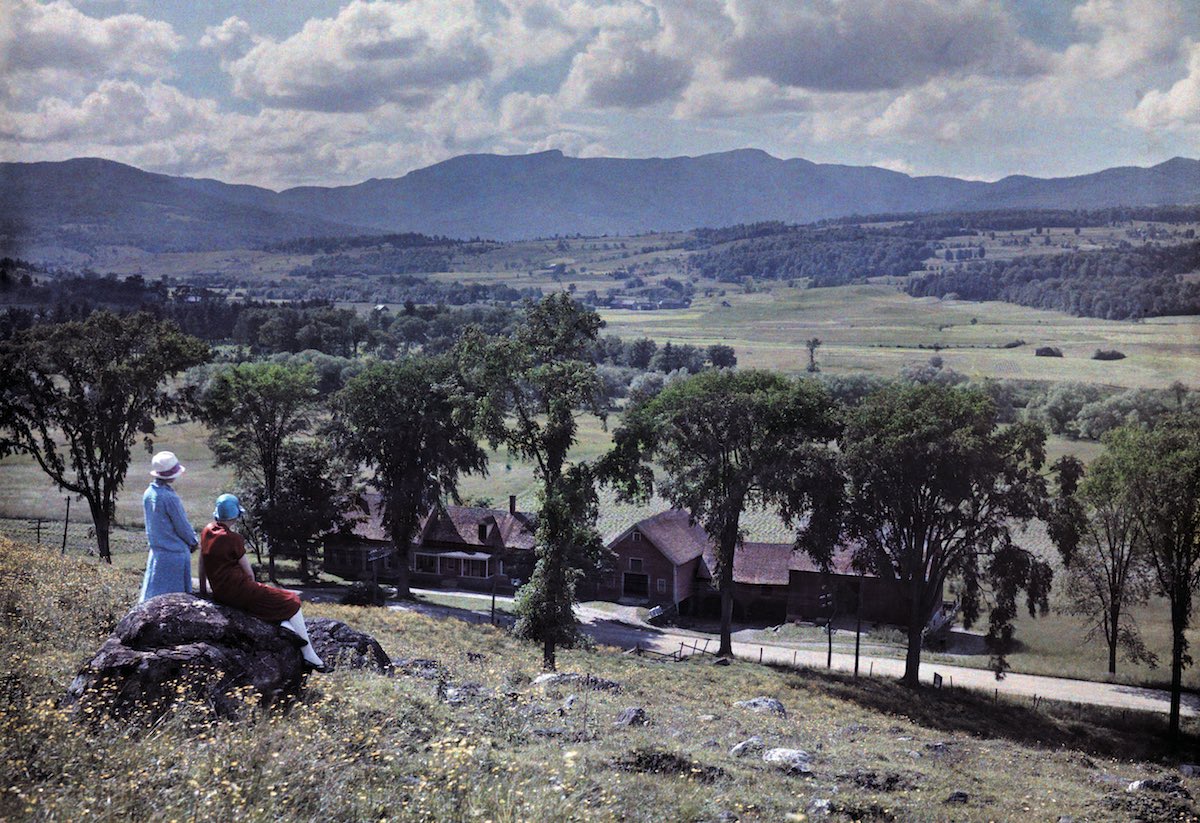
Two women look west from Stowe’s village towards Mount Mansfield, Vermont Photo by Clifton R. Adams.
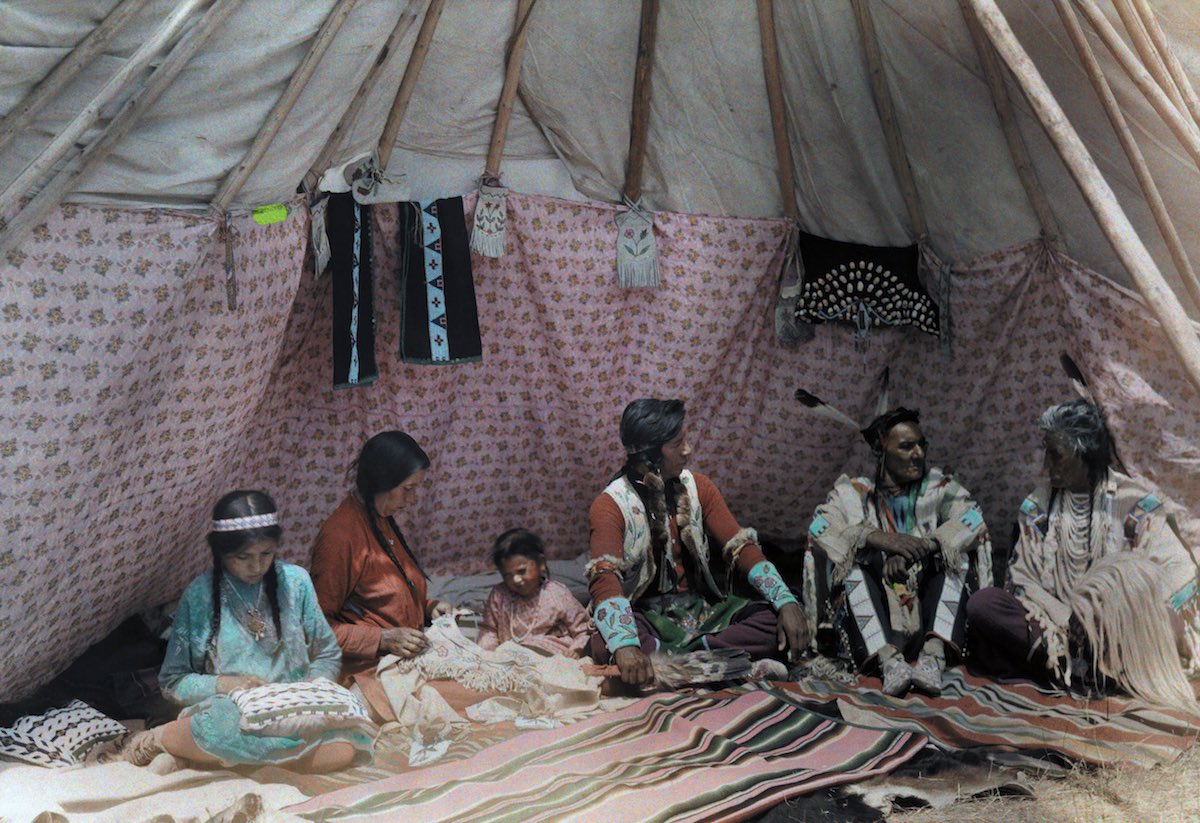
Indian family in their dwelling, tipi. Montana. Photo by Edwin L. Visherd
The story of American way photo by Margarett Bourke-White
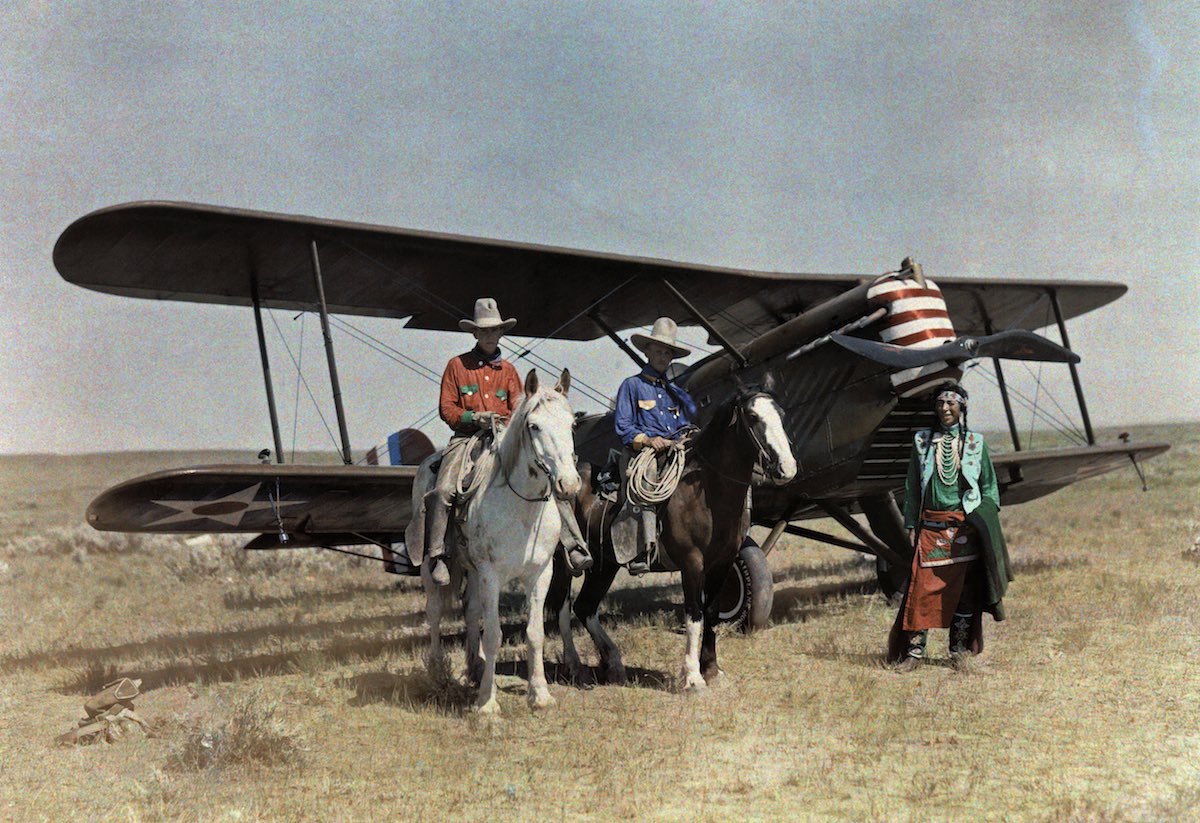
Three men stand in front of a plane on the Crowe Reservation in Montana. Photo by Edwin L. Visherd
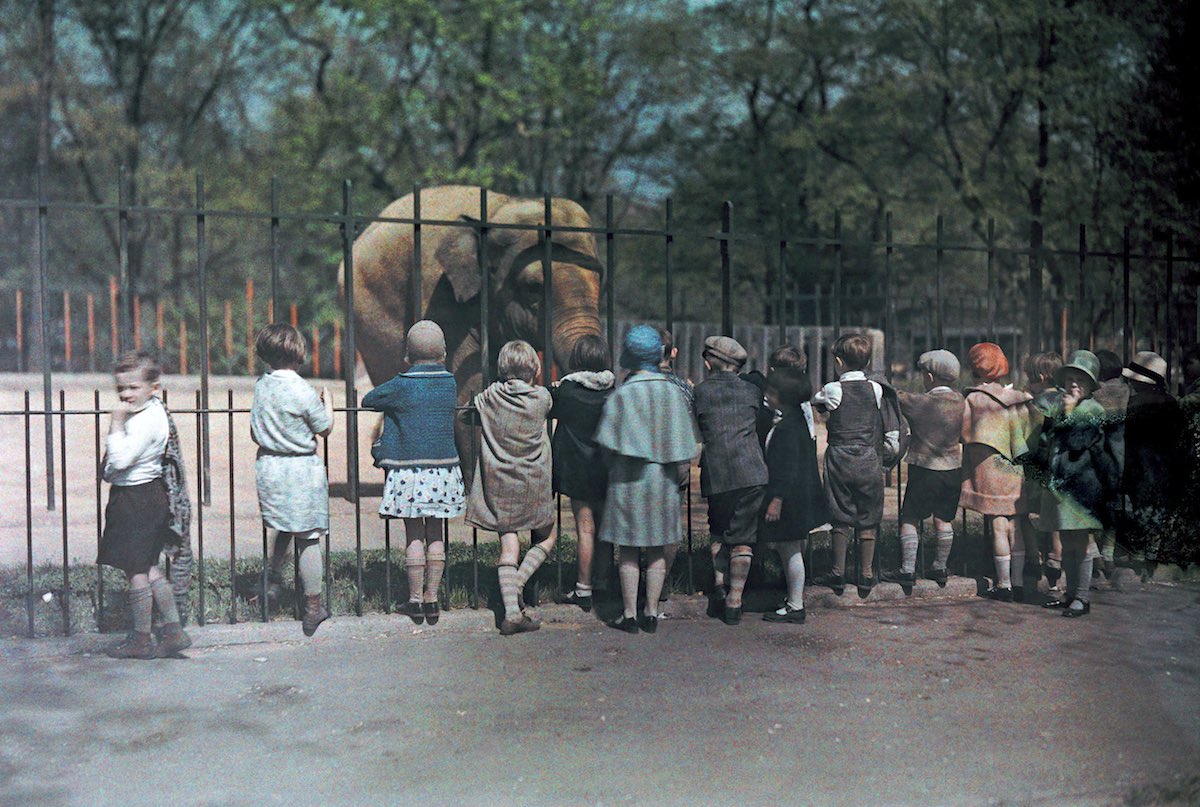
Washington, DC. A group of children looks at an elephant at the National Zoo. Photo by Jacob J. Guyer
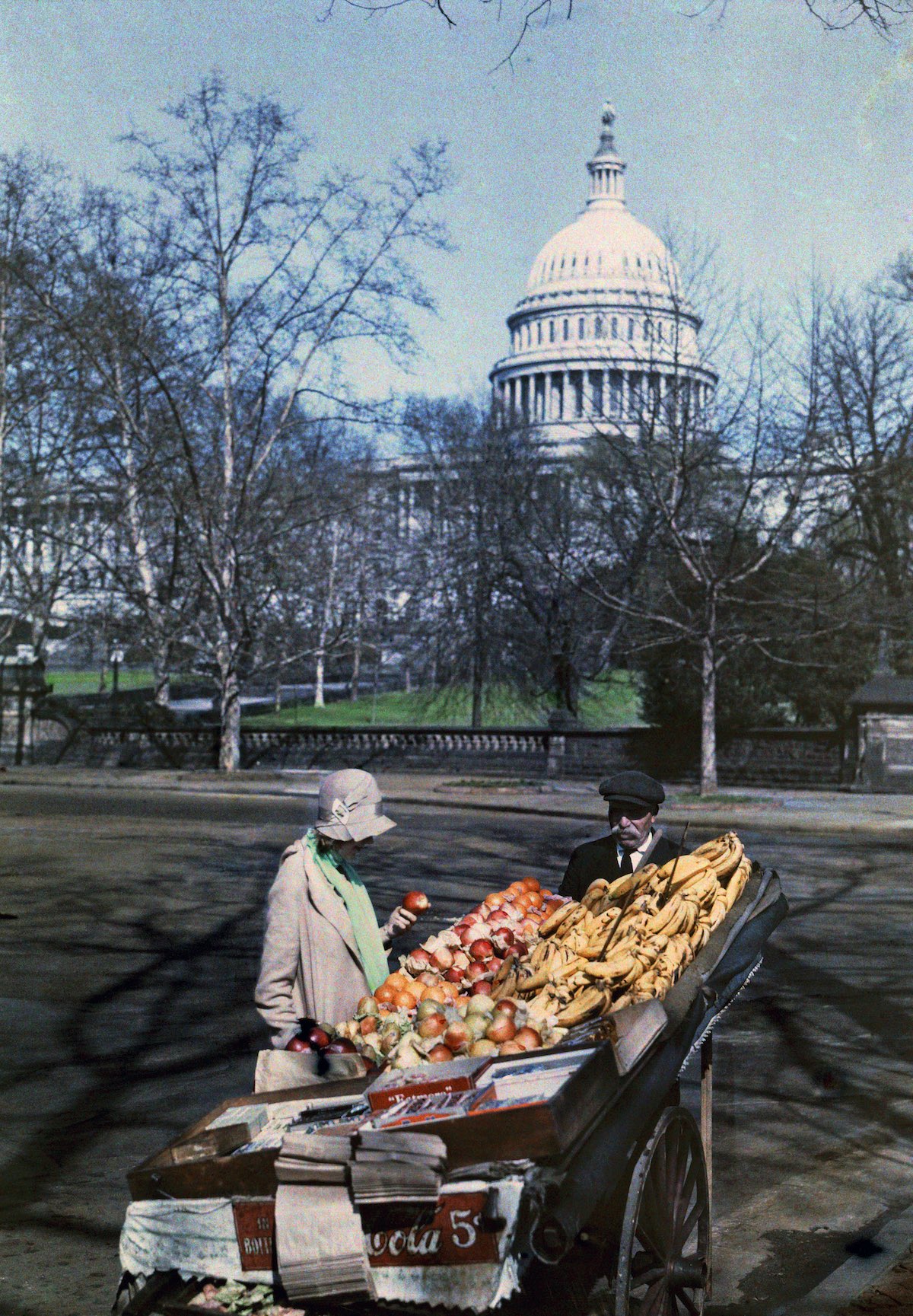
Washington DC. A woman in front of a fruit rack in the US capital. Photo by Orren R. Lowden
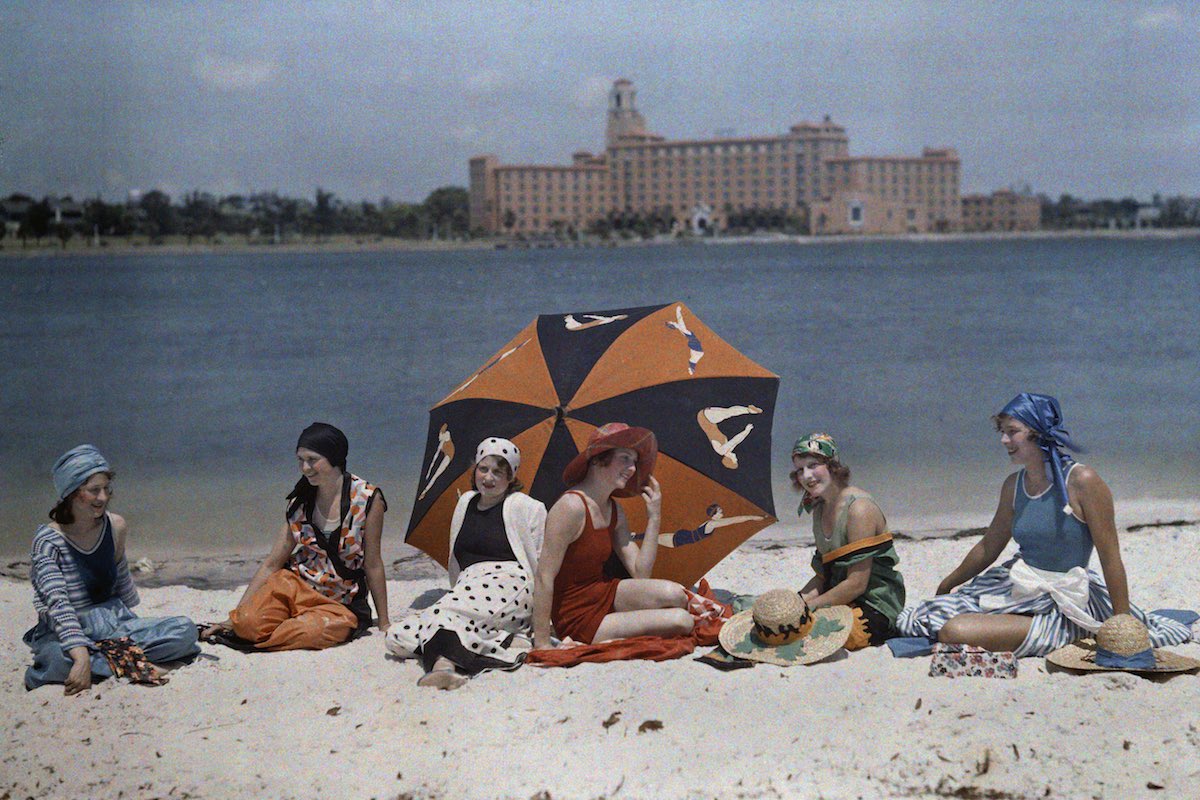
St. Petersburg, Florida. Women sit on the beach. Photo by Clifton R. Adams
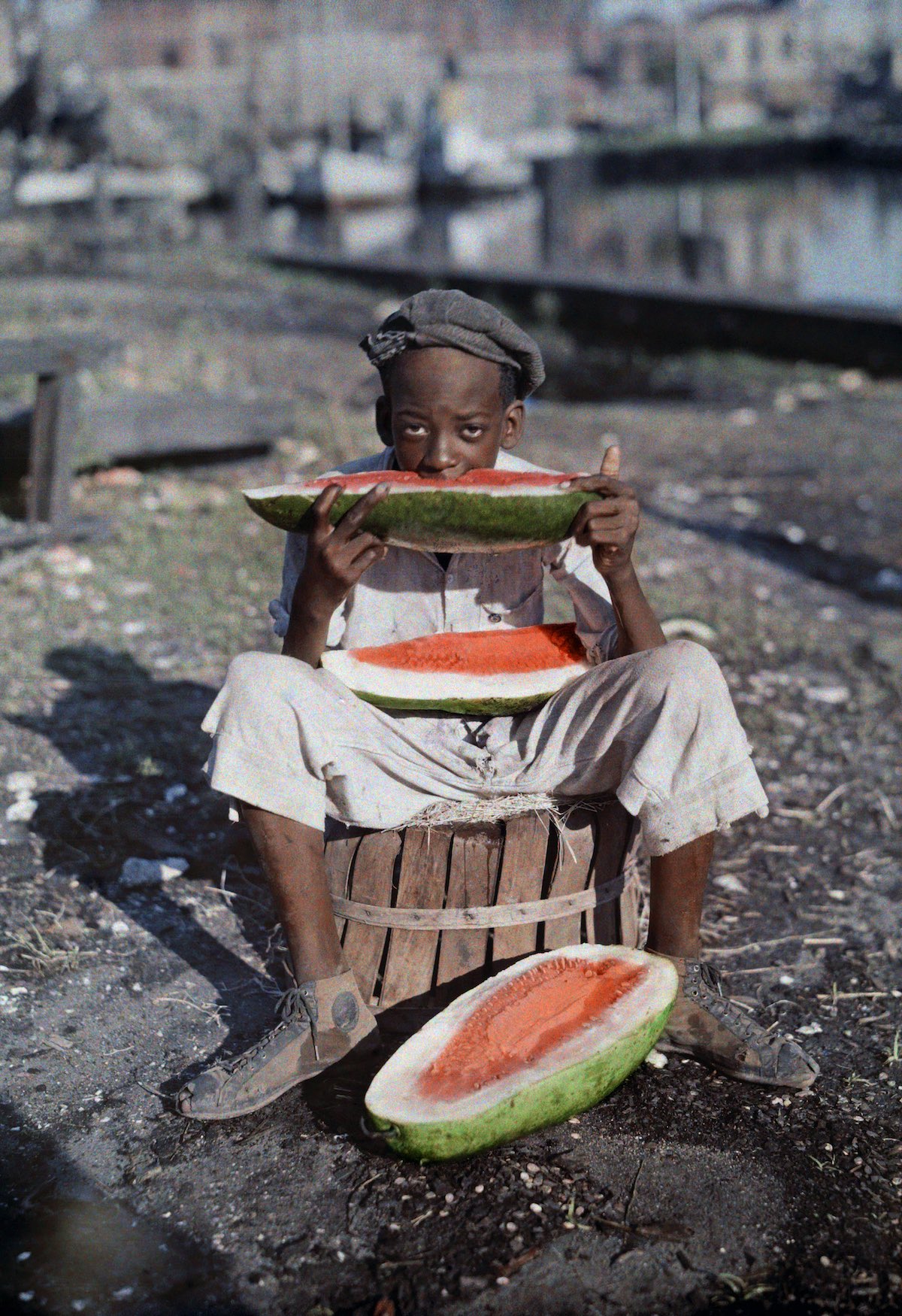
Portrait of a boy in New Orleans. Photo by Edwin L. Visherd
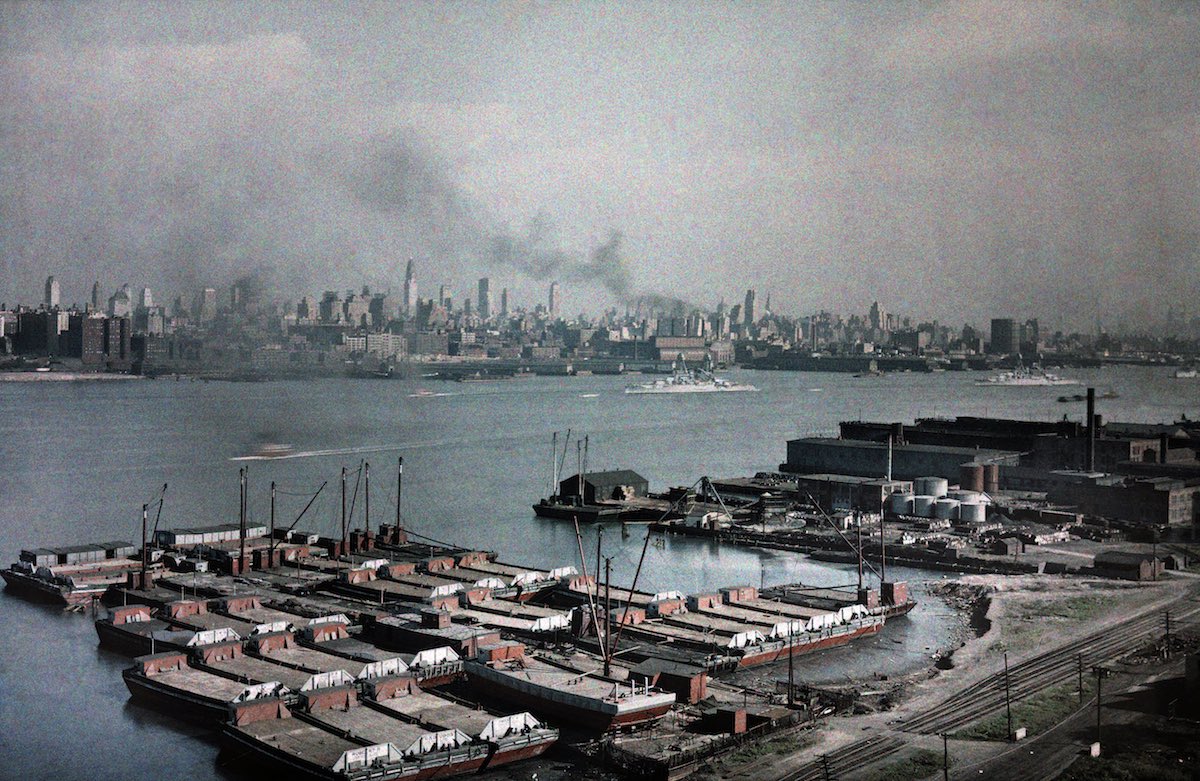
View of the Hudson River in New York. Photo Credi Clifton R. Adams and Edwin L. Visherd
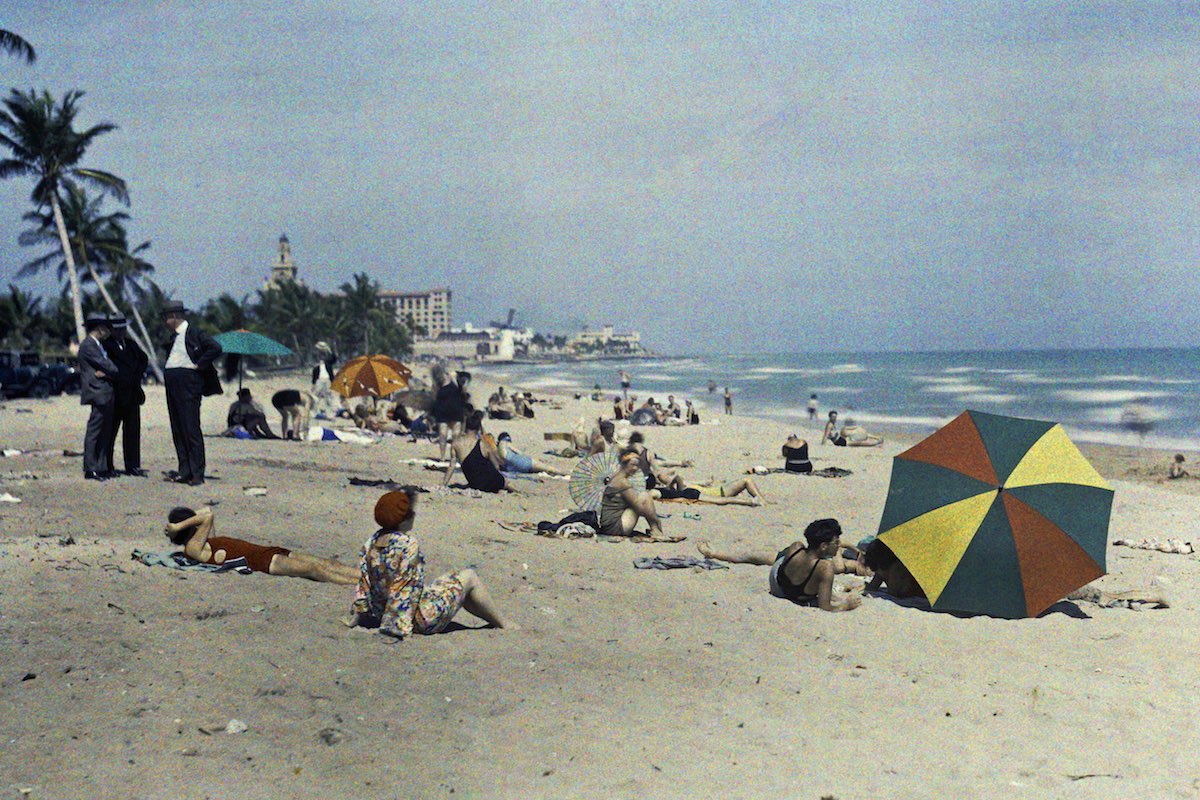
A group of people relaxing on the ocean coast, Miami Beach, Florida. Photo by Clifton R. Adams.
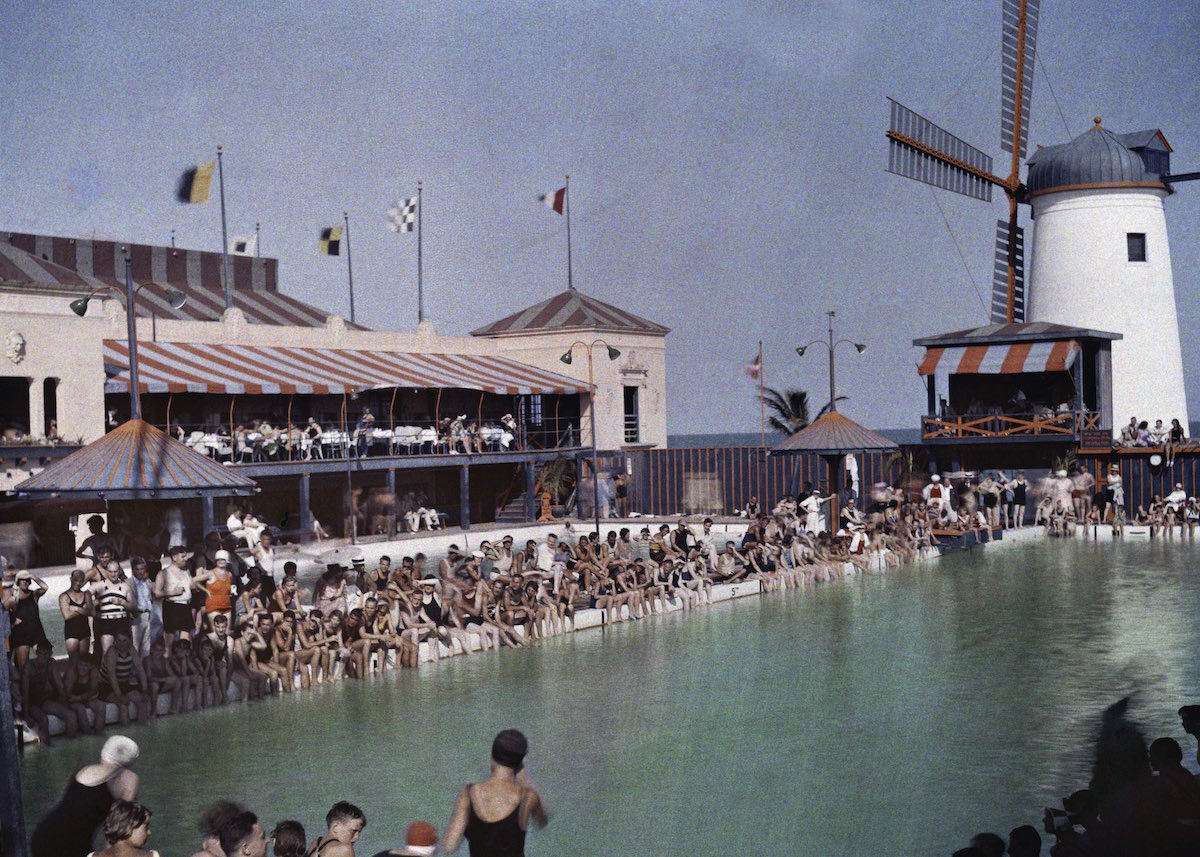
Swimming competition in Florida
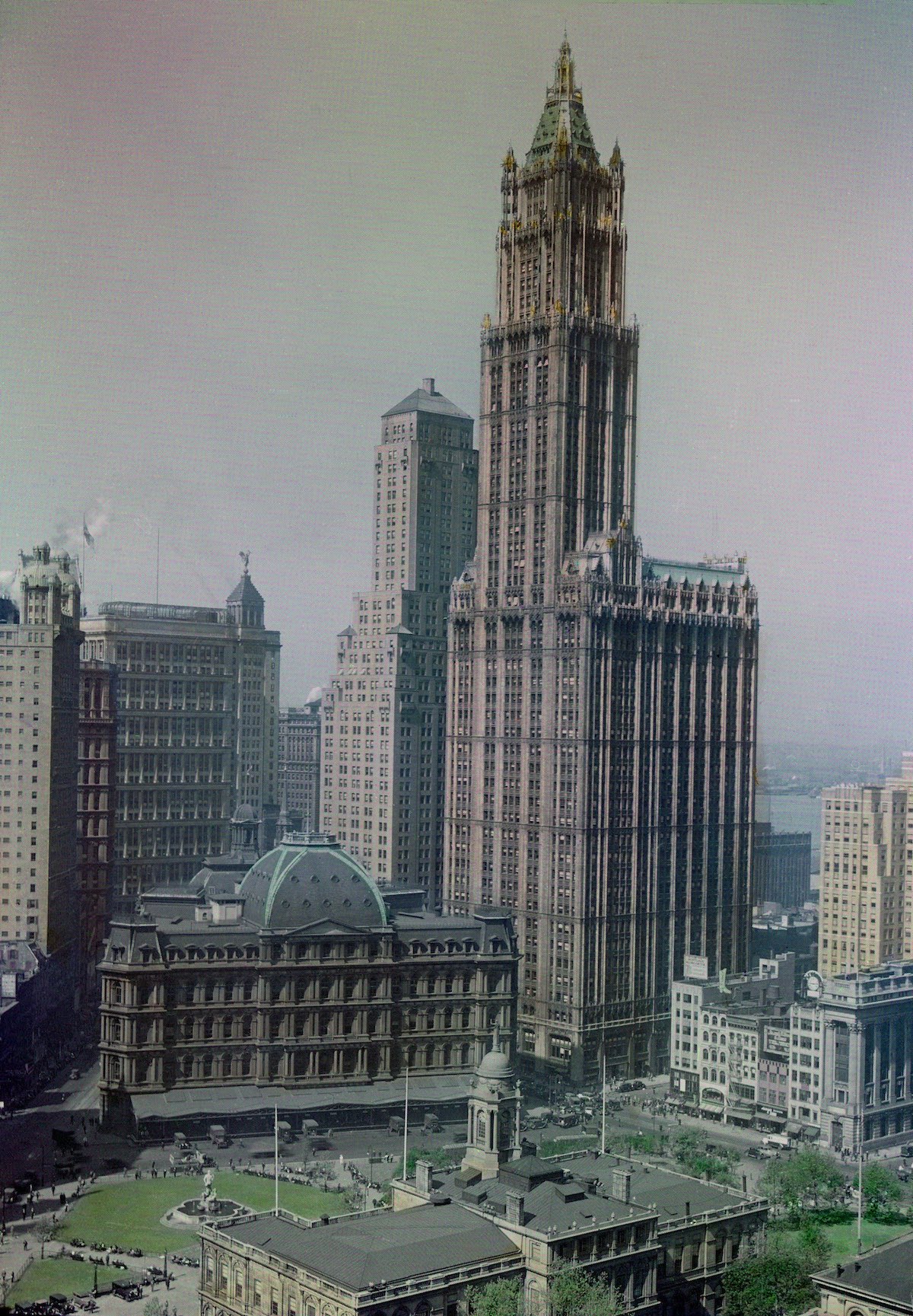
The sixty-story Woolworth Building rises on the New York skyline. Photo by Clifton R. Adams
See more: Postwar New York in 65 unforgettable vintage pictures
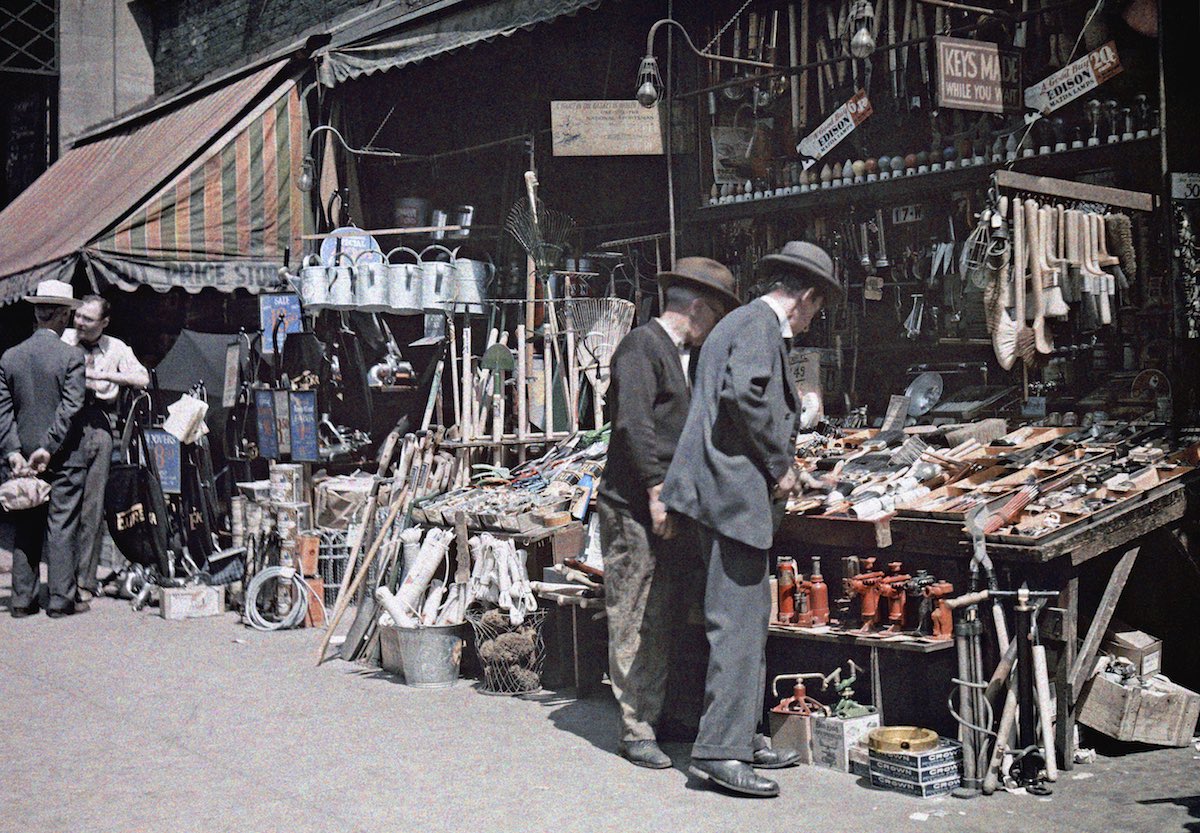
New Yorkers browse the assortment of goods sold along city streets. Photo by Clifton R. Adams and Edwin L. Visherd.
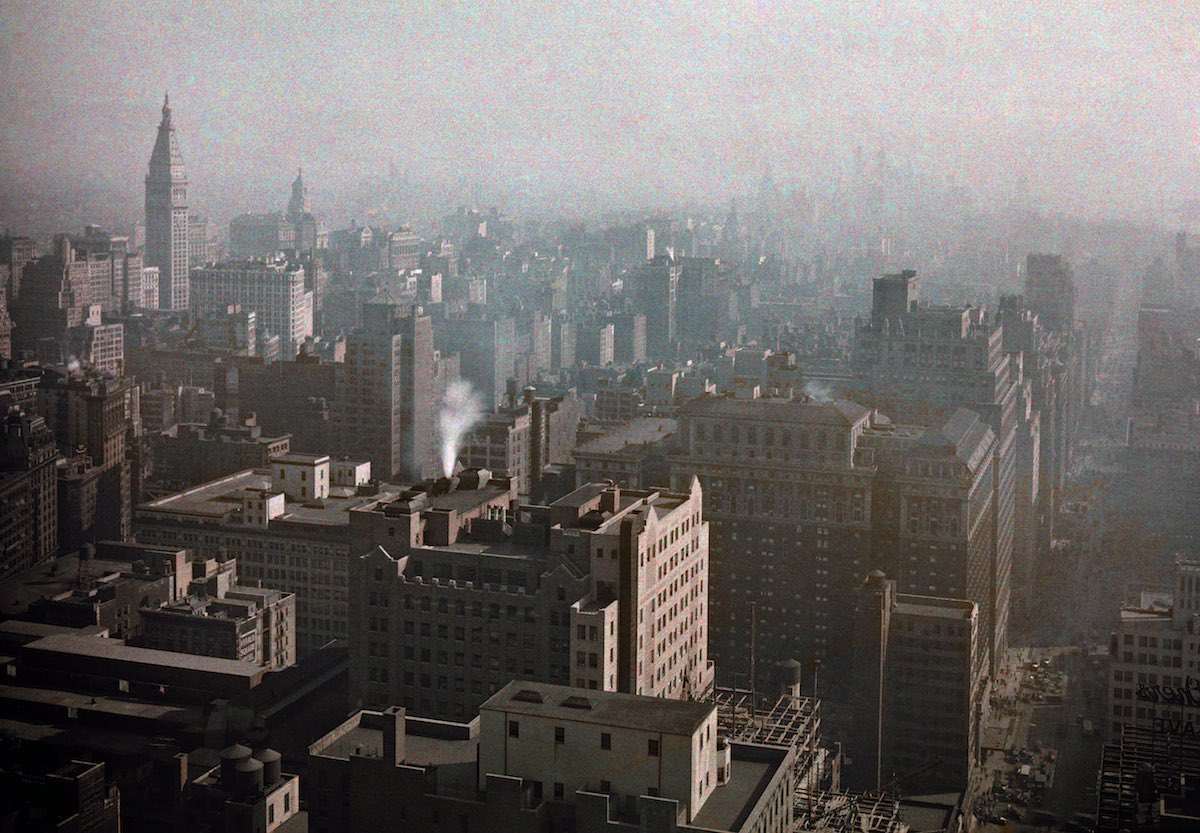
Aerial photography of Manhattan. Photo by Clifton R. Adams and Edwin L. Visherd
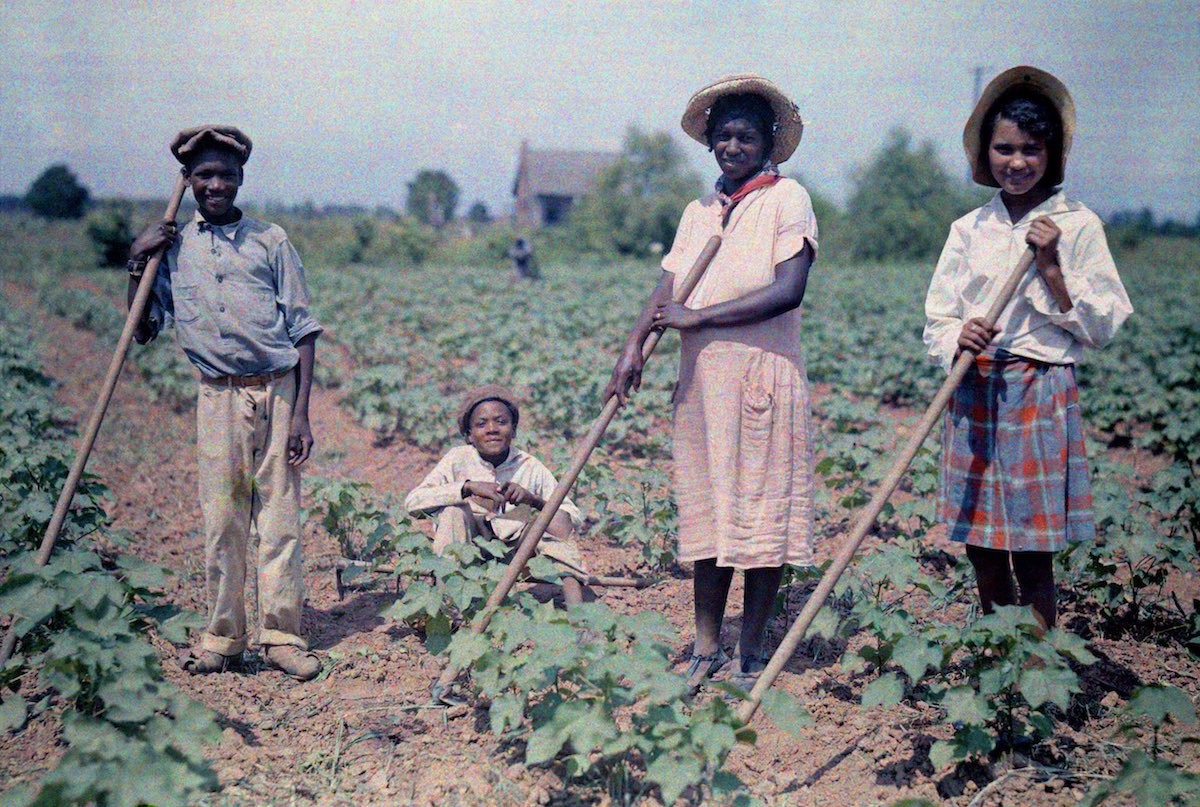
People in the cotton field in Louisiana. Photo by Edwin L. Visherd
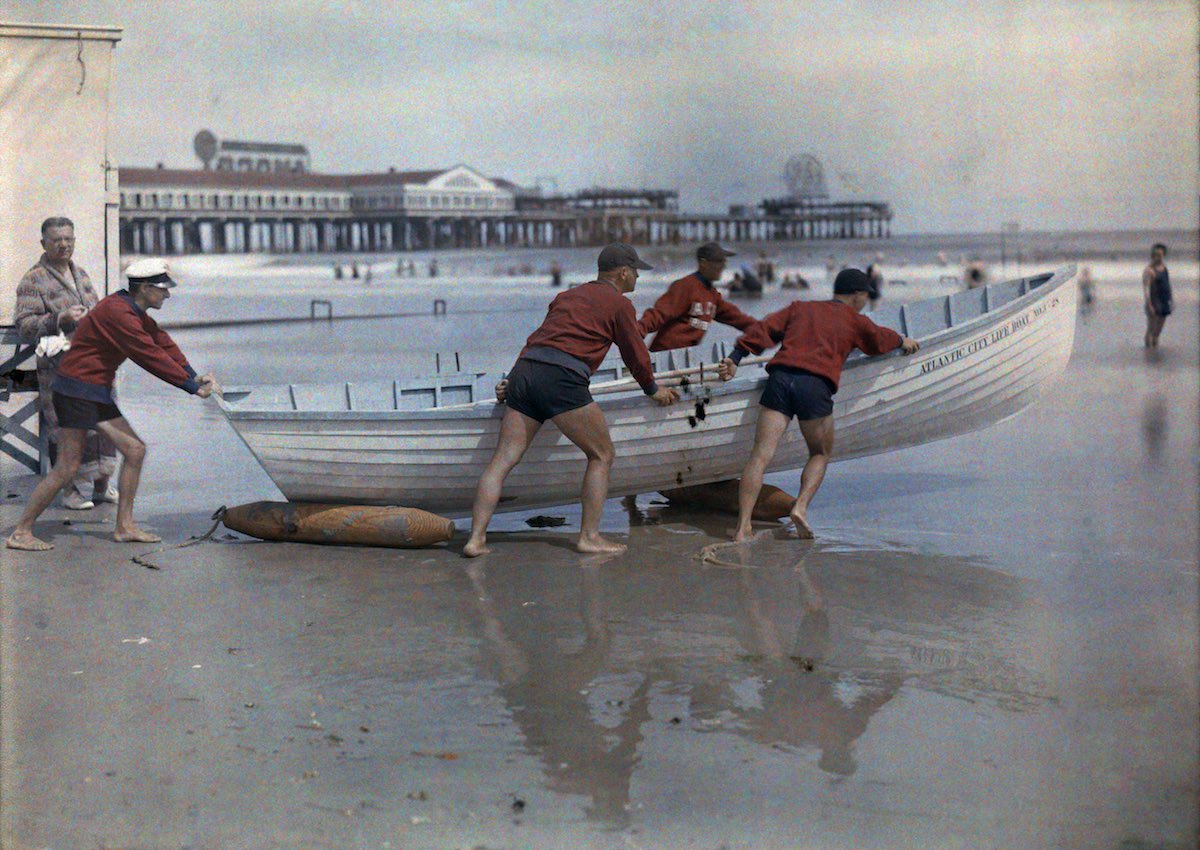
Atlantic City, New Jersey. A coastal patrol pushes a boat into the water. Photo by Clifton R. Adams
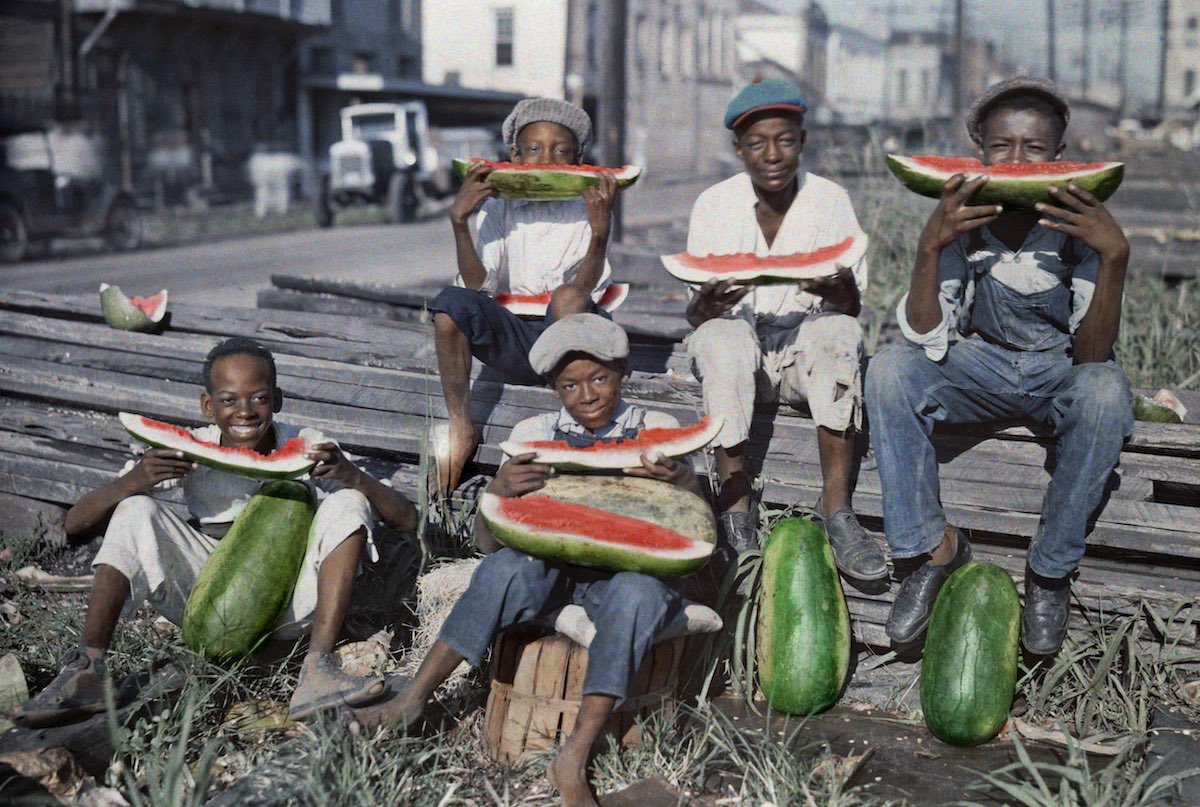
Five boys eat watermelon in New Orlean. Photo by Edwin L. Visherd
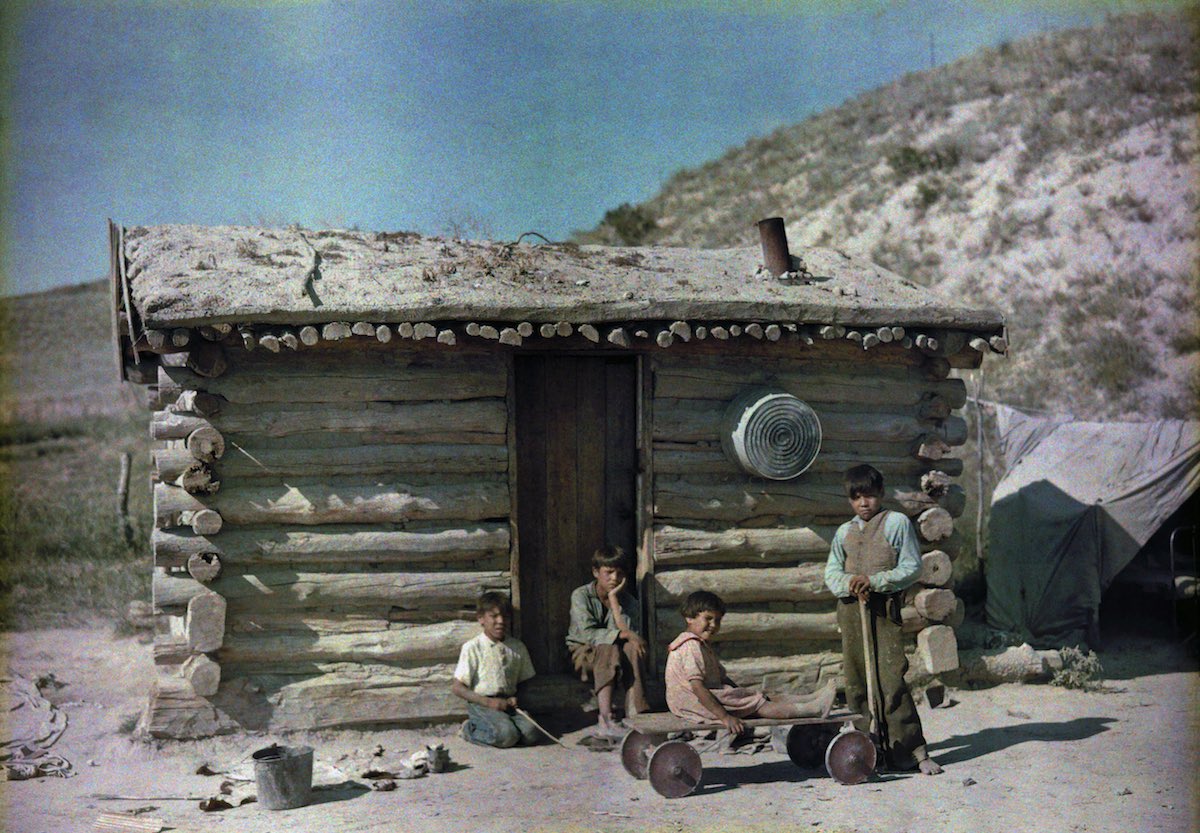
Pine Ridge Indian Reservation, South Dakota. Kids outside a house with a turf roof. Photo by Richard Hewitt Stewart
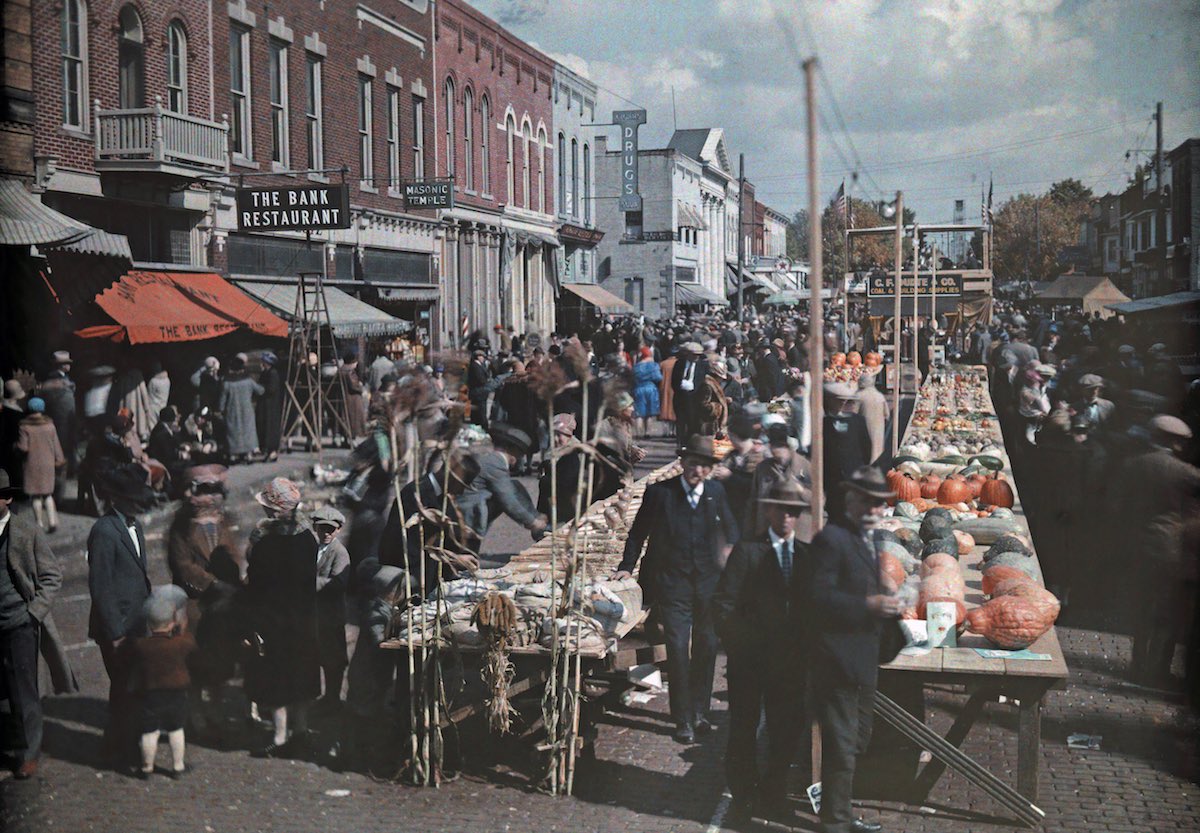
At the fair in Lyndonville, Ohio. Photo by Jacob J. Guyer
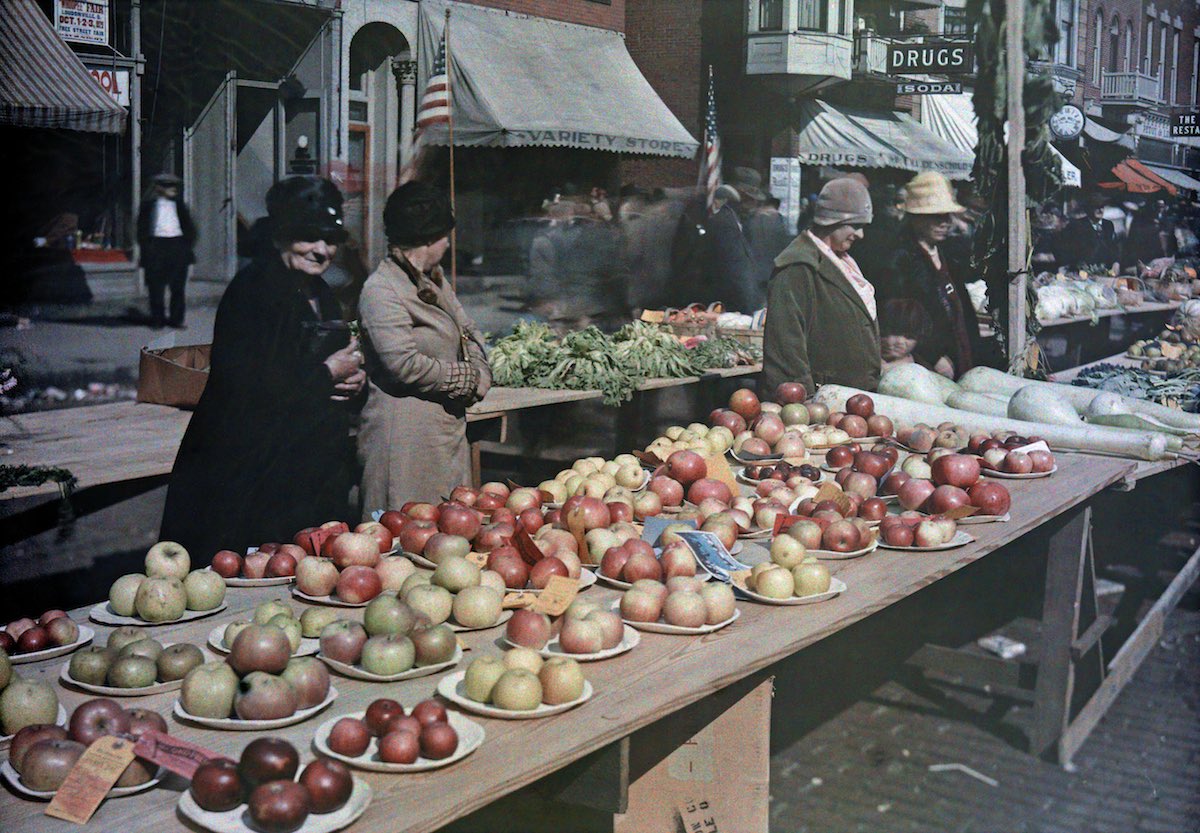
Apple stands at the Lyndonville fair, Ohio Photo by Jacob J. Guyer.
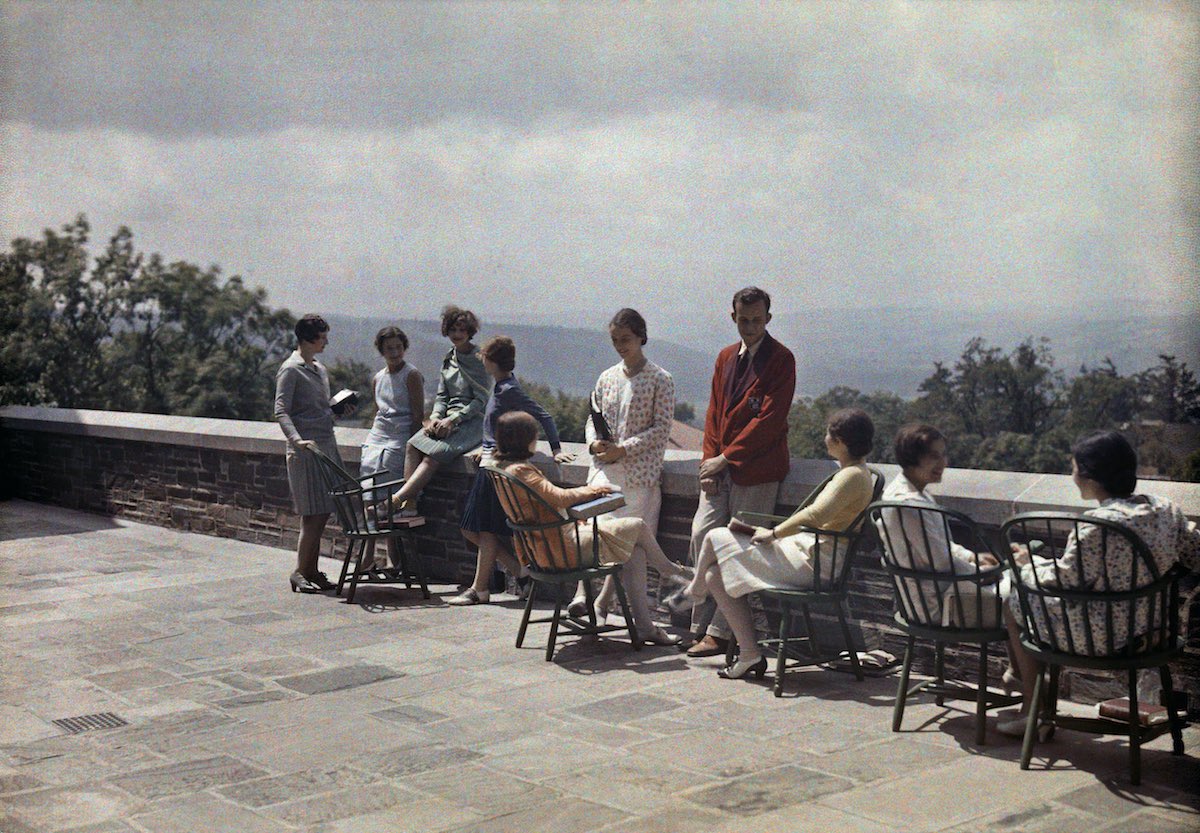
A group of students on the terrace at Cornell University. Photo by Clifton R. Adams
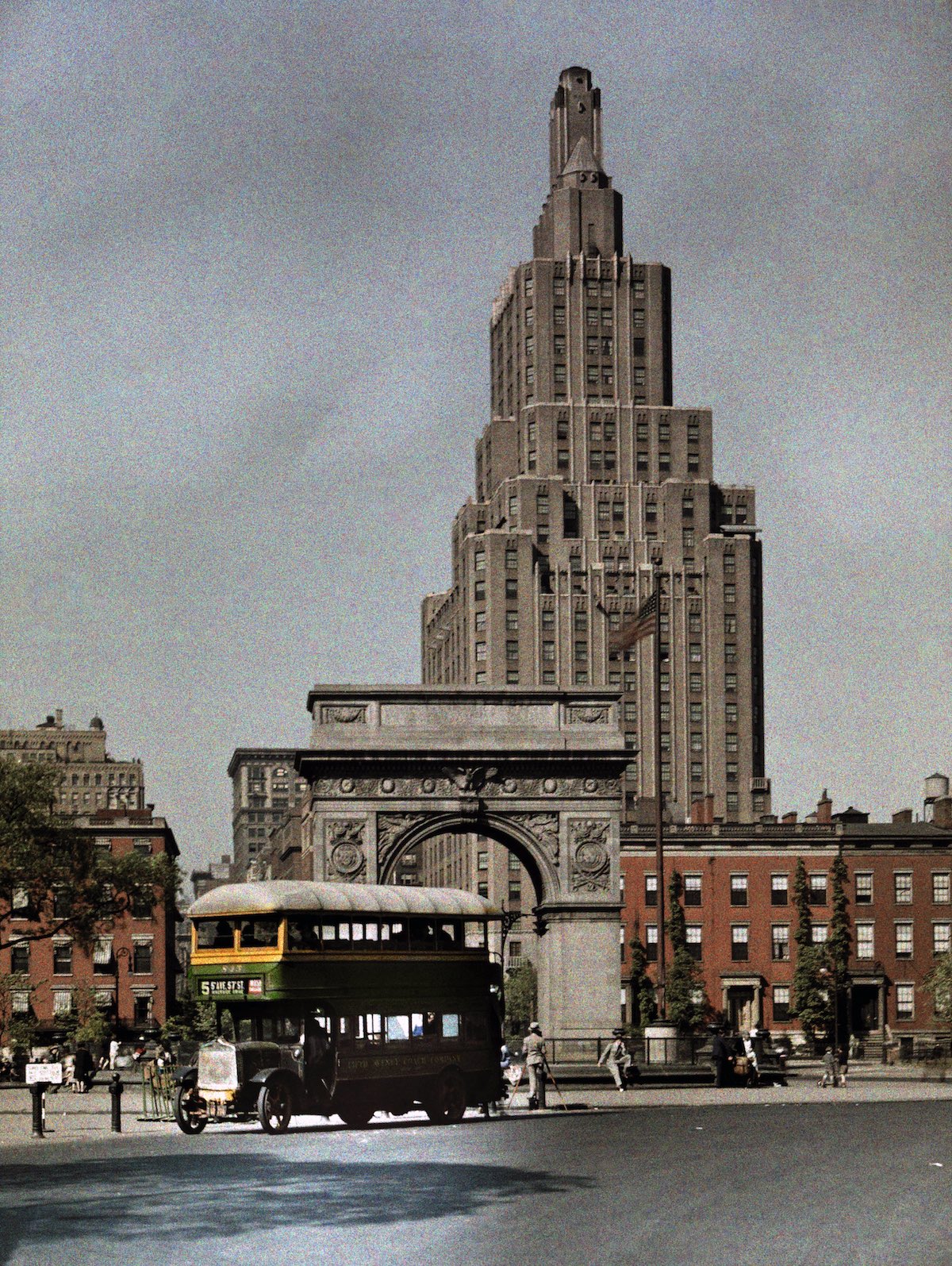
Washington Square and Fifth Avenue. Photo by Clifton R. Adams and Edwin L. Visherd
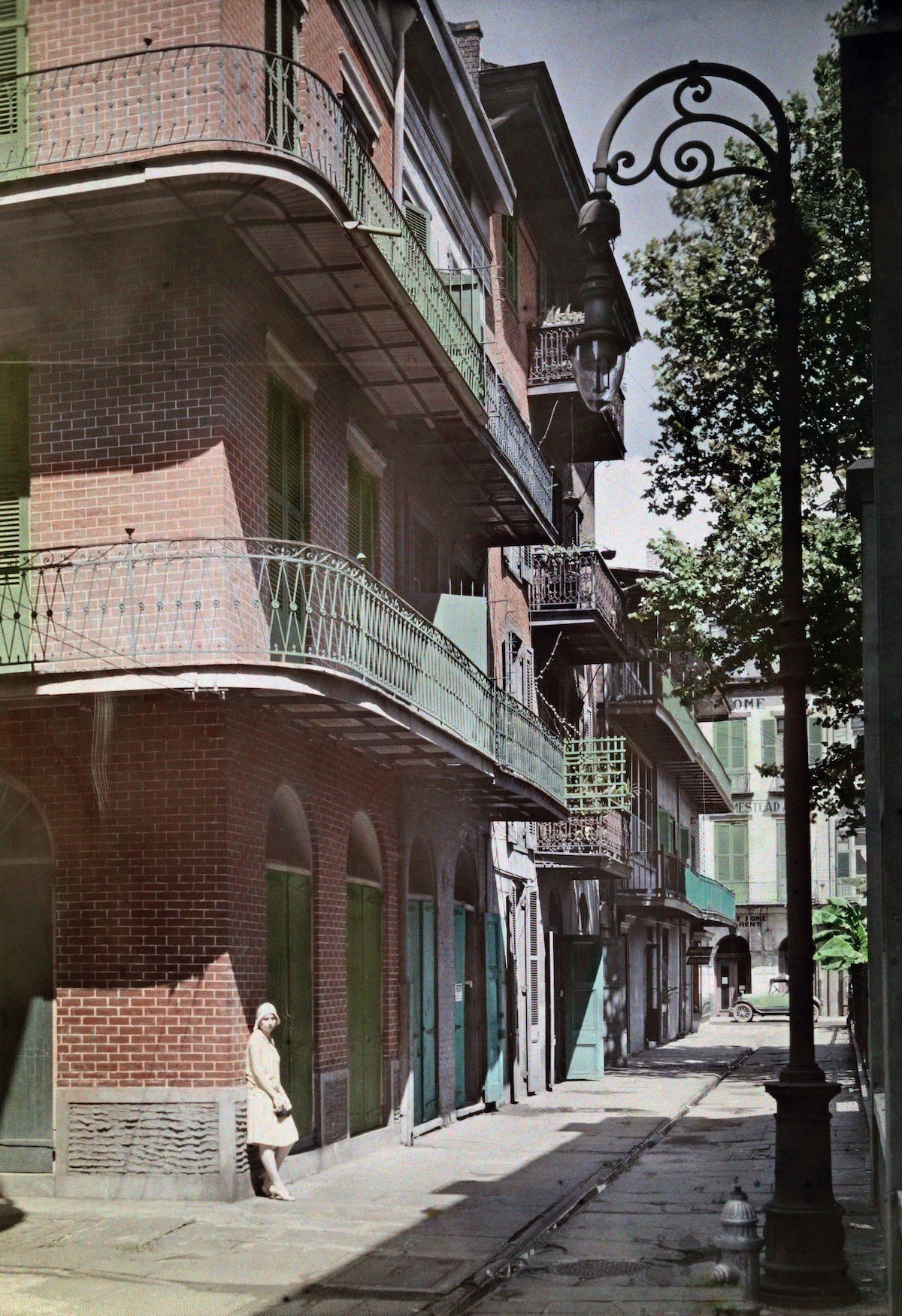
French Quarter, New Orlean. Photo by- Edwin L. Visherd

Praline saleswoman in the French Quarter. Photo by Edwin L. Visherd
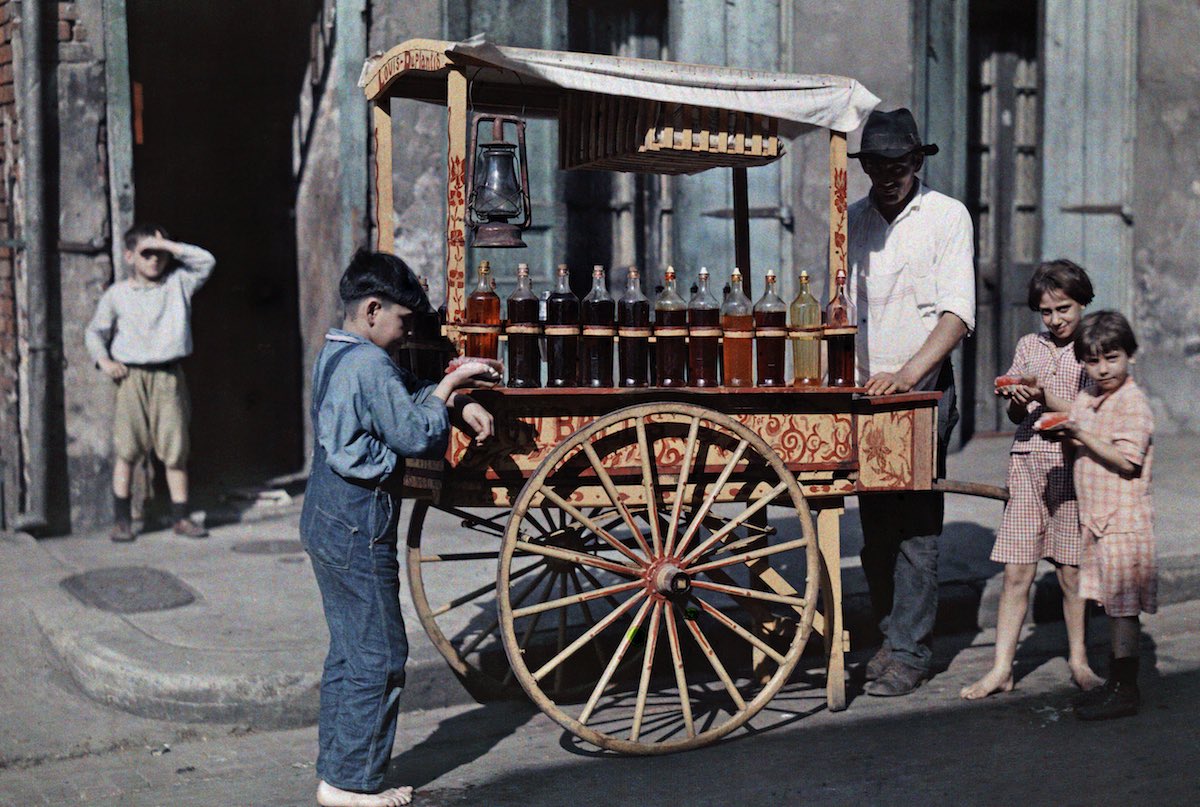
Children gather around a snowball vendor, New Orlean. Photo by Edwin L. Visherd
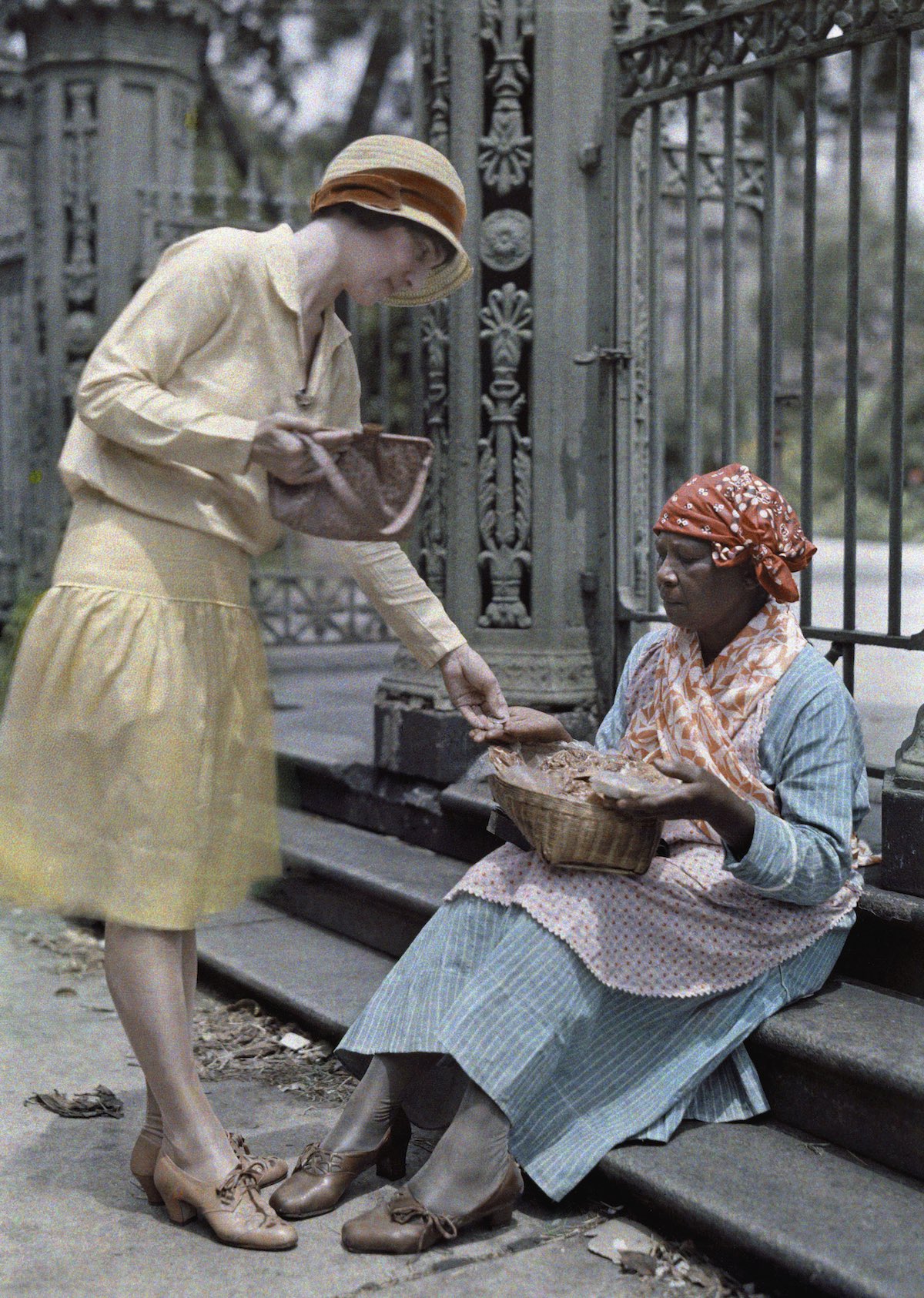
A woman sitting on stone steps in the French Quarter sells pralines. Photo by Edwin L. Visherd
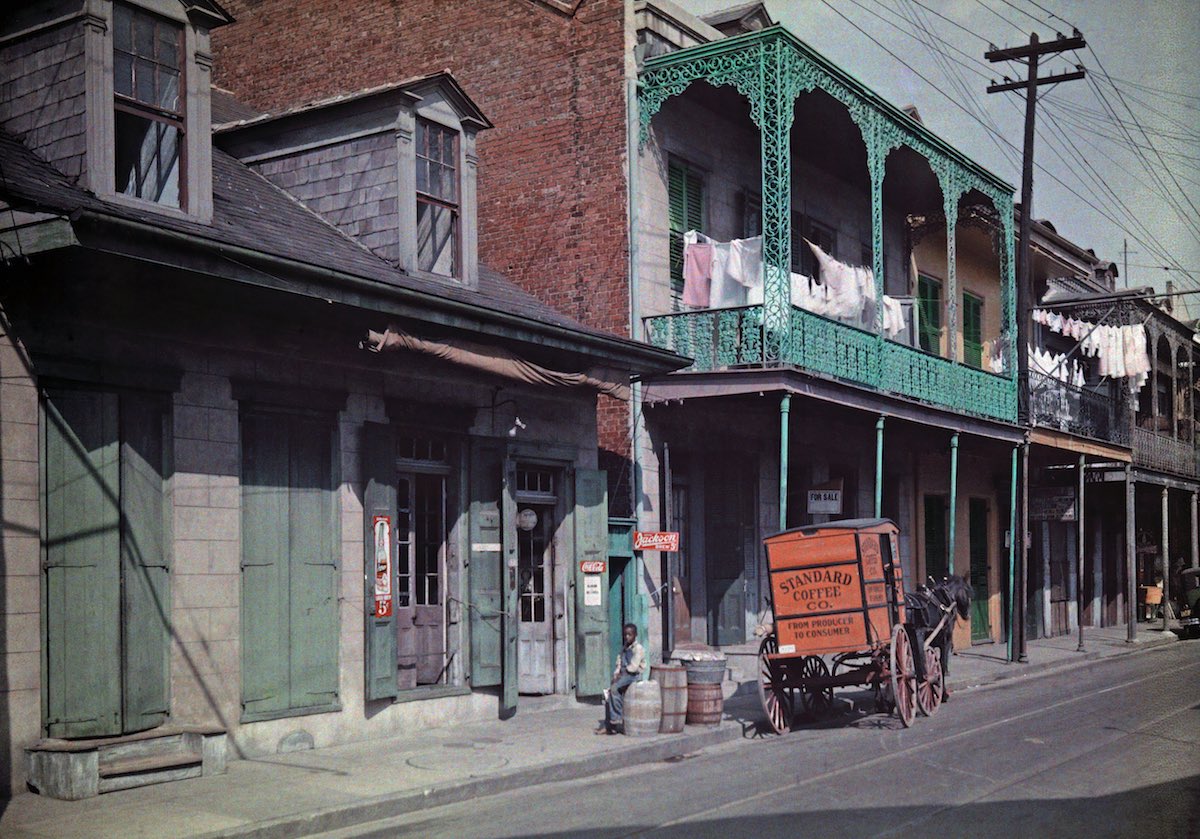
A boy sits on a barrel outside a brewery in the French Quarter, New Orlean. Photo by Edwin L. Visherd

Washington Square in New York. Photo by Clifton R. Adams and Edwin L. Visherd
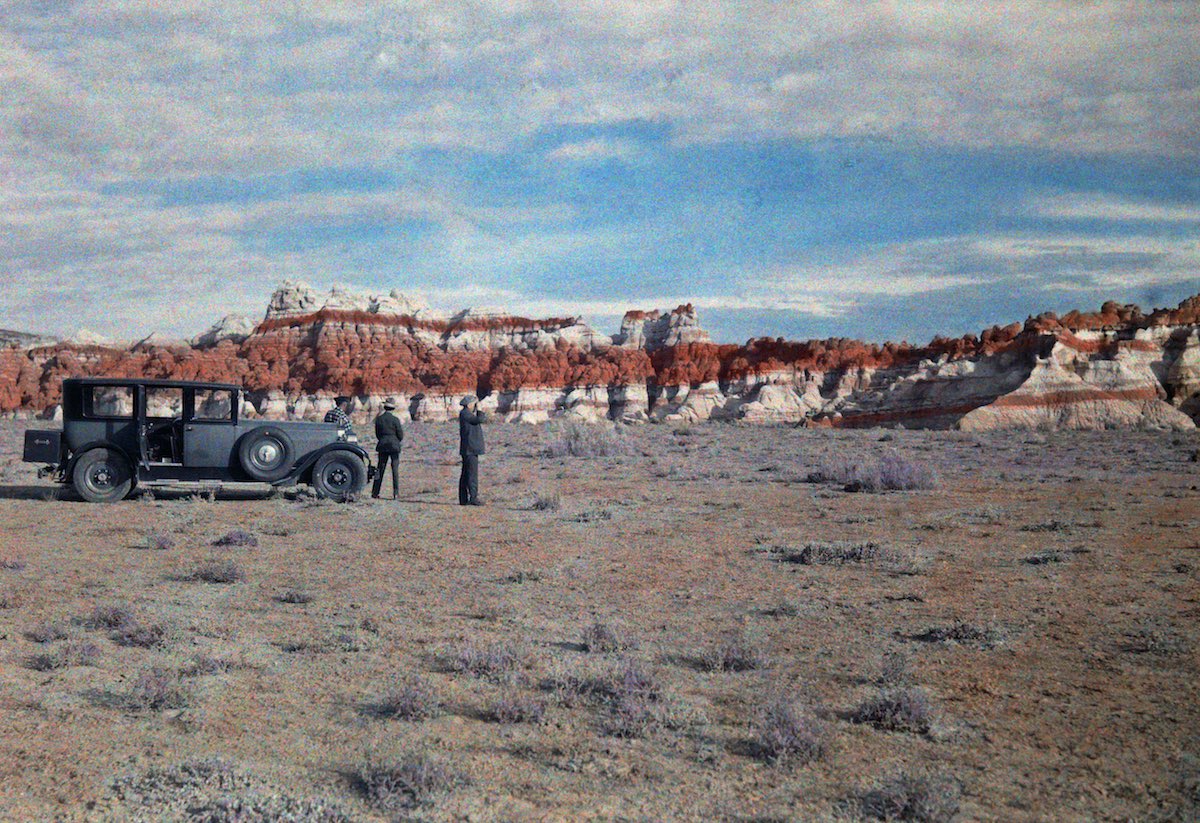
Hopi Indian Reservation – Men stand next to a car in a field and look at a nearby canyon.
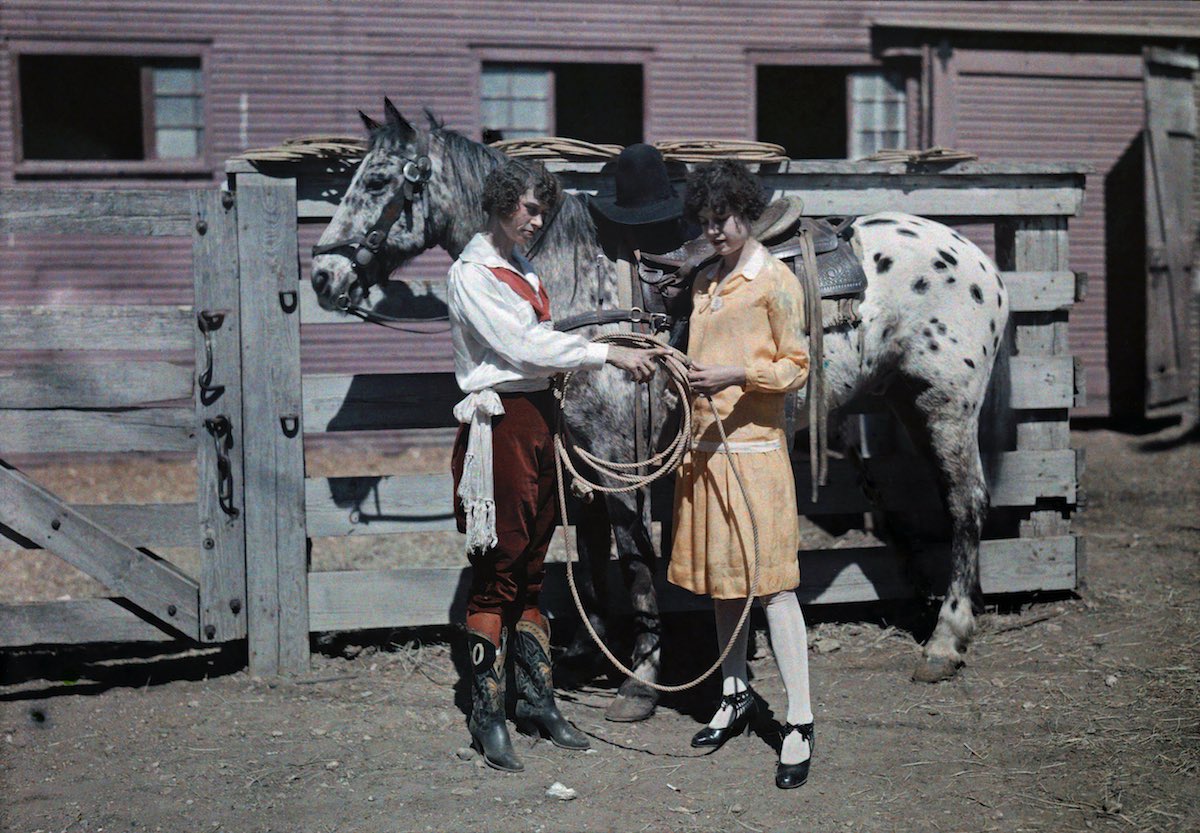
A rider shows her sister how to handle ropes, Fort Worth, Texas.
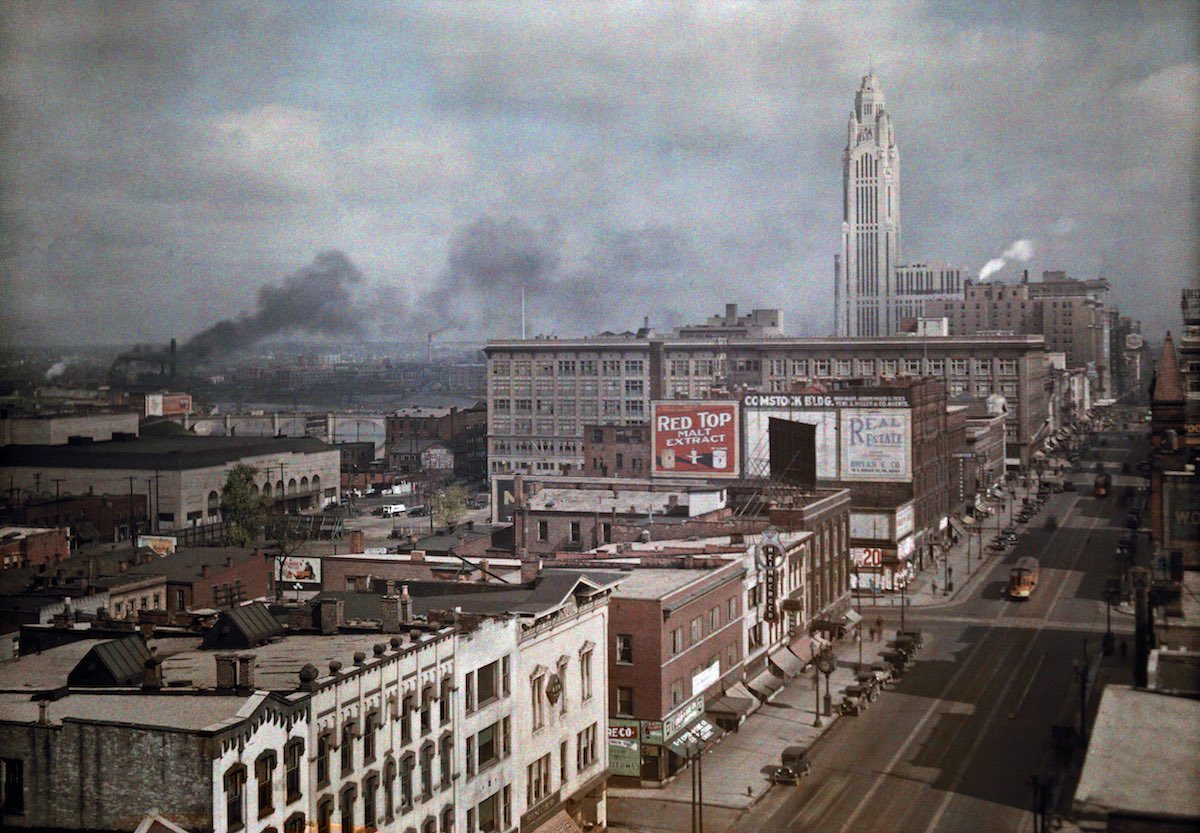
A view of the main street in the downtown area of Columbus, Ohio. Photo by Jacob J. Guyer
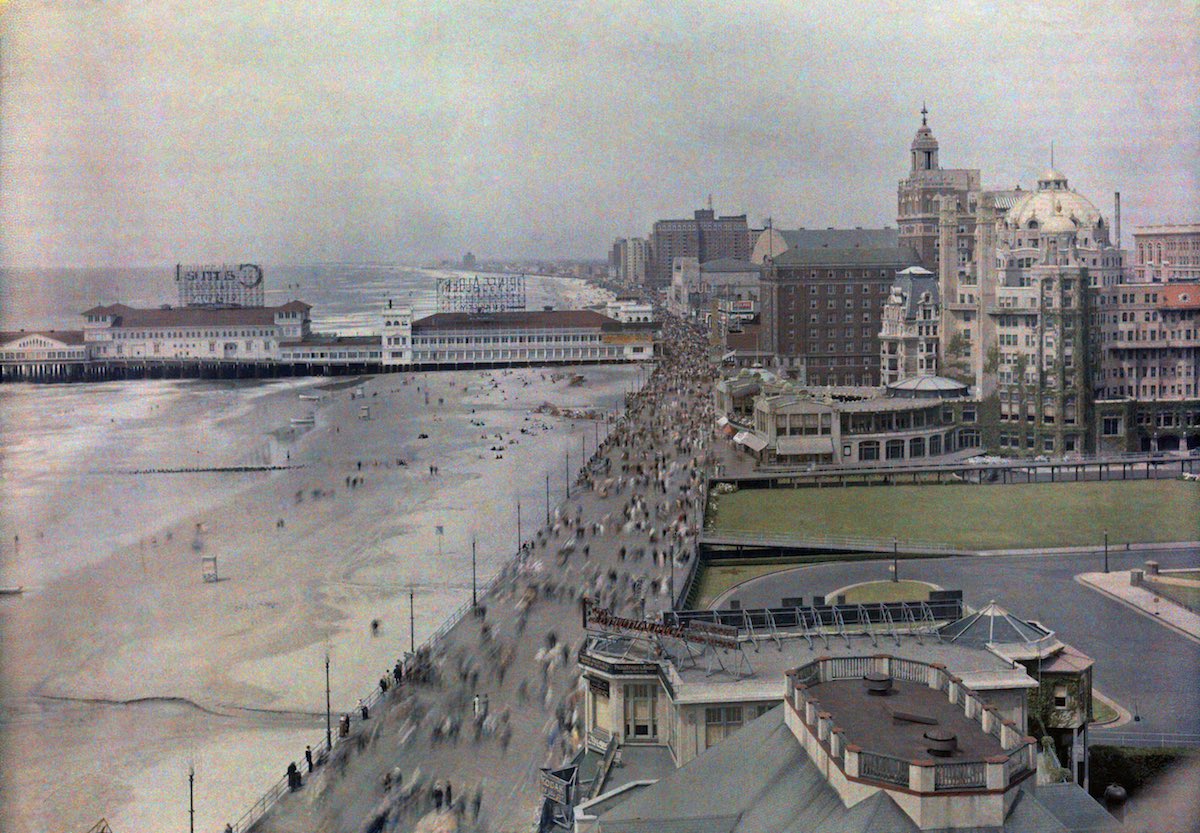
Atlantic City, New Jersey, 1920s. Panoramic views of beaches, marinas, and hotels along the waterfront. Photo by Clifton R. Adams
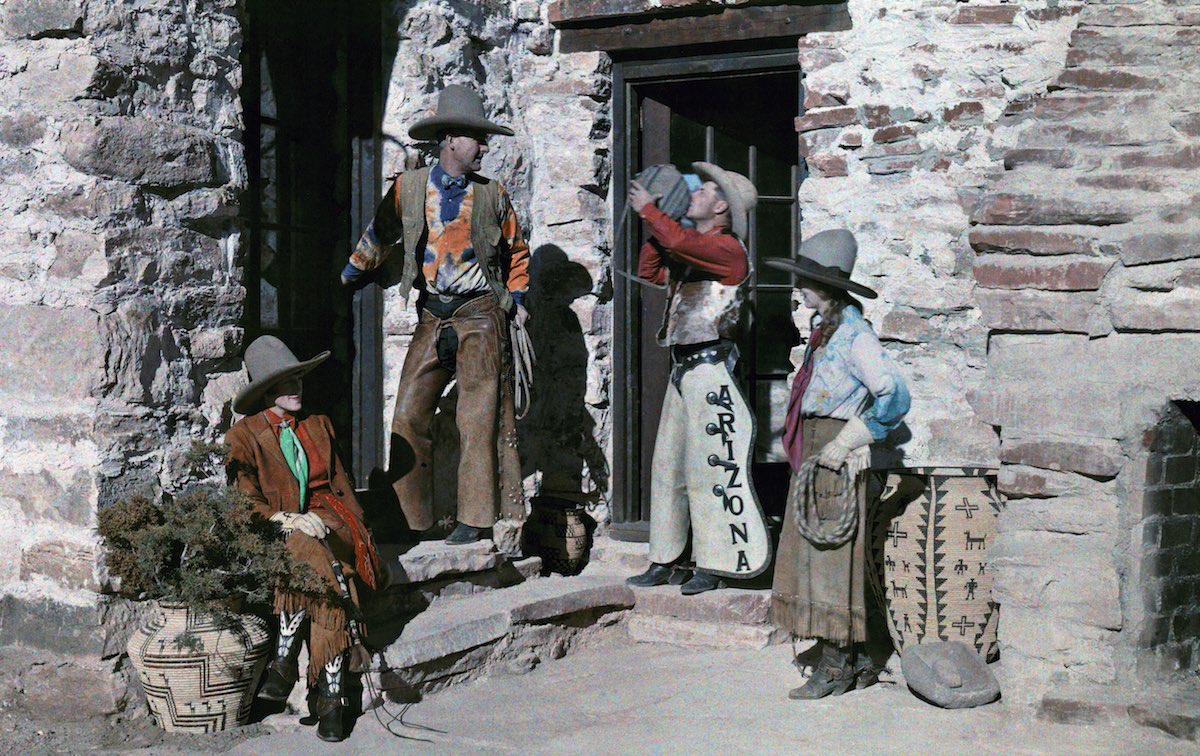
A ranch where guests can feel like cowboys in Arizona. Photo by Clifton R. Adams
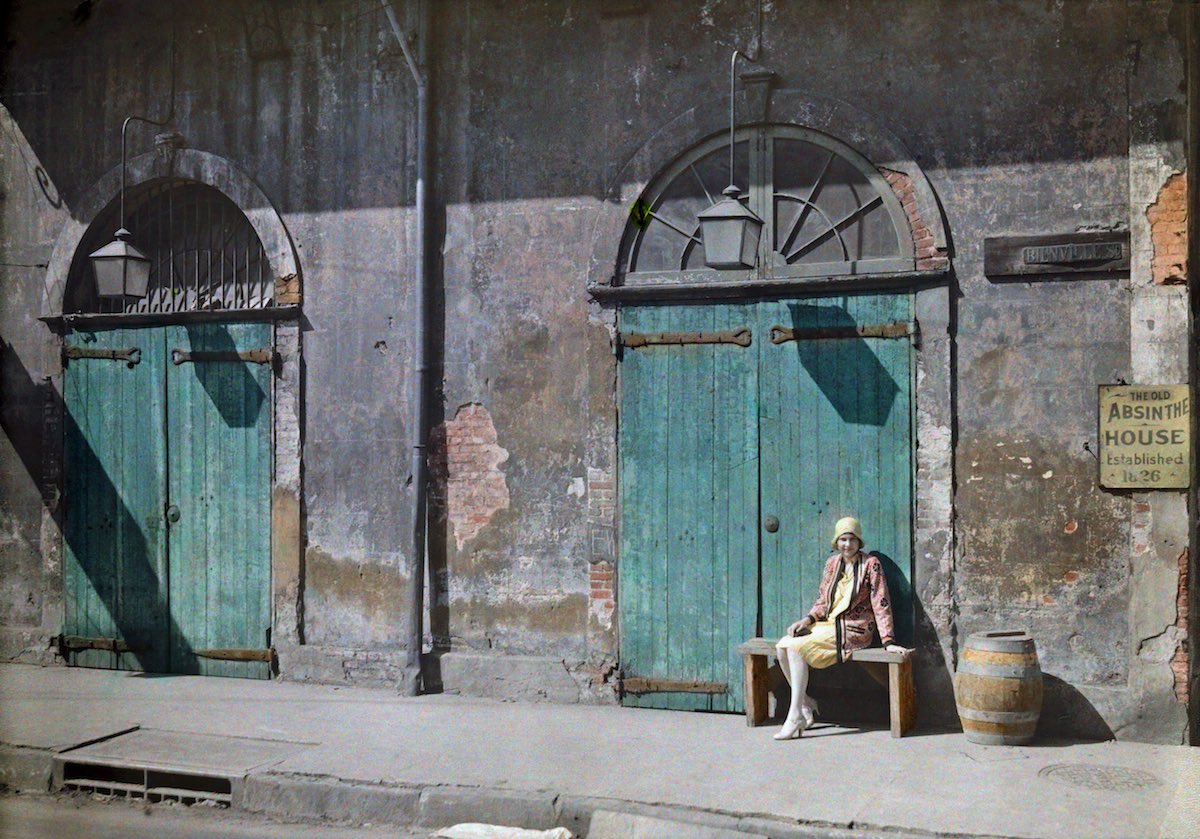
A woman sits outside the door of the Old Absinthe House in New Orleans. Photo by Edwin L. Visherd
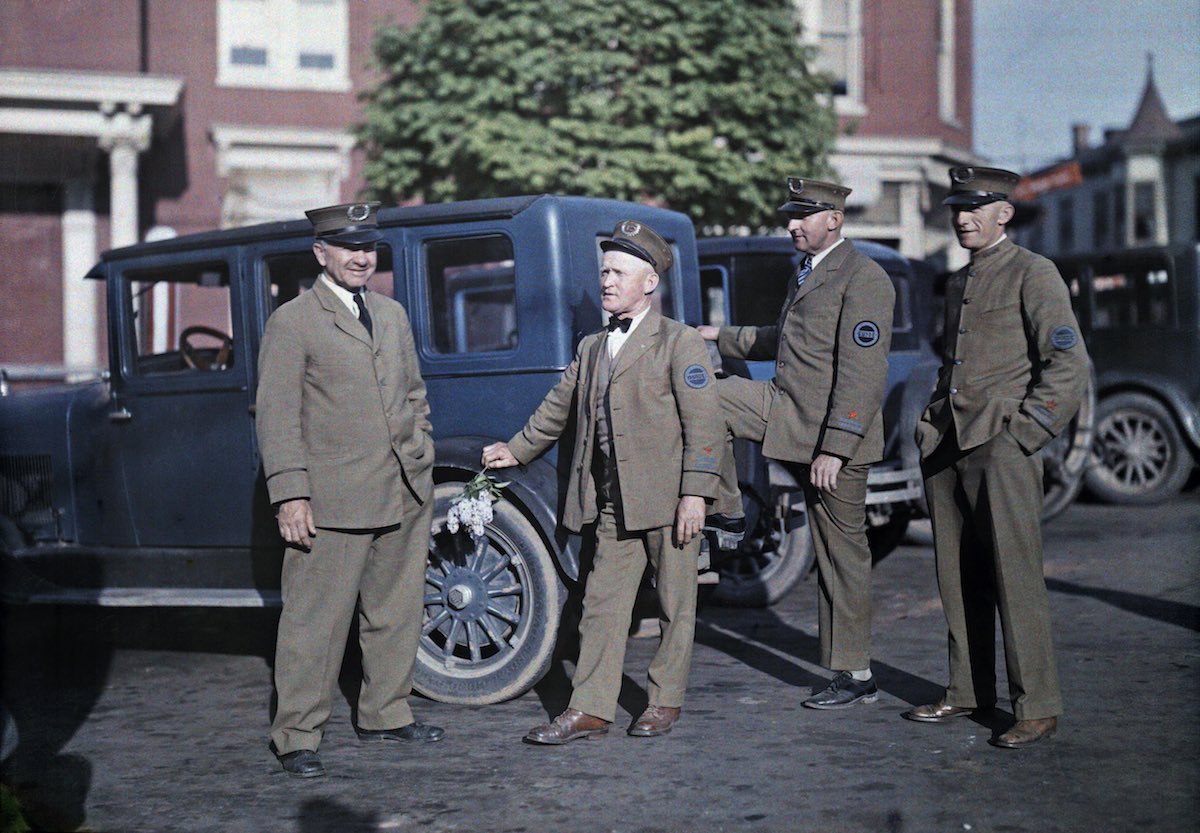
Four tour guides await tourists for a tour of the Gettysburg Battlefield, Gettysburg, PA.
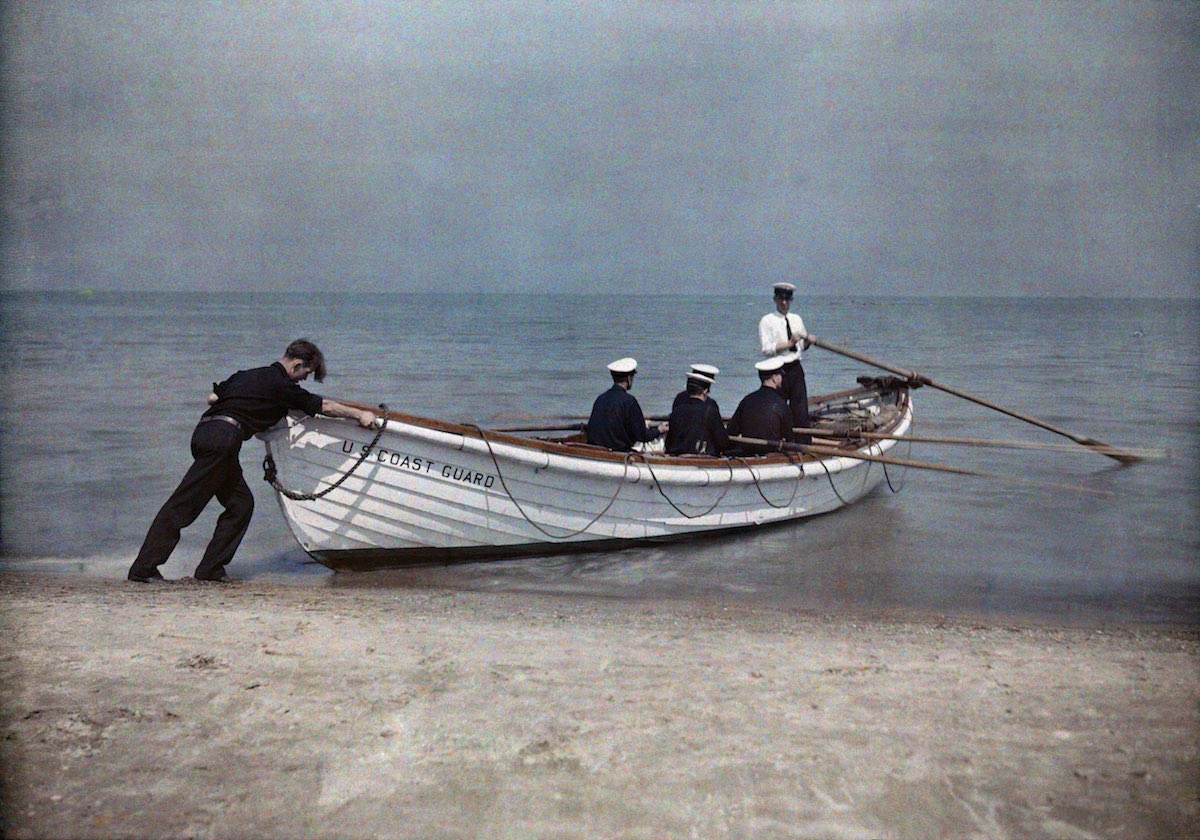
Coast Guard officers set sail in their boat. Photo by Jacob J. Guyer
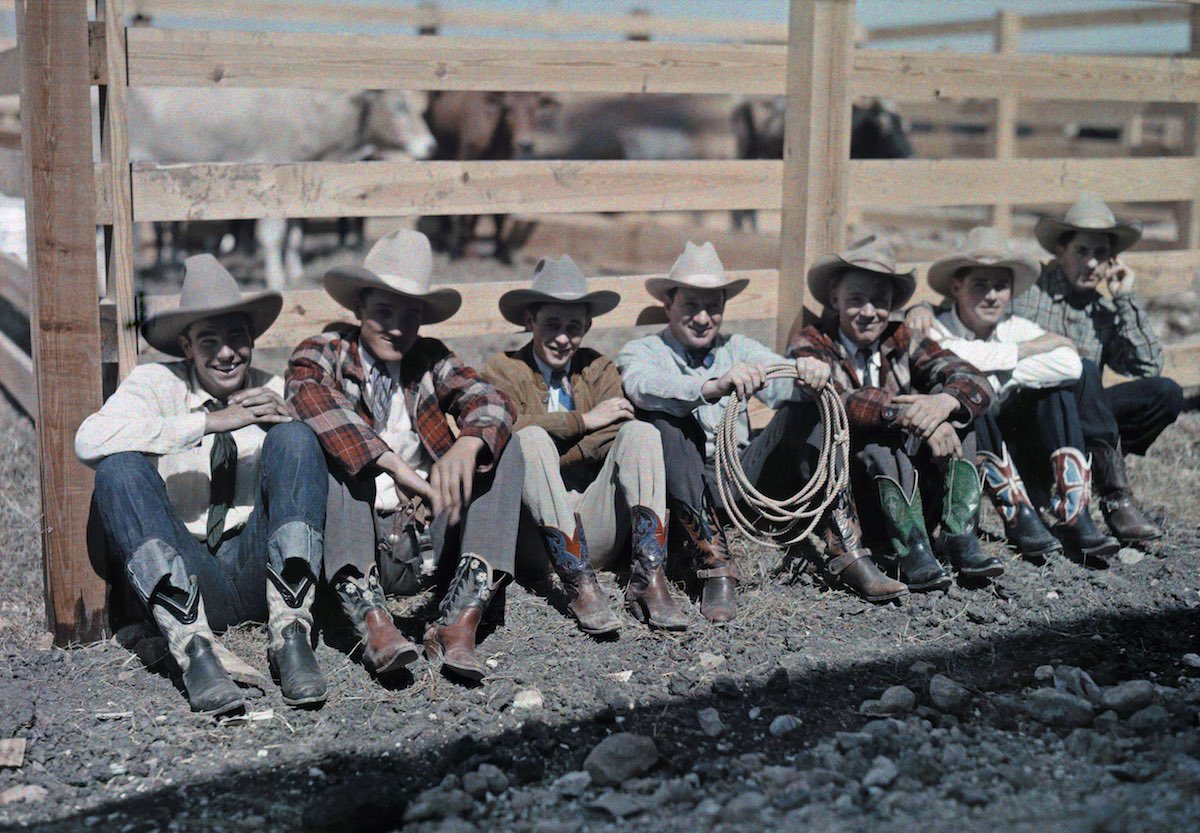
Cowboys and horseback riders sit along a fence at a rodeo, San Antonio, Texas.
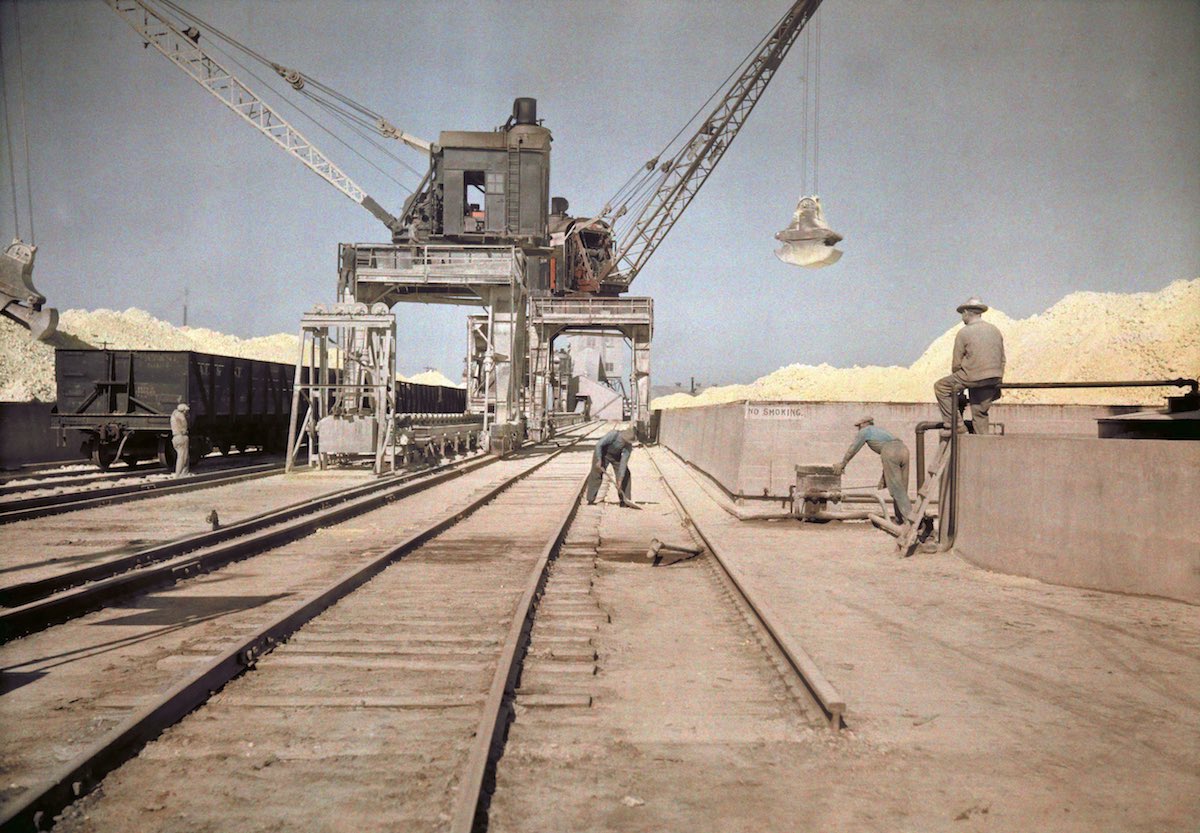
Men load bins with sulfur, Galveston, TX.
See more: Texas City explosion, 1947: Shocking pictures and video of the accident
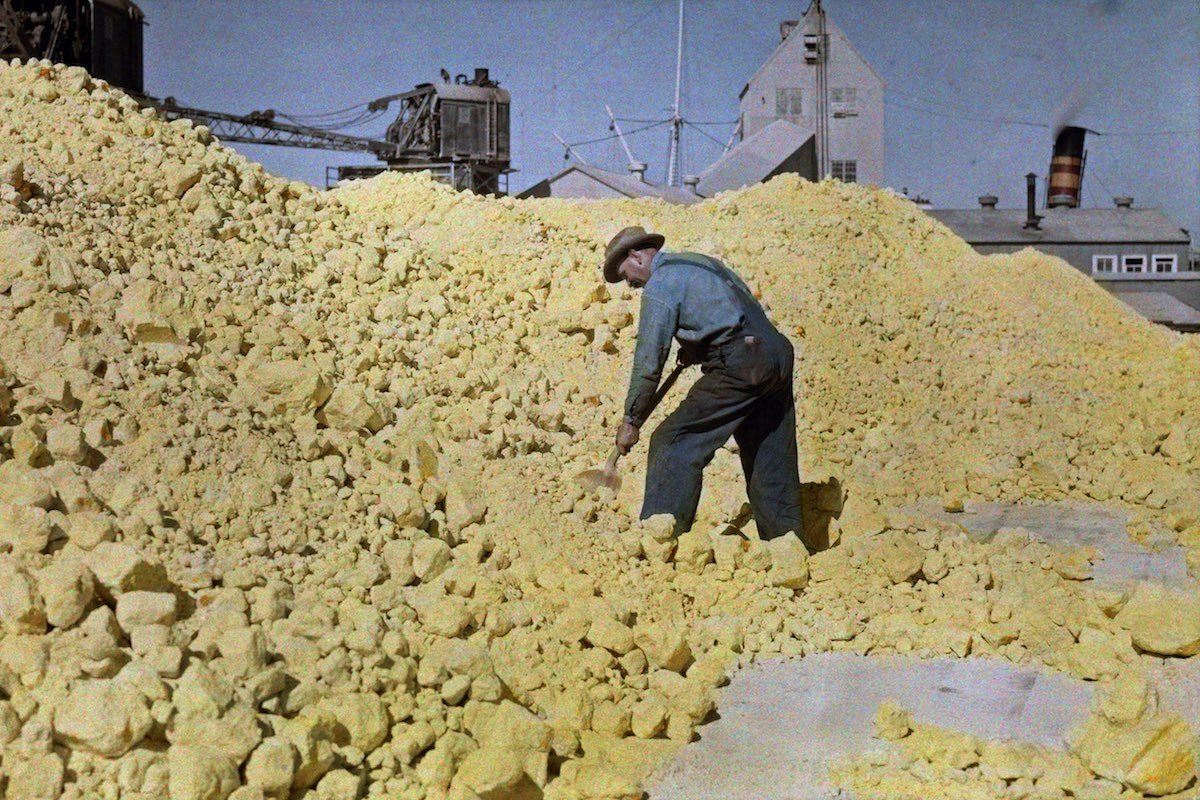
A man shovels sulfur in a warehouse near the pier, Galveston, Texas.
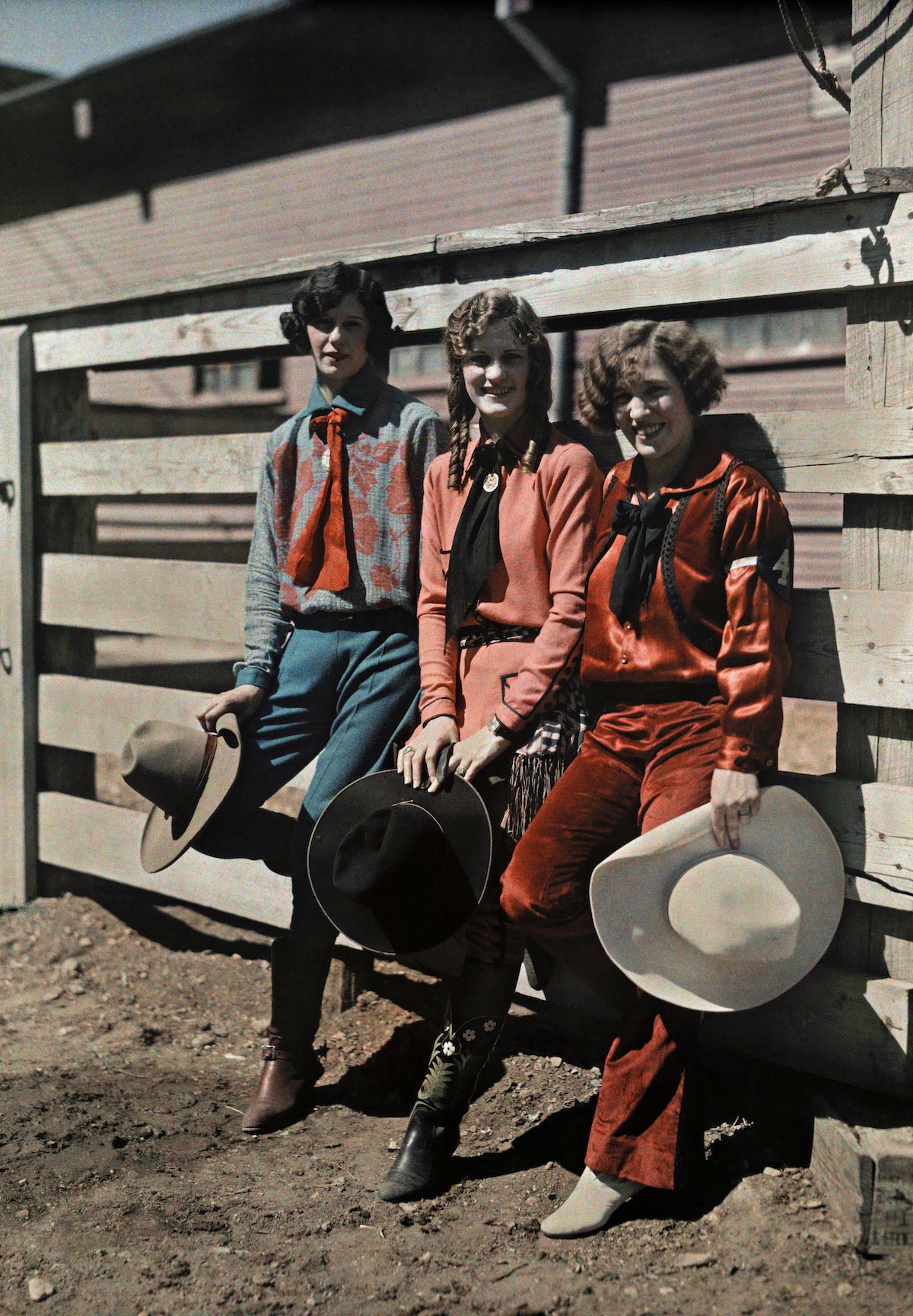
Three young women at the rodeo, Fort Worth, Texas.
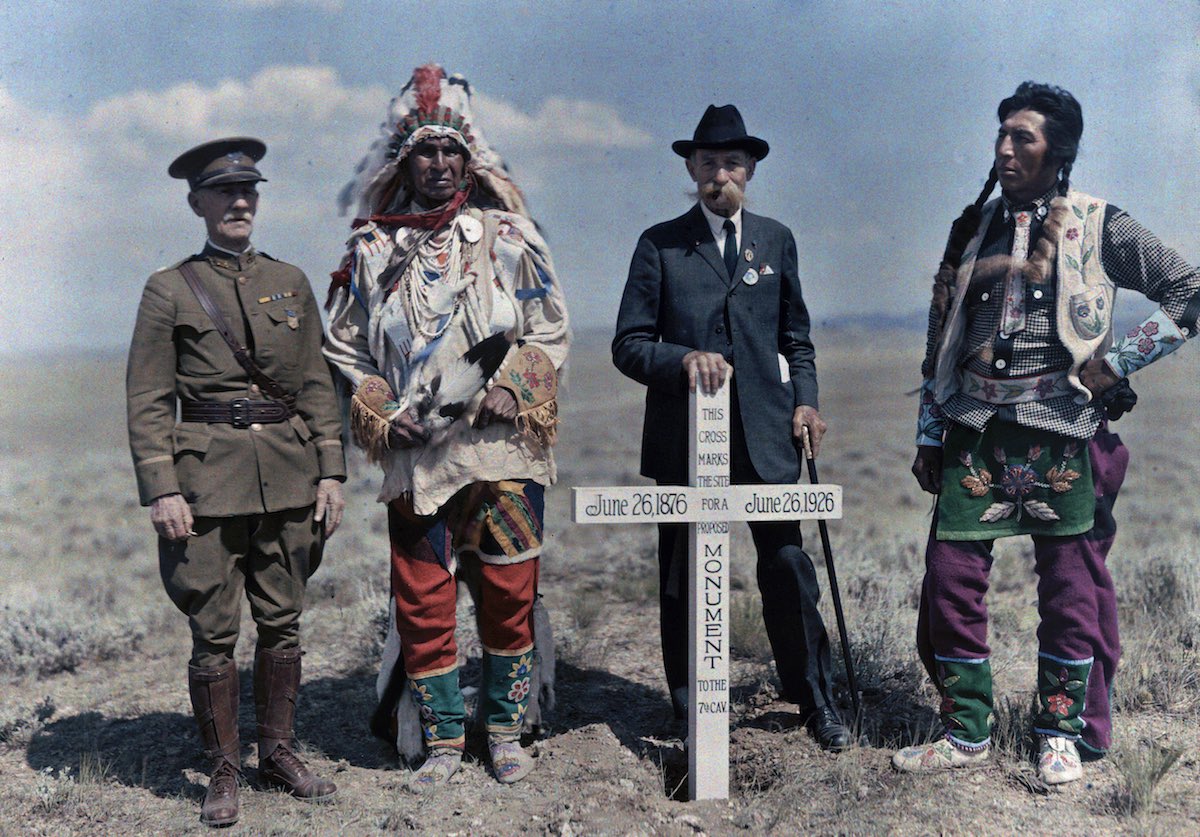
Crow Indian Reservation, Montana – Men stand next to the monument to the Seventh Cavalry.
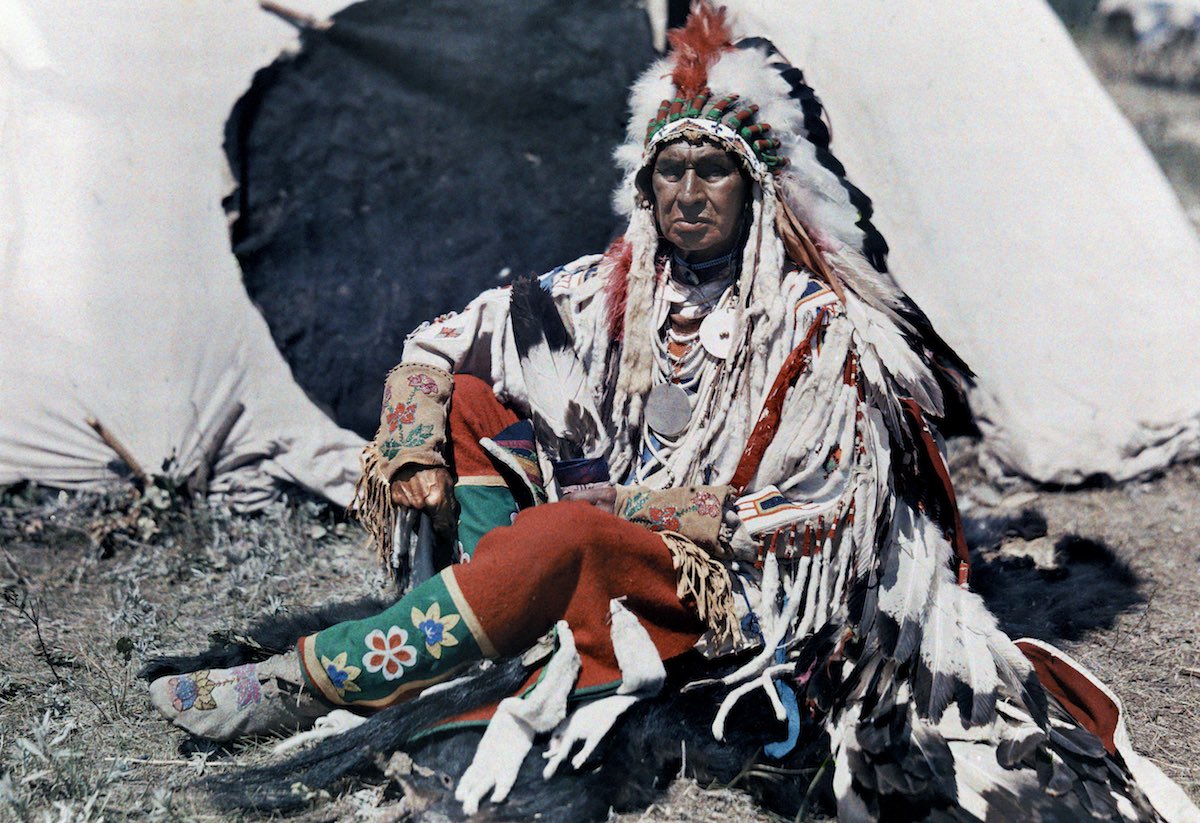
Head of the Crowe Indian Reservation, Montana
Сообщение Early color pictures of the American lifestyle in the 1920s появились сначала на Old Pictures.
]]>Сообщение TOP 50 legendary LIFE magazine photographs появились сначала на Old Pictures.
]]>LIFE magazine always managed to onboard the best photographers. Starting from the first issue that hit the shelves on November 23, 1936, the continuously surprised the public with their sharp and unforgettable photographs. No surprise, the LIFE magazine was the top illustrated US publication for decades.
LIFE magazine was published weekly from 1936 to 1972. Nonetheless, competitors (TV, mostly) took their readers’ share and forced the glorious publication to switch to a monthly basis. The magazine stood tall from 1978 to 2000.
But we still remember the LIFE magazine! We continue to dig through its archives and find new and new amazing photographs that deserve the fresh publication. This publication covers the LIFE magazine photographs that became an integral part of the photo history. Many of these pictures starred the 100 most important pictures in history.
Here you can check our selection of the Best LIFE magazine’s covers.
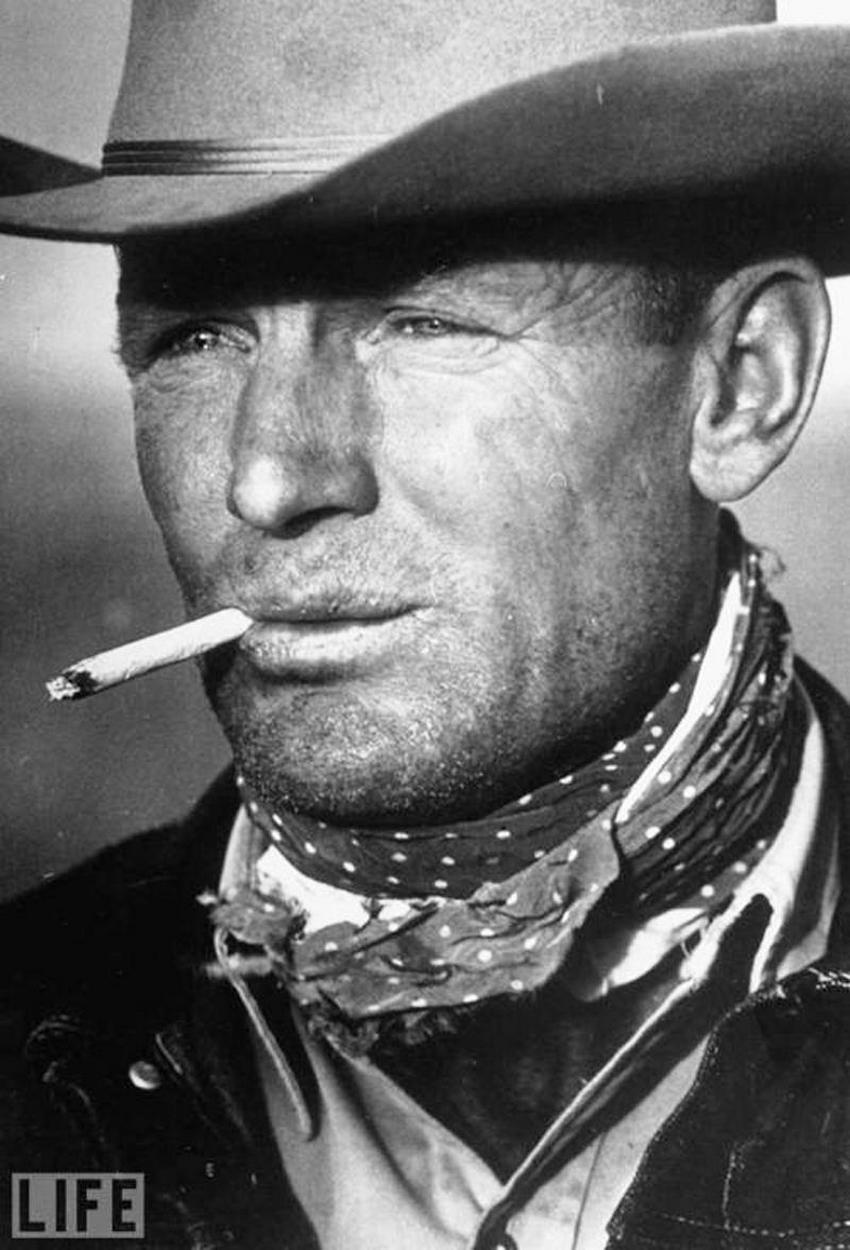
The Marlboro Man.
Photo by Leonard McCombe, 1949.
39-year-old Texas cowboy Clarence Hailey. This image became the best-known cigarette advertisement.
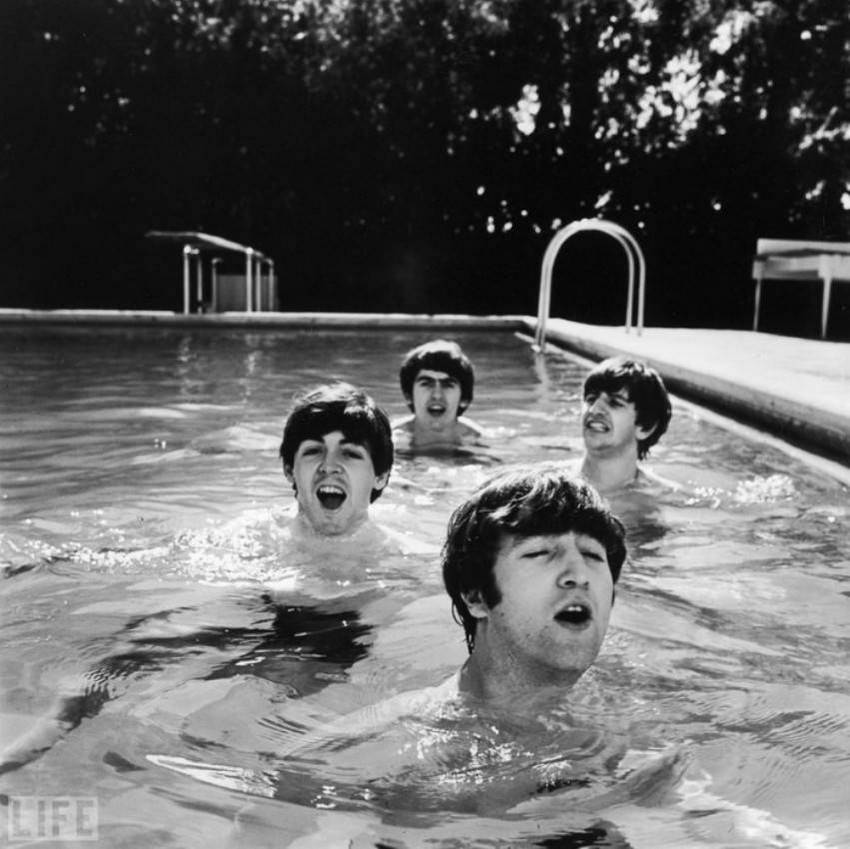
The Beatles in Miami
Photo by John Loengard, 1964.
The Beatles on their famous American Tour. The pool water was quite cold that day, as Ringo’s grimace tells.
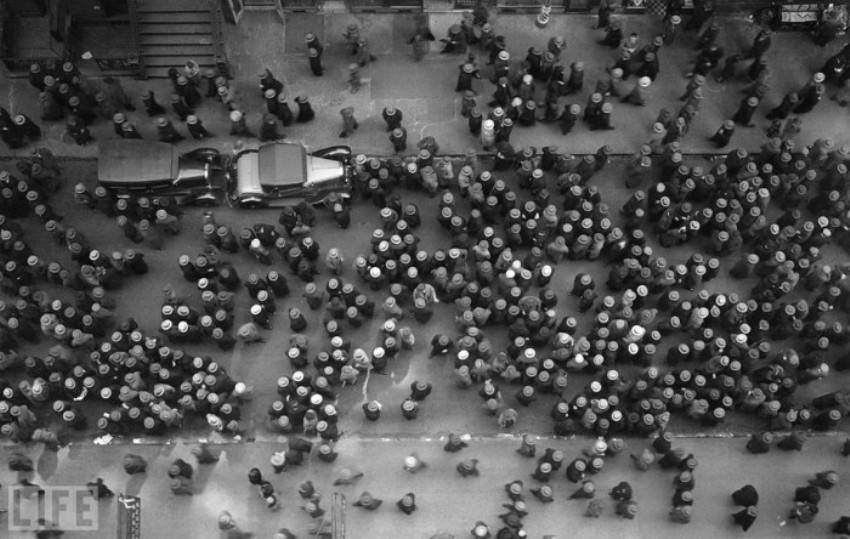
Sea of Hats
Photo by: Margaret Bourke-White, 1930.
A crowd wearing hats on the streets of New York. Interestingly, Margaret Bourke-White captured this image before the LIFE publication started. It looks like magazine editors took this picture and published it later just for its artistic value.
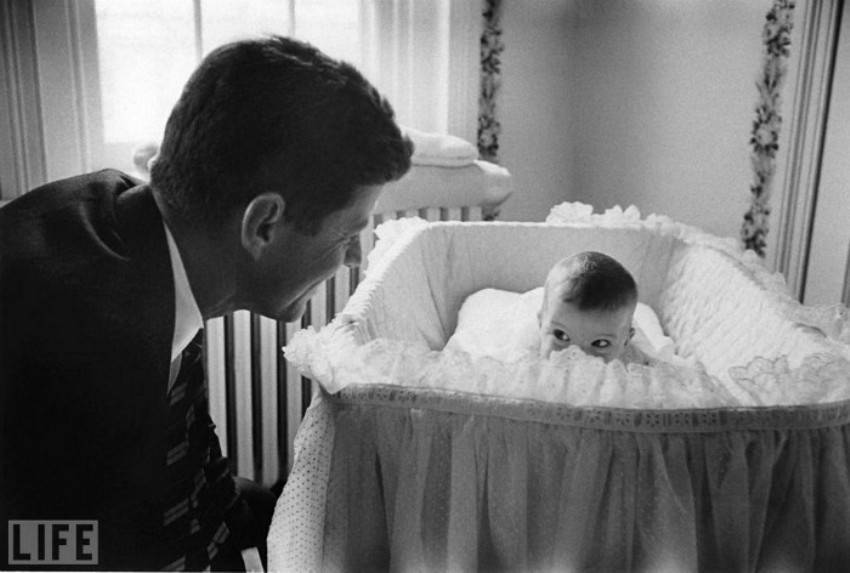
Peek-A-Boo
Photo by Ed Clark, 1958.
John F. Kennedy plays hide-n-seek with his daughter Caroline.
Read more: Rosemary Kennedy: the tragedy of JFK’s sister lobotomy in pictures.
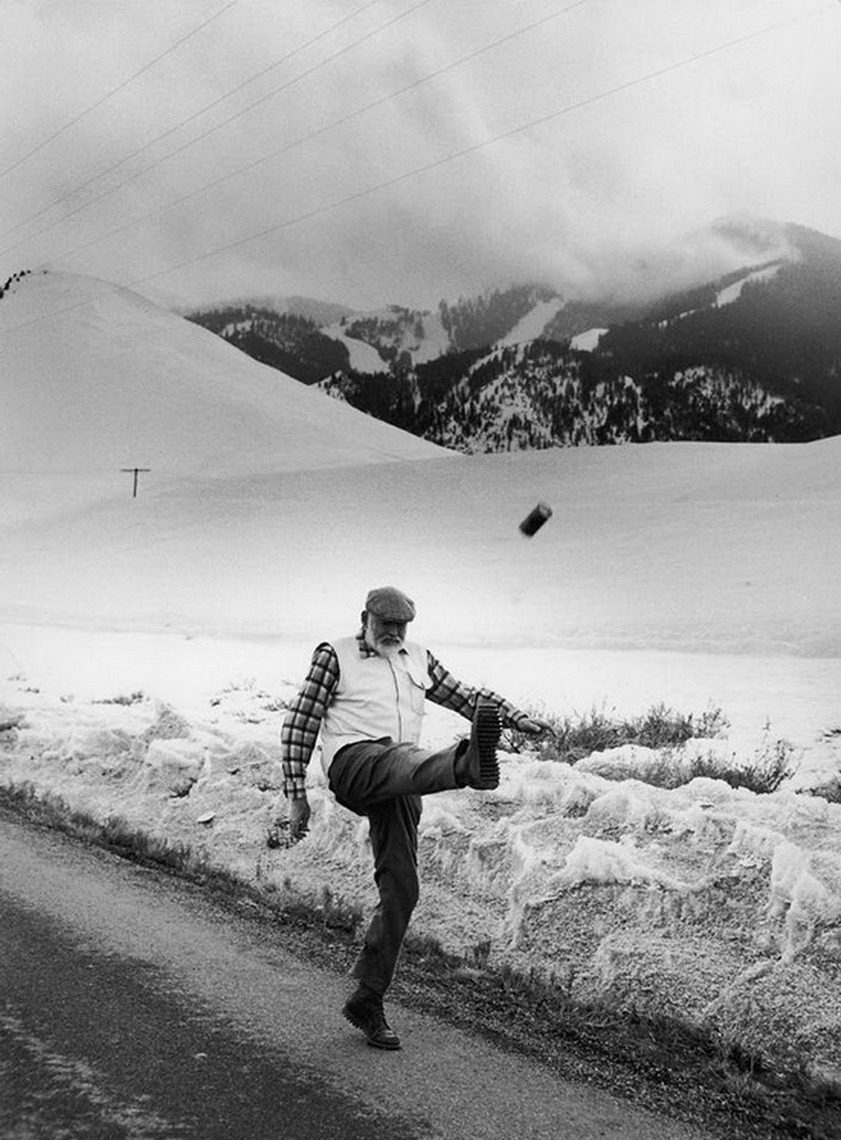
Lion in Winter
Photo by: John Bryson, 1959.
Hemingway near his home in Ketchum, Idaho. This picture was featured in our Hemingway and Alcohol selection.
In 20 months, Ernest Hemingway will pass away.
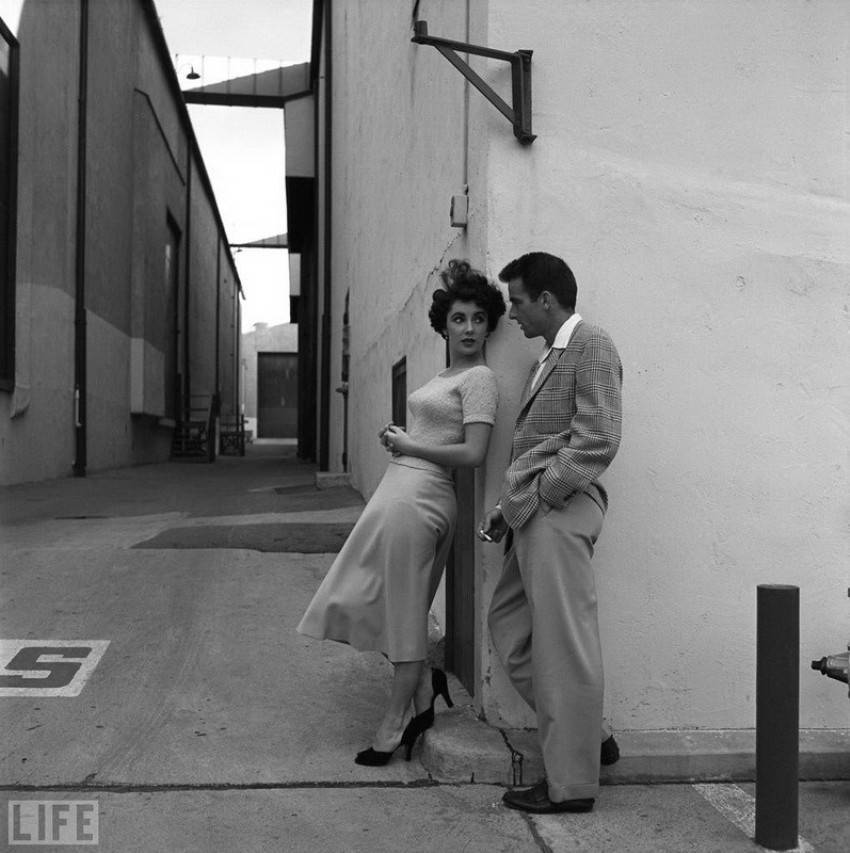
Liz and Monty
Photo by Peter Stackpole, 1950.
Elizabeth Taylor and Montgomery Clift take a break during filming “A Place in the Sun” at Paramount Studios.
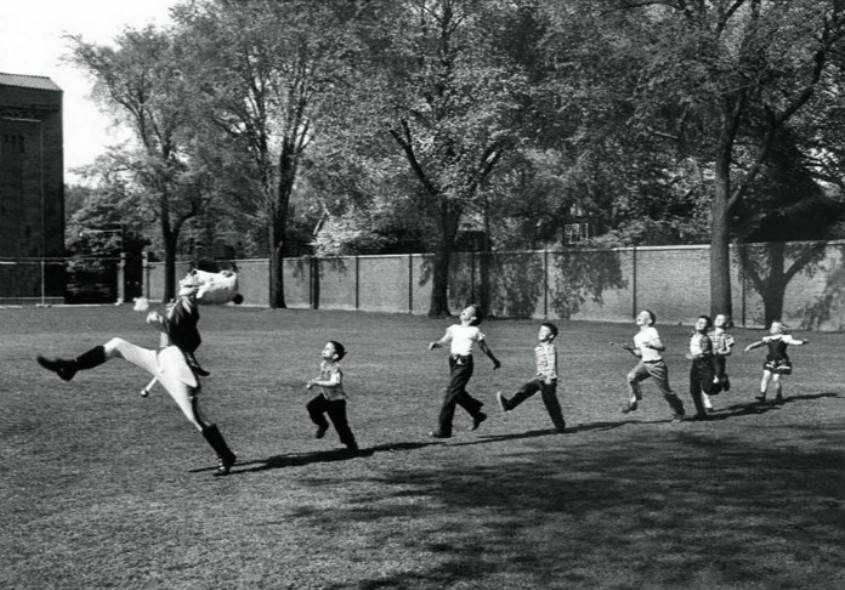
Pied Piper of Ann Arbor
Photo by: Alfred Eisenstaedt, 1950.
A drummer from the University of Michigan marches with children. See more beautiful photographs by Alfred Eisenstaedt.
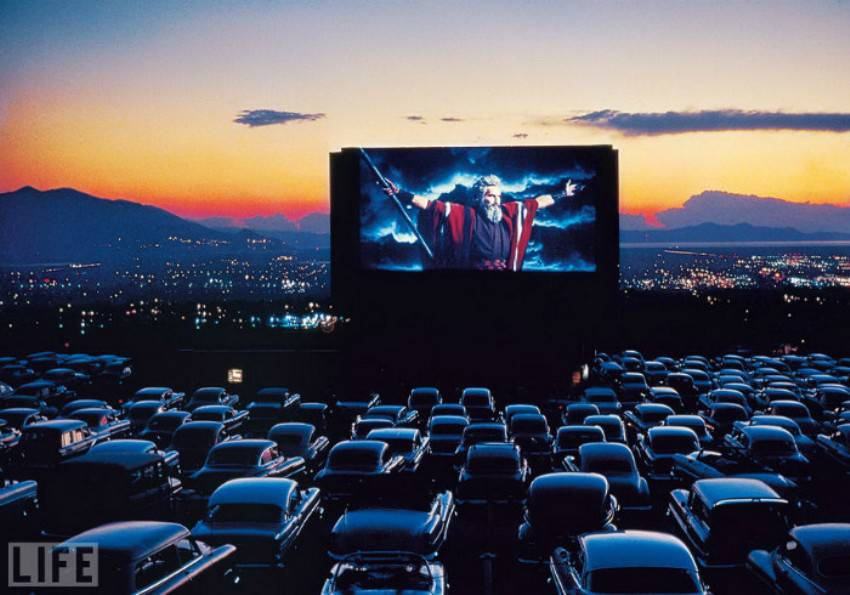
Parting the Sea in Salt Lake City
Photo by J.R. Eyerman, 1958.
The auto movie theater in the capital of Utah, Salt Lake City. Moses, in front of the parting Red Sea in the film “The Ten Commandments.”
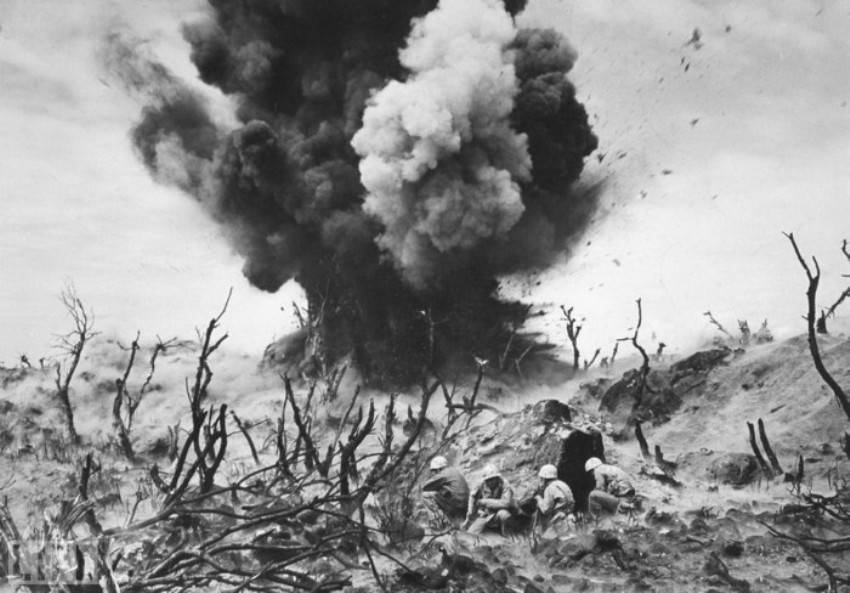
The sand of Iwo Jima
Photo by: W. Eugene Smith, 1945.
American Marines during the Battle of Iwo Jima in the spring of 1945. See more amazing WW2 photography by Eugene Smith.

Picasso and Centaur
Author of the photo: Gjon Mili, 1949.
Ephemeral drawing in the air.
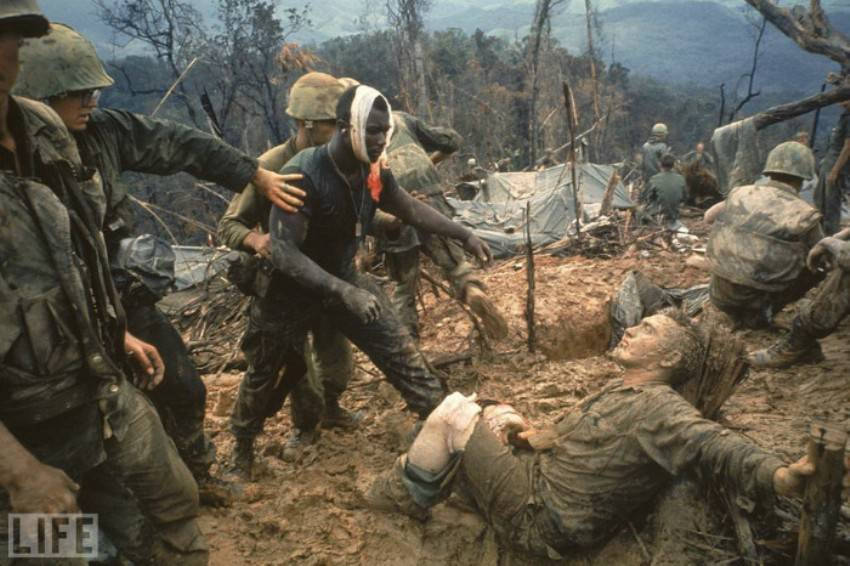
Reaching Out
Photo by Larry Burrows, 1966.
Marines during the Vietnam War. The black soldier reaches out to his wounded, white comrade.
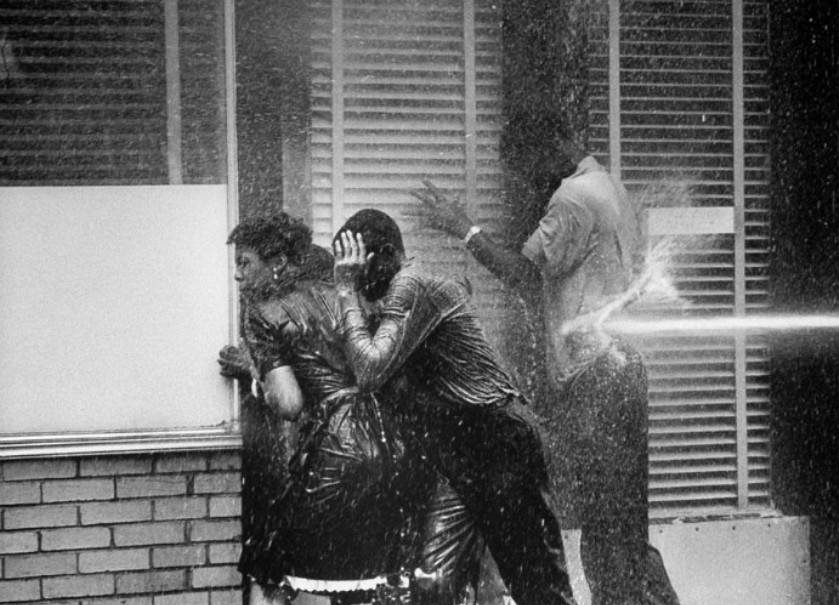
Meeting peace With fire hoses.
Photo by: Charles Moore, 1963.
Fire hoses were used to disperse a peaceful anti-segregation rally in Birmingham, Alabama.
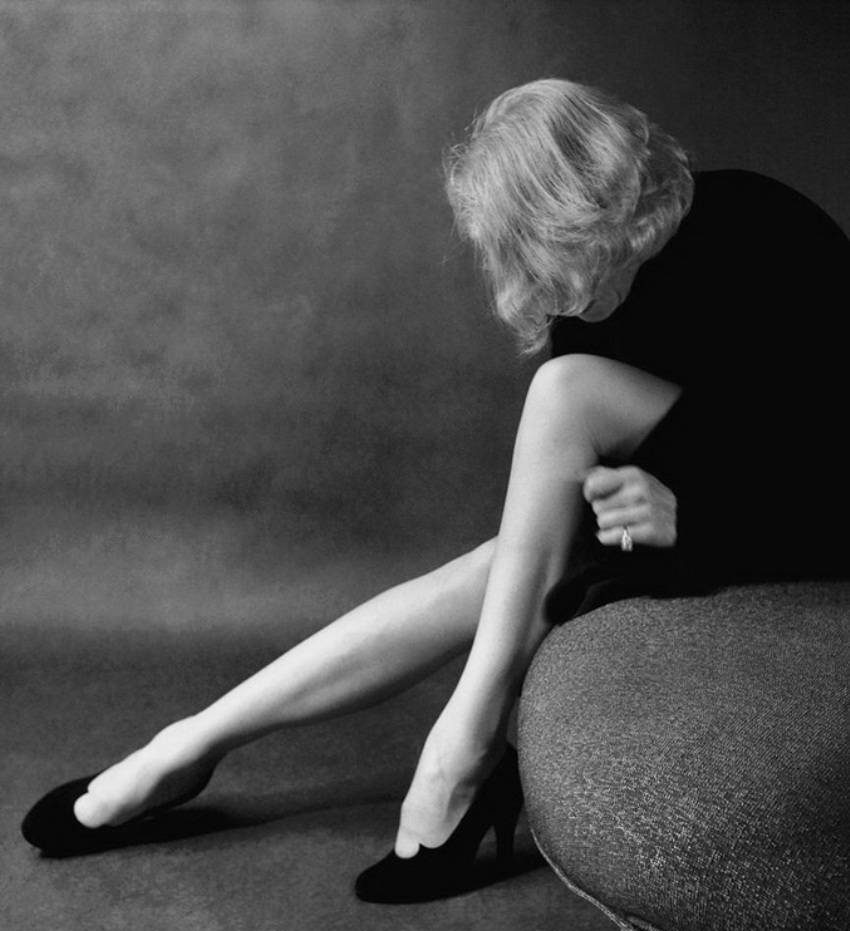
Marlene Dietrich
Photo by: Milton Greene, 1952.
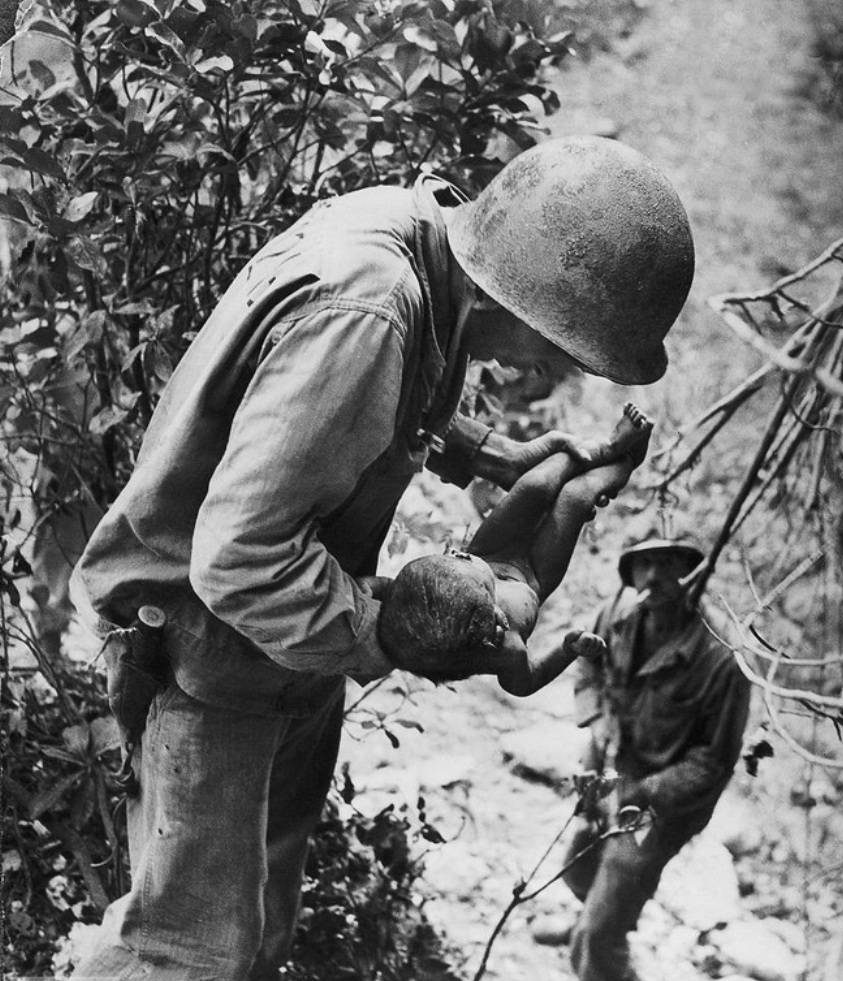
Littlest Survivor
Photo by W. Eugene Smith, 1943.
Another WW2 masterpiece of Eugene Smith. During World War II, hundreds of Japanese were besieged on Saipan’s island and committed mass suicide to avoid Americans’ surrender. When American Marines examined the island, they found a barely alive child in one of the caves. Here’s a story behind this stunning photograph.
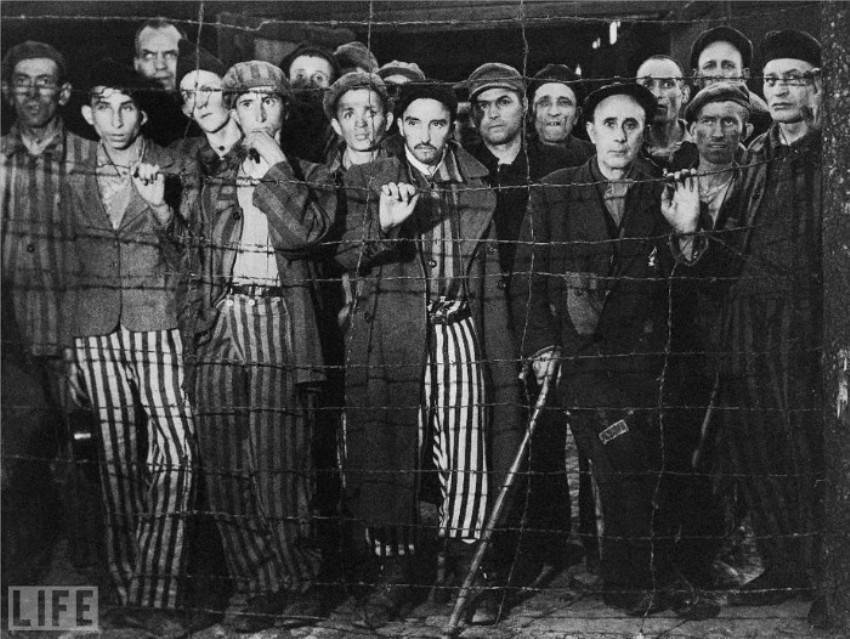
Liberation of Buchenwald
Photo by: Margaret Bourke-White, 1945.
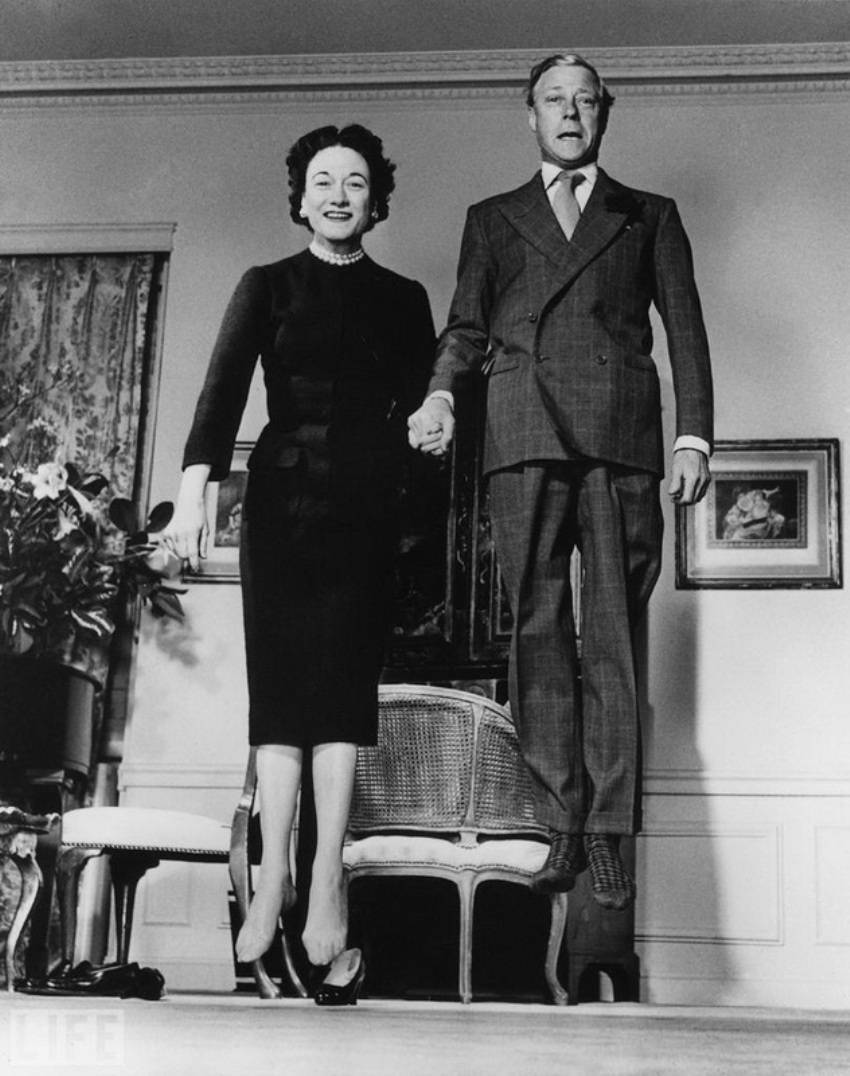
Jumping Royals
Photo by Philippe Halsman, 1959.
Duke and Duchess of Windsor.
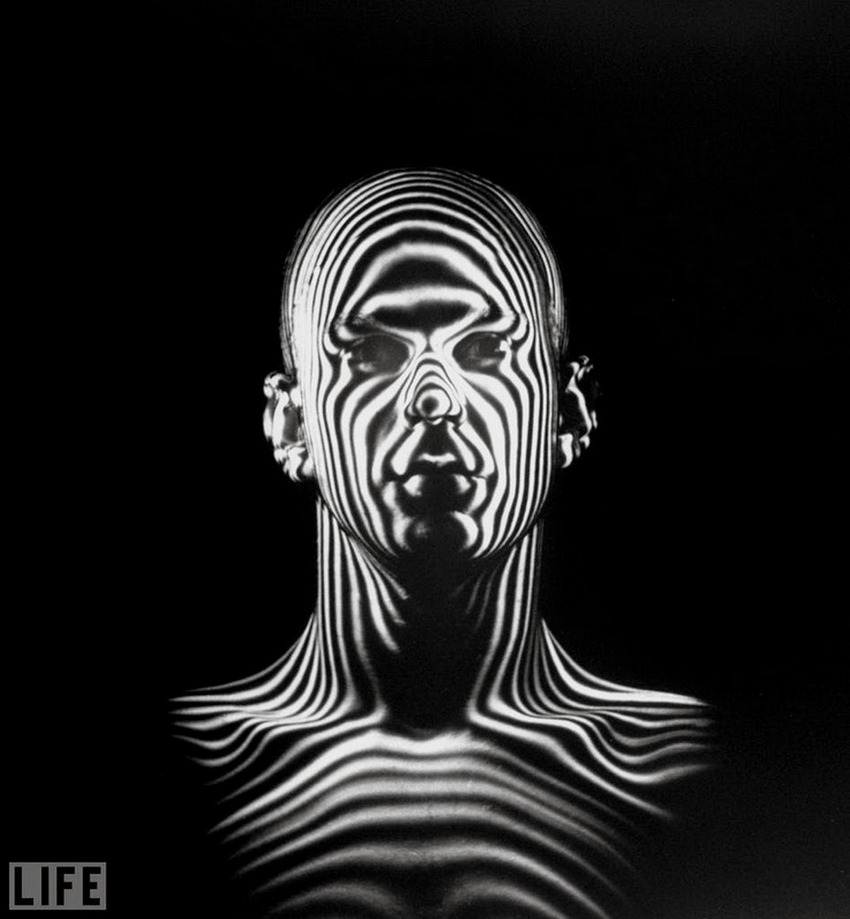
Jet Age Man
Photo by Ralph Morse, 1954.
Measurement of the pilot’s anthropological data with special lighting from alternating bands of light and shadow of various thicknesses. That was the key ingredient for the new flight helmet design by the US Air Force.
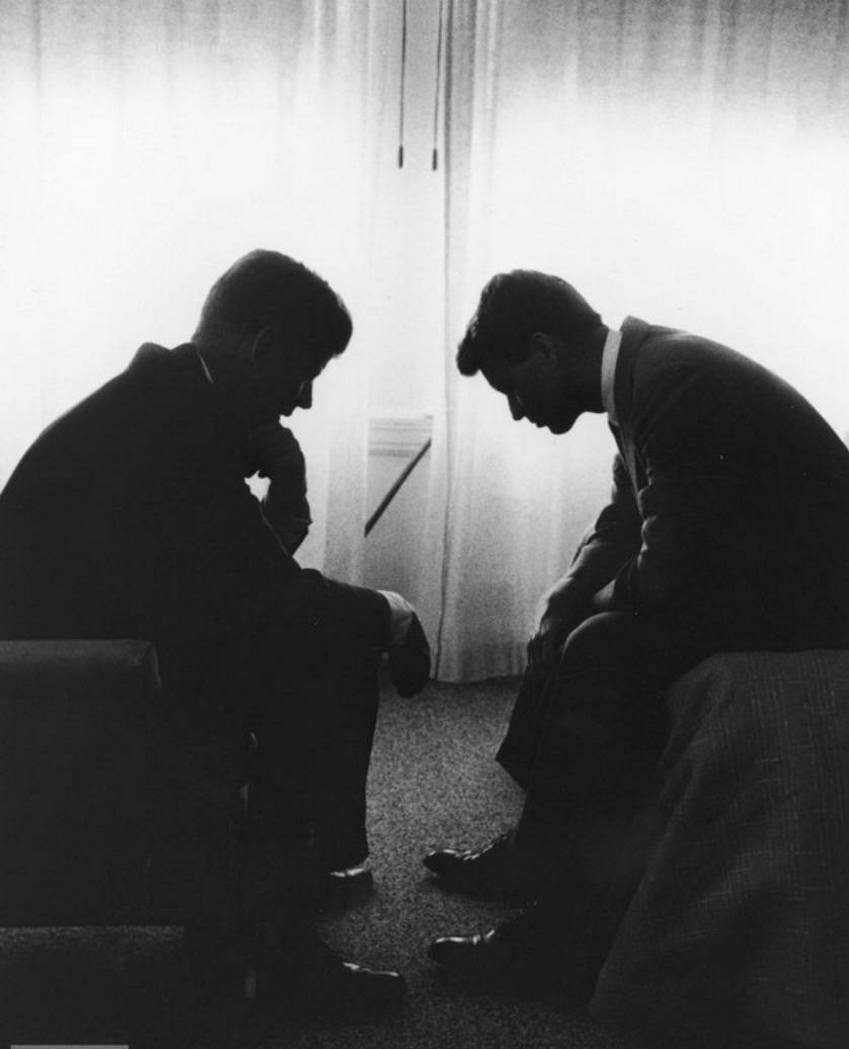
Jack and Bobby
Photo by Hank Walker, 1960.
John F. Kennedy (still a Senator) with his brother Robert at a hotel during the Democratic convention in Los Angeles.
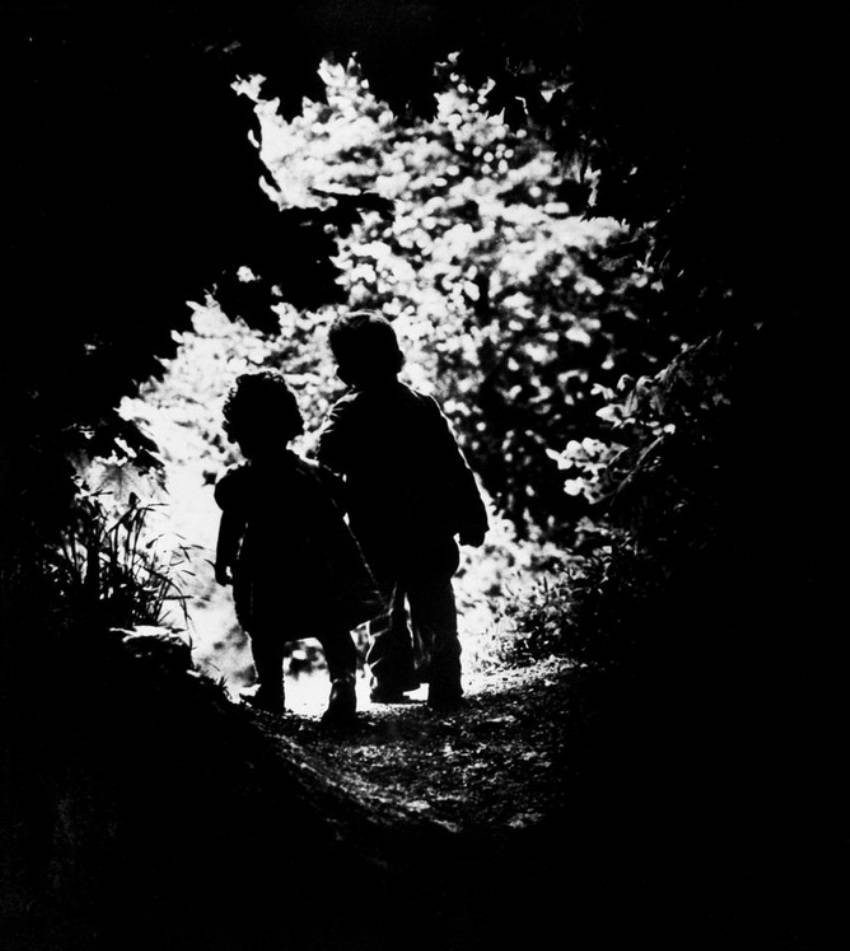
Into the Light
Photo by: William Eugene Smith, 1946.
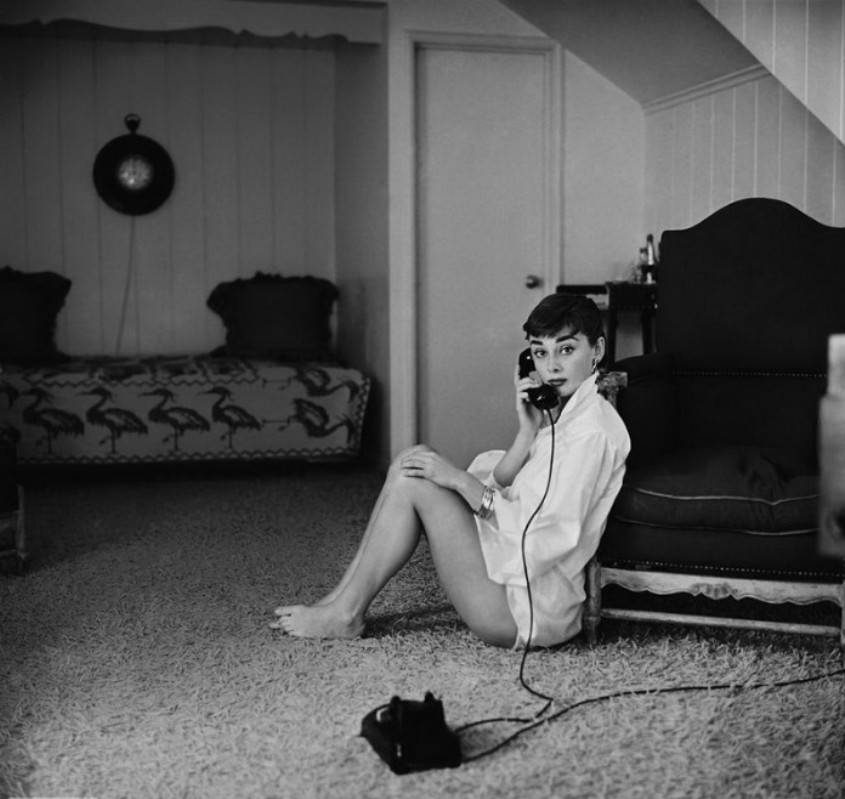
Ingenue Audrey
Photo by: Mark Shaw, 1954.
25-year-old star Audrey Hepburn while filming Roman Holiday.
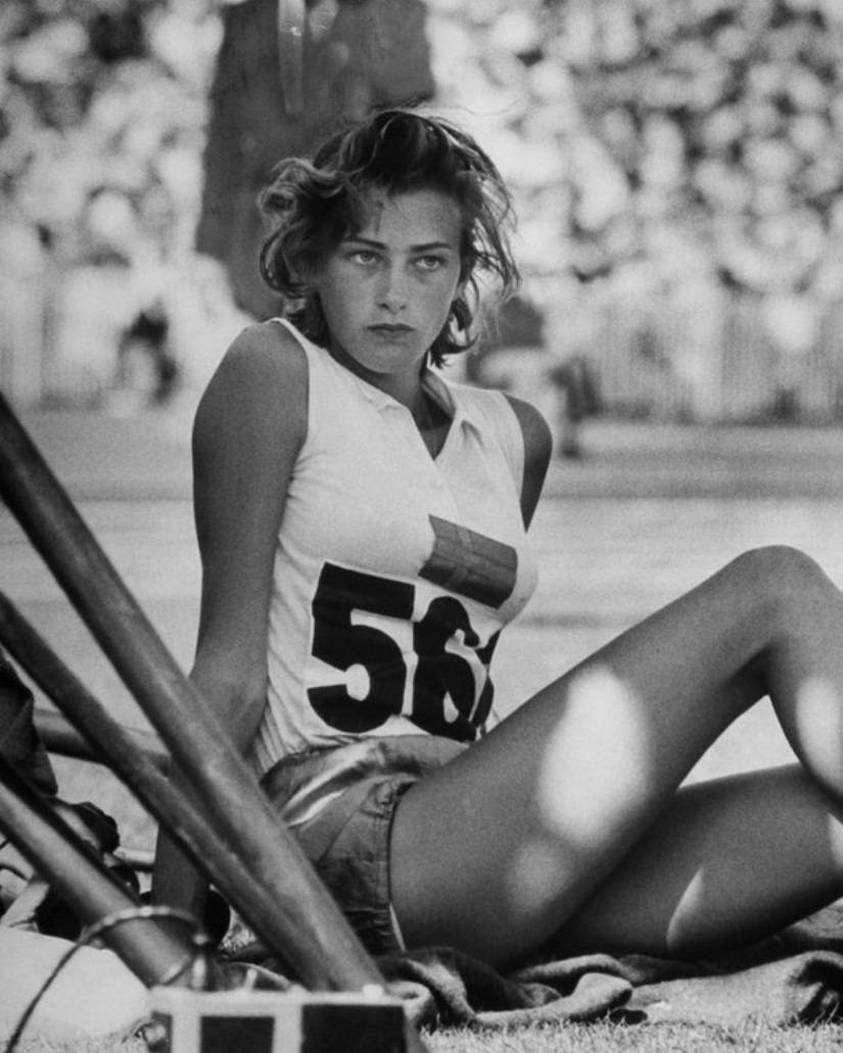
Gunhild Larking
Photo by George Silk, 1956.
Swedish high jumper Gunhild Larking at the 1956 Olympic Games in Melbourne.
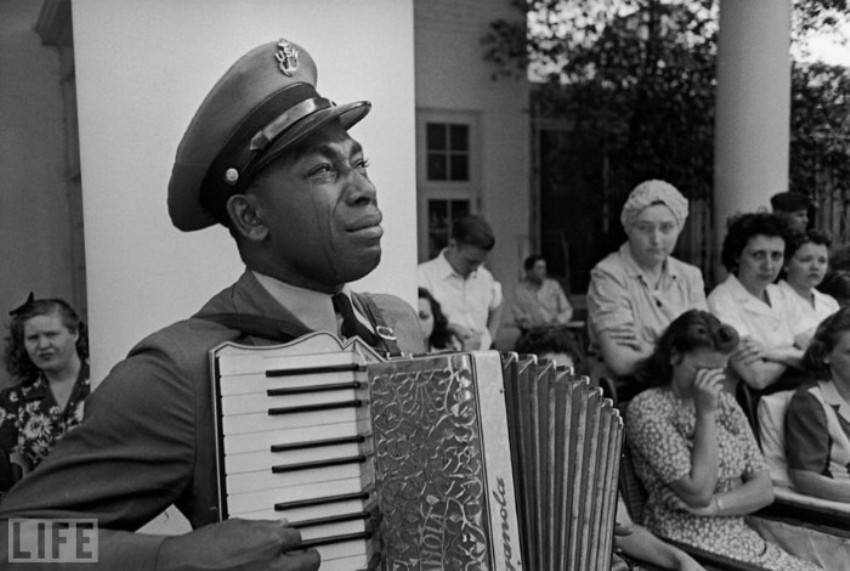
Goin’ Home
Officer Graham Jackson plays the song “Goin ‘Home” at President Roosevelt’s April 12, 1945 funeral.
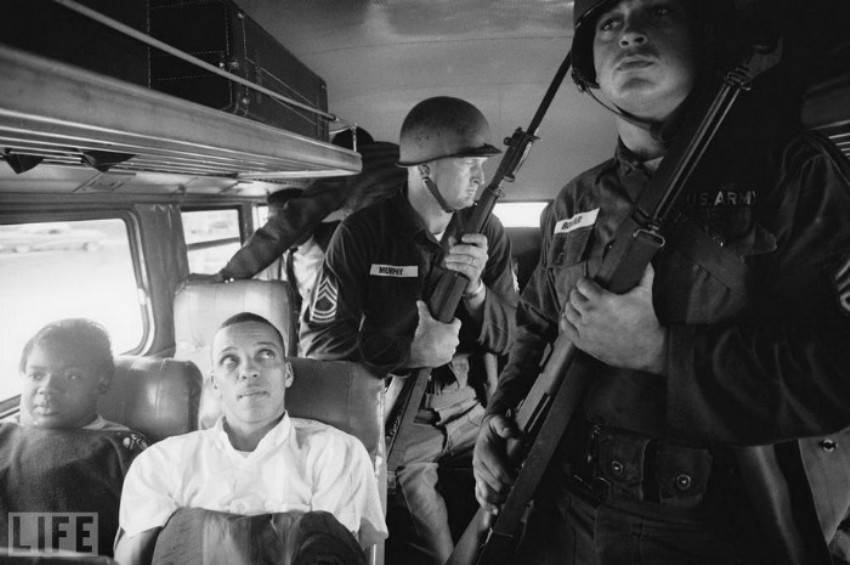
Freedom Riders
Photo by Paul Schutzer, 1961.
“Riders of Freedom” called the joint bus trips of black and white activists who protested against the violation of black people’s rights in the southern states of the United States. In 1961, activists rented buses and traveled around the southern states. No surprise, they were repeatedly attacked and arrested by southern whites. During a trip from Montgomery, Alabama, to Jackson, Mississippi, National Guard soldiers were assigned to protect the riders.
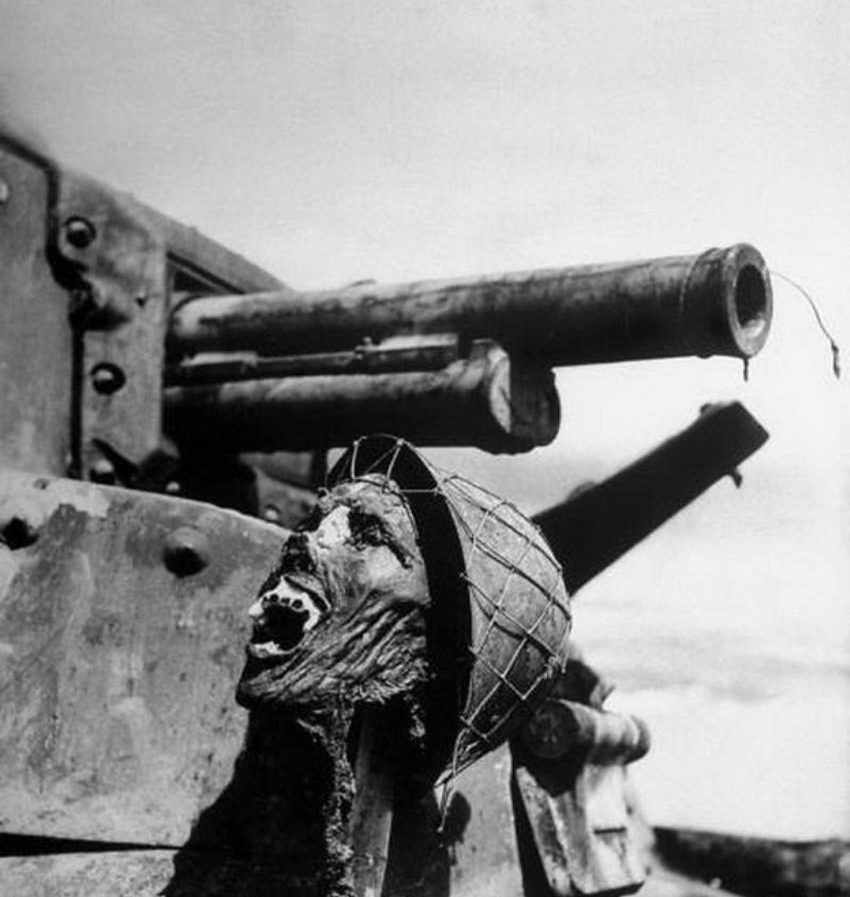
Face of Death
Photo by: Ralph Morse, 1943.
The head of a Japanese soldier on a tank.
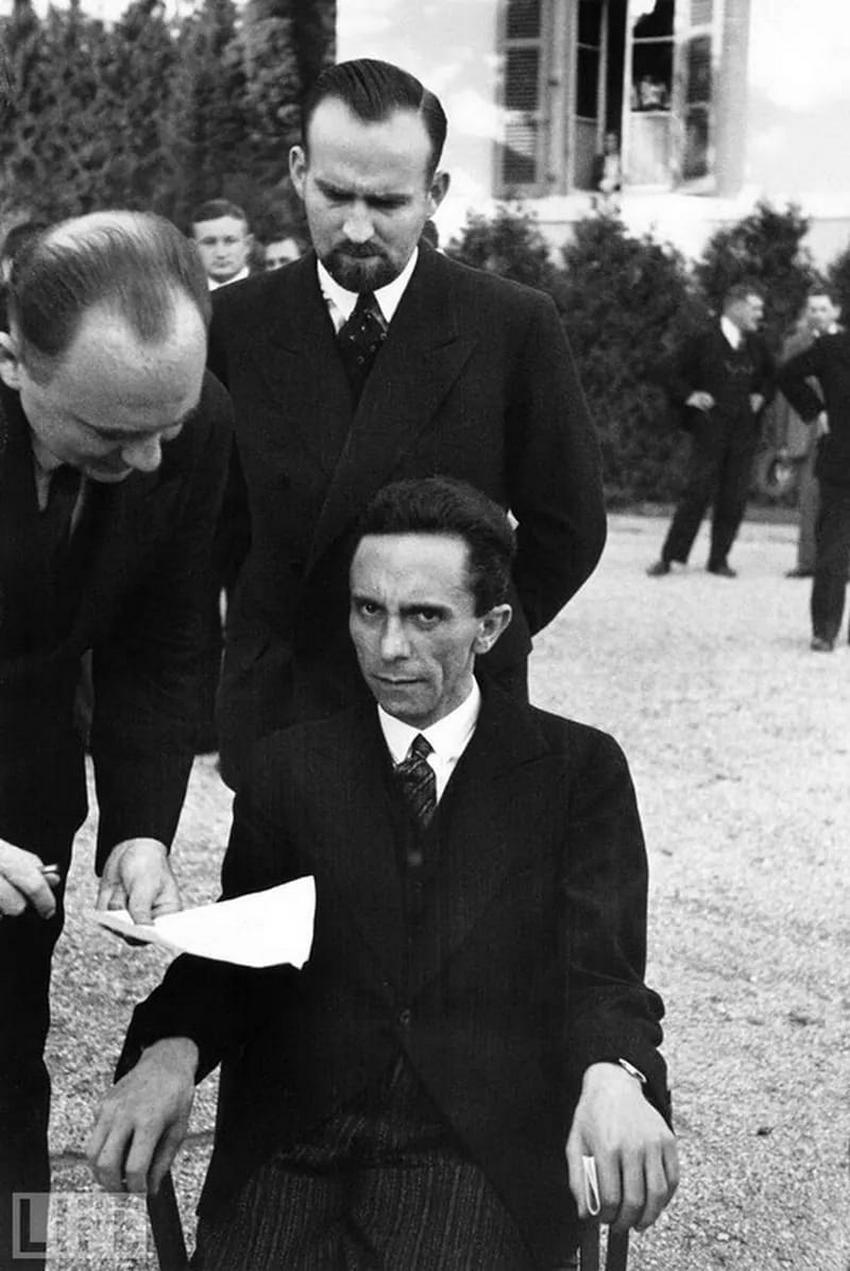
Eyes of Hate
Photo by: Alfred Eisenstaedt, 1933.
The moment when Goebbels (sitting) found that his photographer was a Jew and he stopped smiling. The full story behind Eyes of hate pictures.
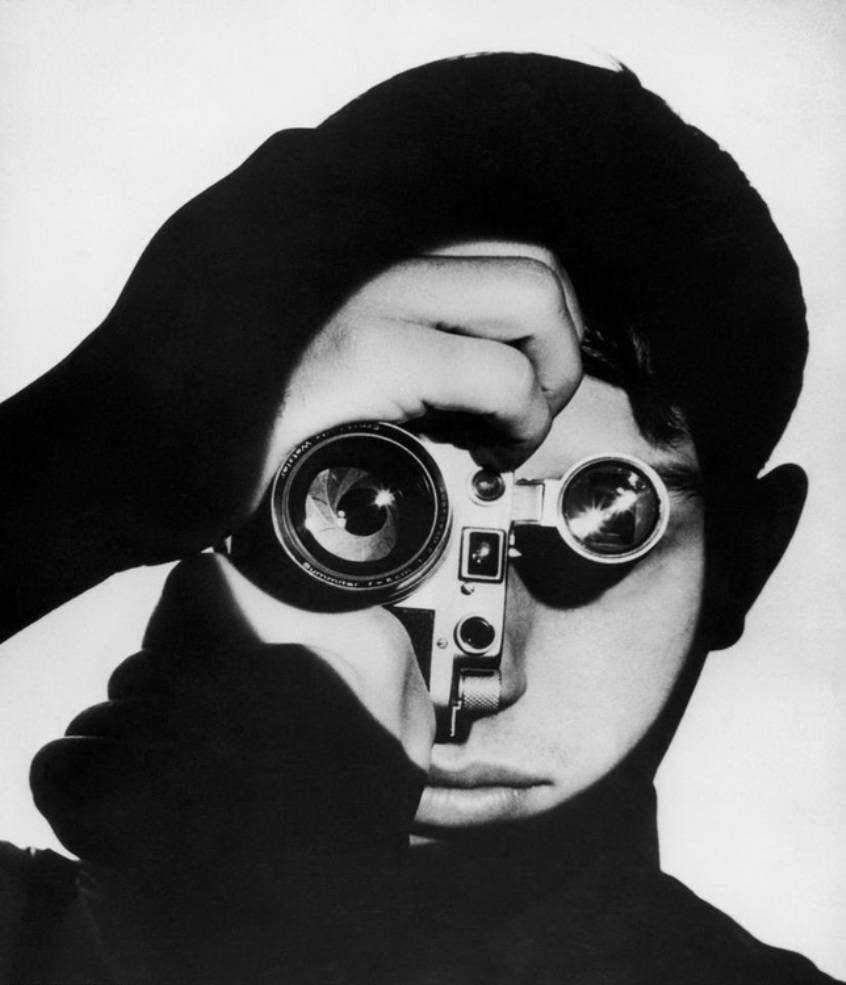
Dennis Stock
Photo by Andreas Feininger, 1951.
Portrait of the photographer Dennis Stock.
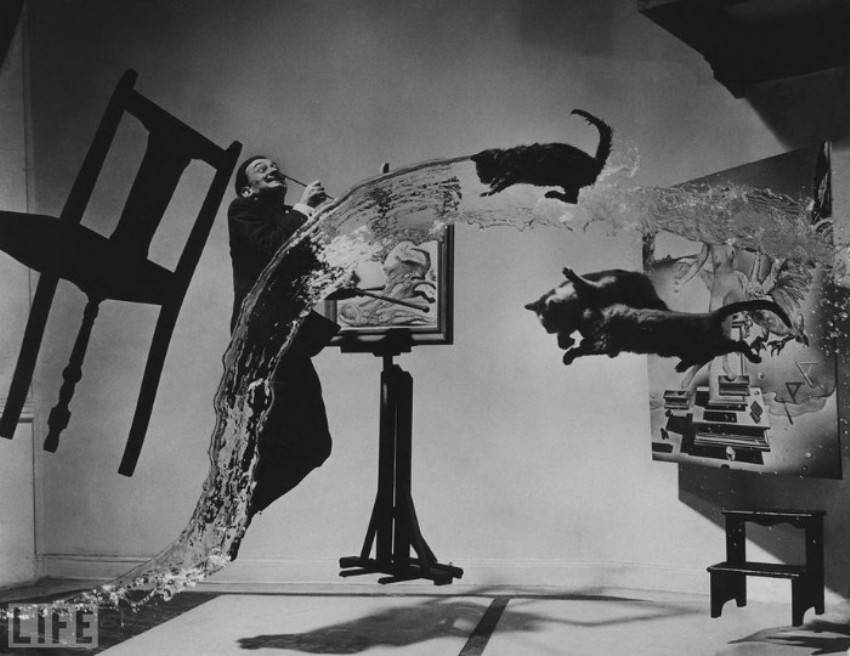
Dali Atomicus
Photo by Philippe Halsman, 1948.
Six hours and 28 throws (water, chair, and three cats). According to the photographer, he and his assistants were wet, dirty, and completely exhausted when the shot was successful. The Dali Atomicus is among the 100 most important pictures in history.
Read more: All Pulitzer Prize photos (1942-1967)
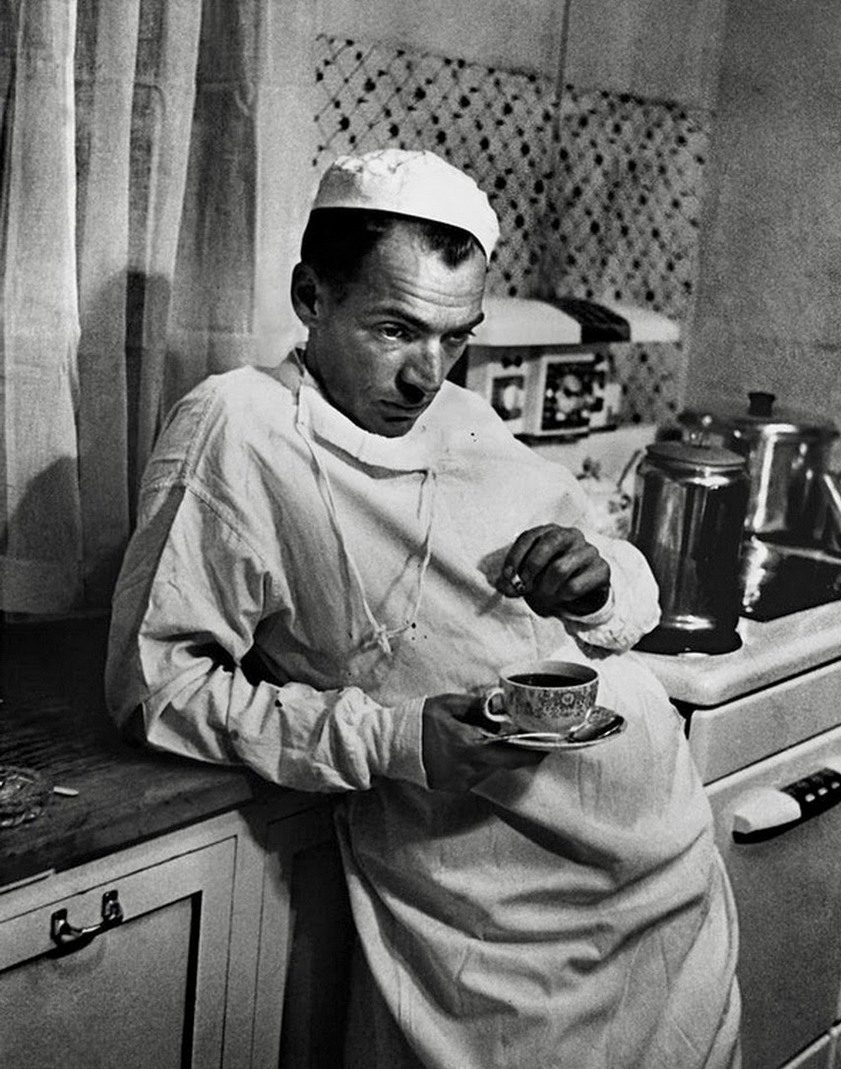
Country Doctor
Photo by W. Eugene Smith, 1948.
Rural doctor Ernest Ceriani, the only doctor in the 1200 square miles area. In this photo, Eugene Smith captured a moment after a botched cesarean section that killed a mother and child due to complications. See more pictures and a full story behind the Country Doctor photo.
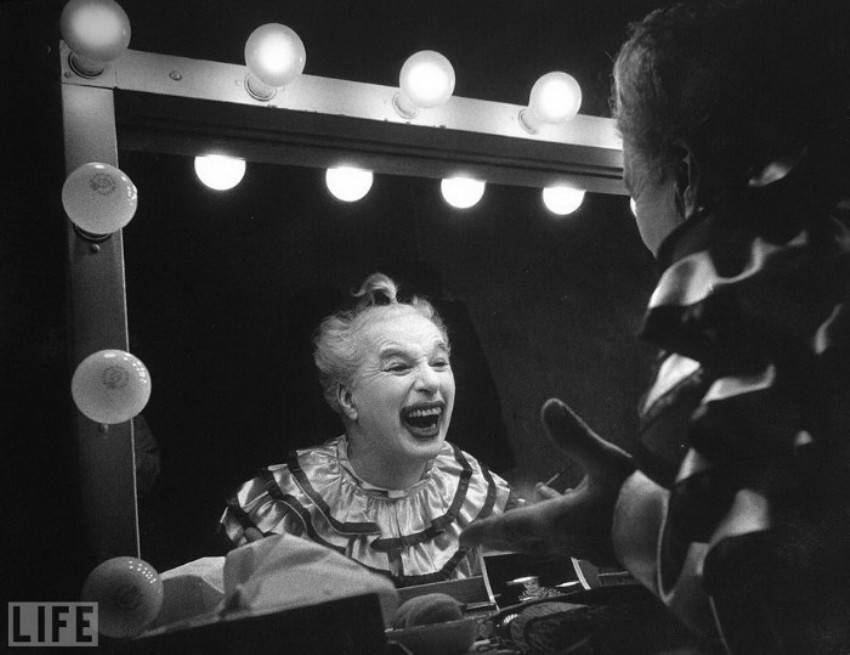
Charlie Chaplin
Photo by W. Eugene Smith, 1952.
Charlie Chaplin, 63.
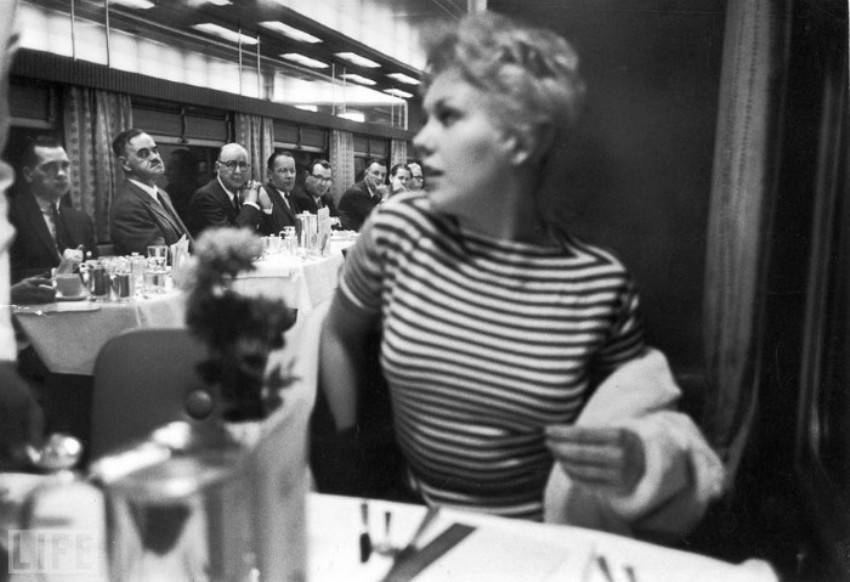
Center of Attention
Photo by: Leonard McCombe, 1956.
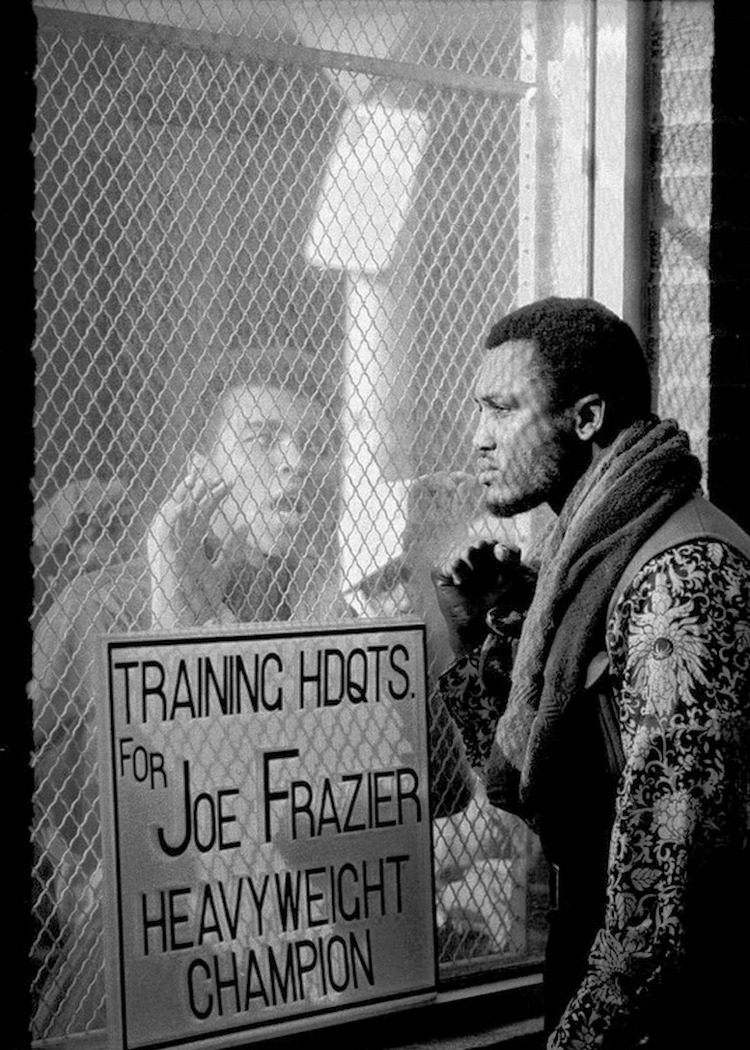
Both Sides Now
Photo by: John Shearer, 1971.
Muhammad Ali before his fight with Joe Fraser in March 1971. Ali loved to tease opponents. Before the fight with Fraser, he questioned the latter’s masculinity, intellectual abilities, and even his “black skin”.

Before the Wedding
Photo by: Michael Rougier, 1962.
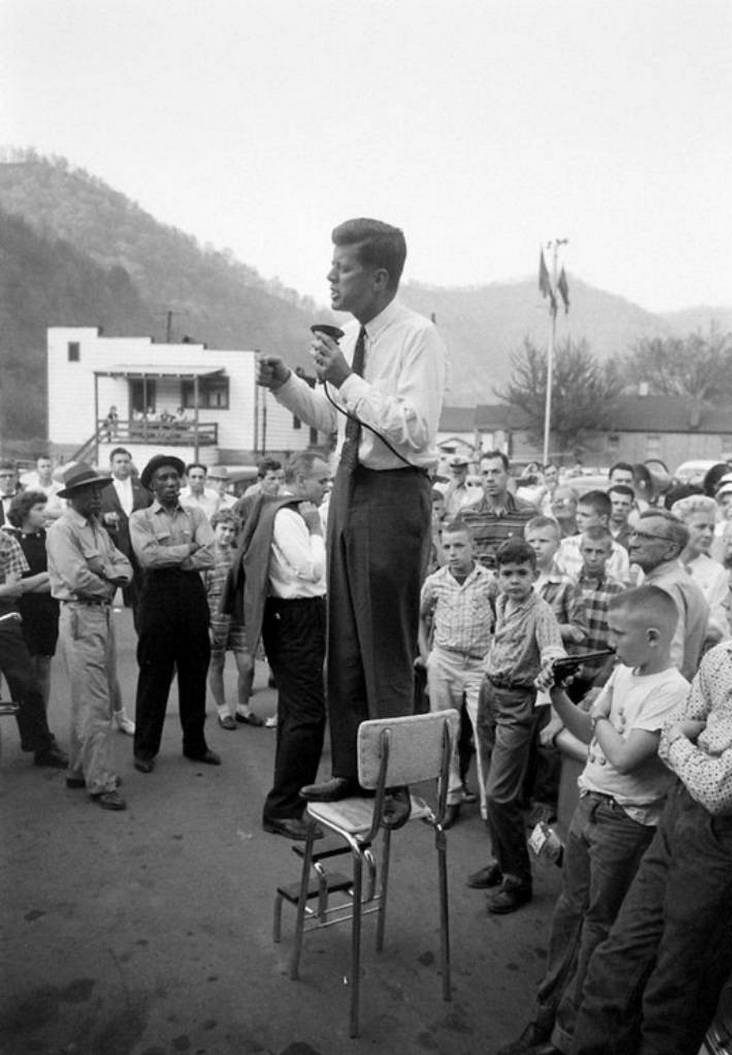
Before Camelot, a Visit to West Virginia
Photo by Hank Walker, 1960.
John F. Kennedy speaks during the election campaign in an American town.
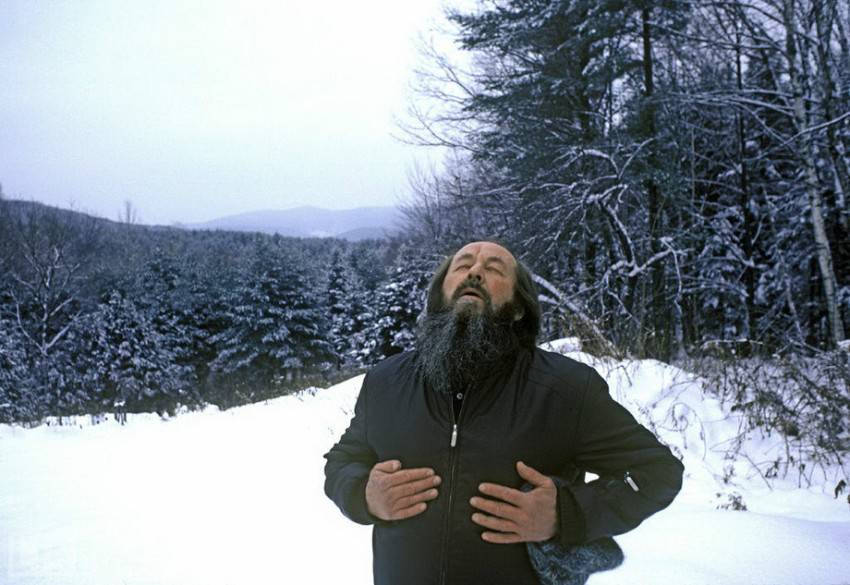
Alexander Solzhenitsyn Breathes Free
Photo by Harry Benson.
Free-breathing. Alexander Solzhenitsyn in Vermont.
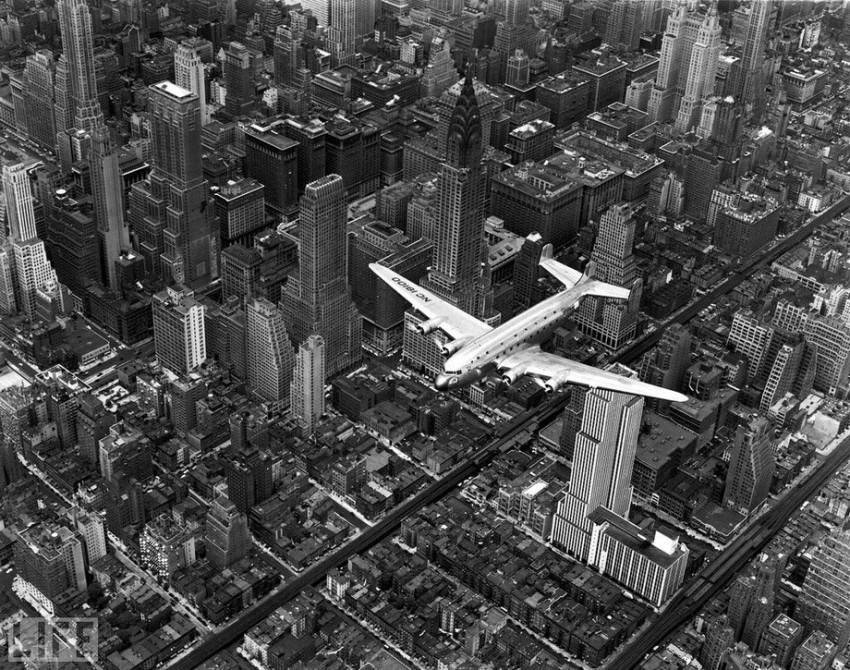
Airplane Over Manhattan.
Photo by: Margaret Bourke-White, 1939.
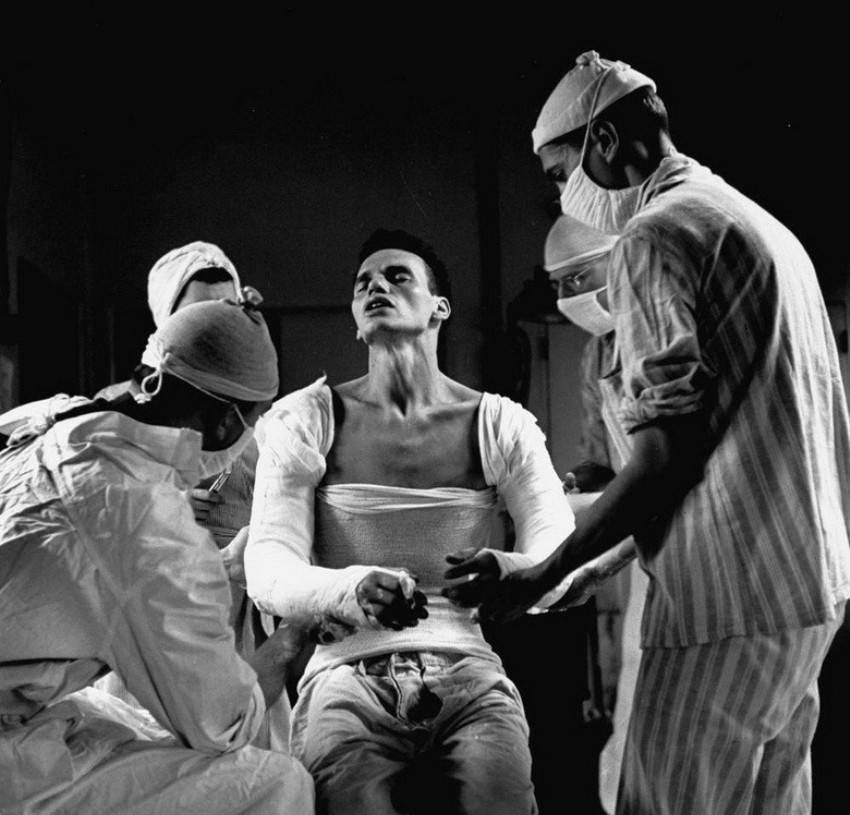
Agony
Photo by: Ralph Morse, 1944.
Army medic George Lott, badly wounded in both arms.

A Wolf’s Lonely Leap
Photo by Jim Brandenburg, 1986.
The polar wolf fights for survival in northern Canada.

A Leopard’s Kill
Photo by: John Dominis, 1966.
Leopard with a victim.
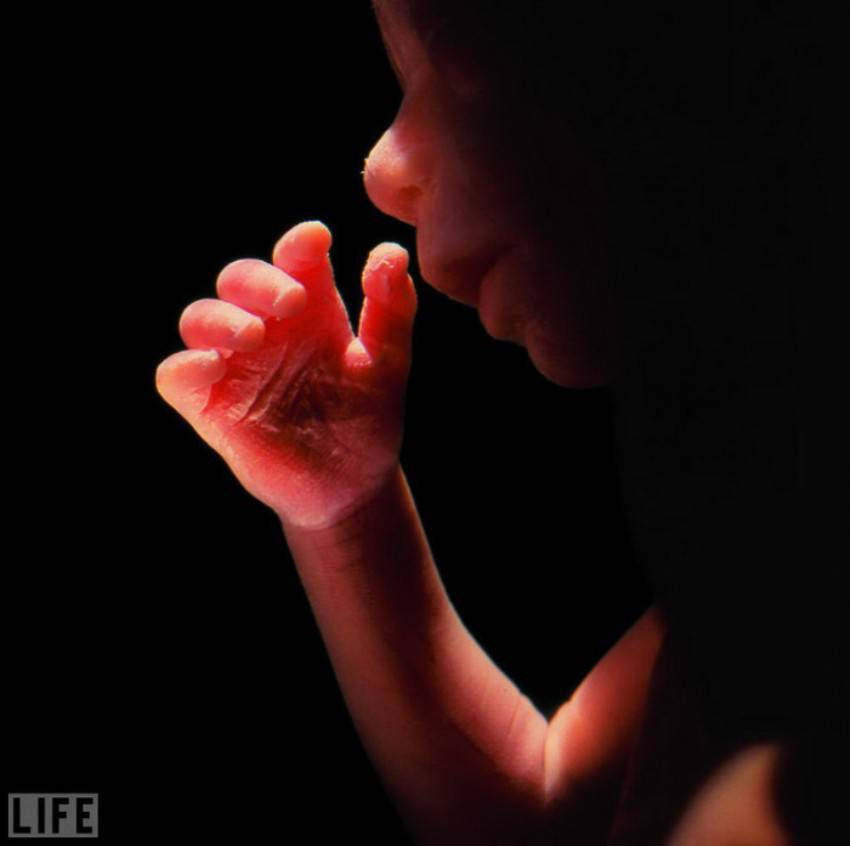
A Child Is Born
Photo by: Lennart Nilsson, 1965.
The first-ever picture of a baby in the womb.
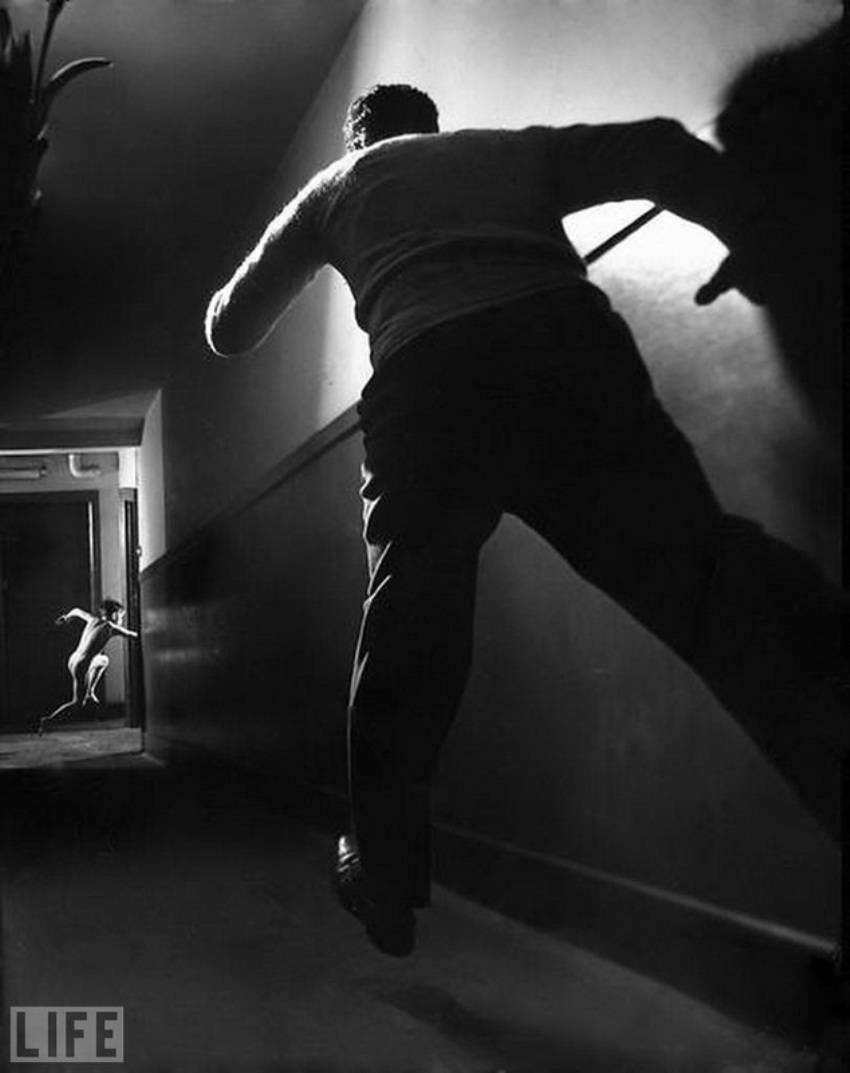
A Boy’s Escape
Photo by: Ralph Crane, 1947.
This staged photo depicts a boy escaping from an orphanage.
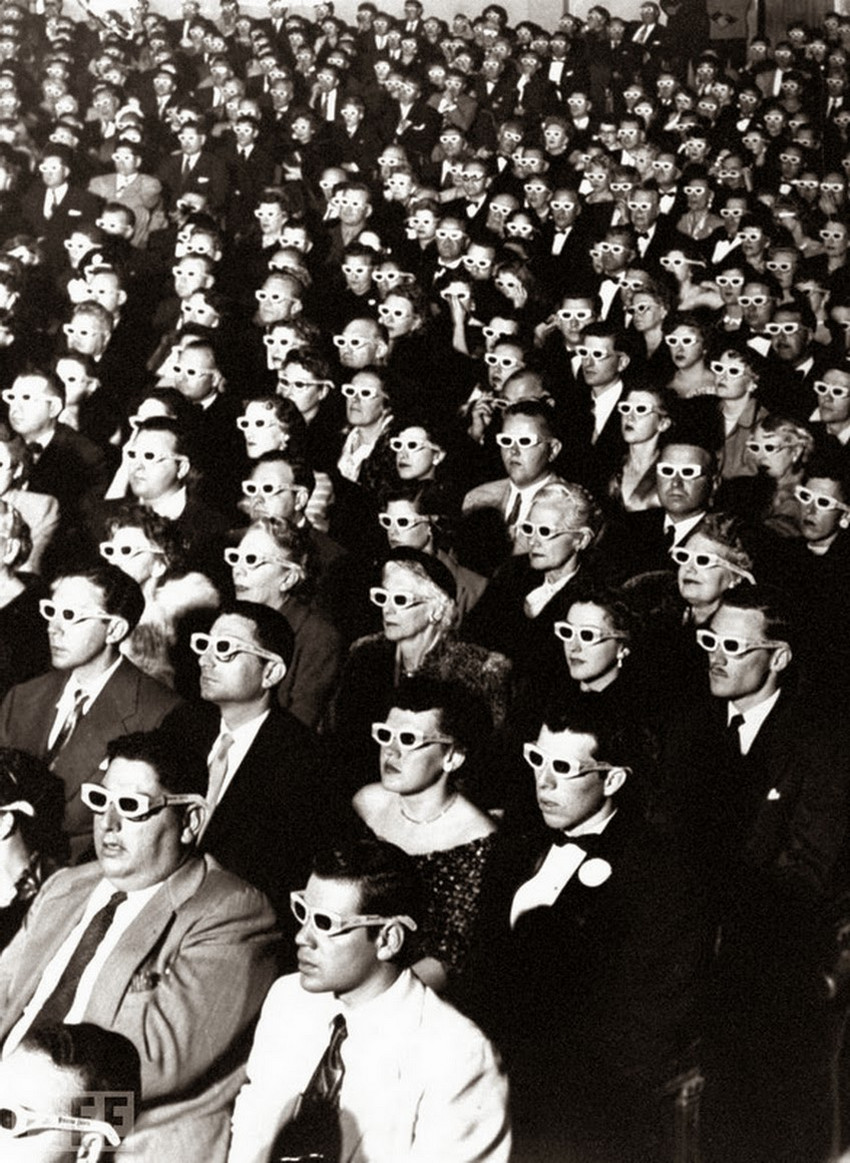
3D Movie Audience
Photo by: J.R. Eyerman, 1952.
The first full-length stereo film Bwana Devil.
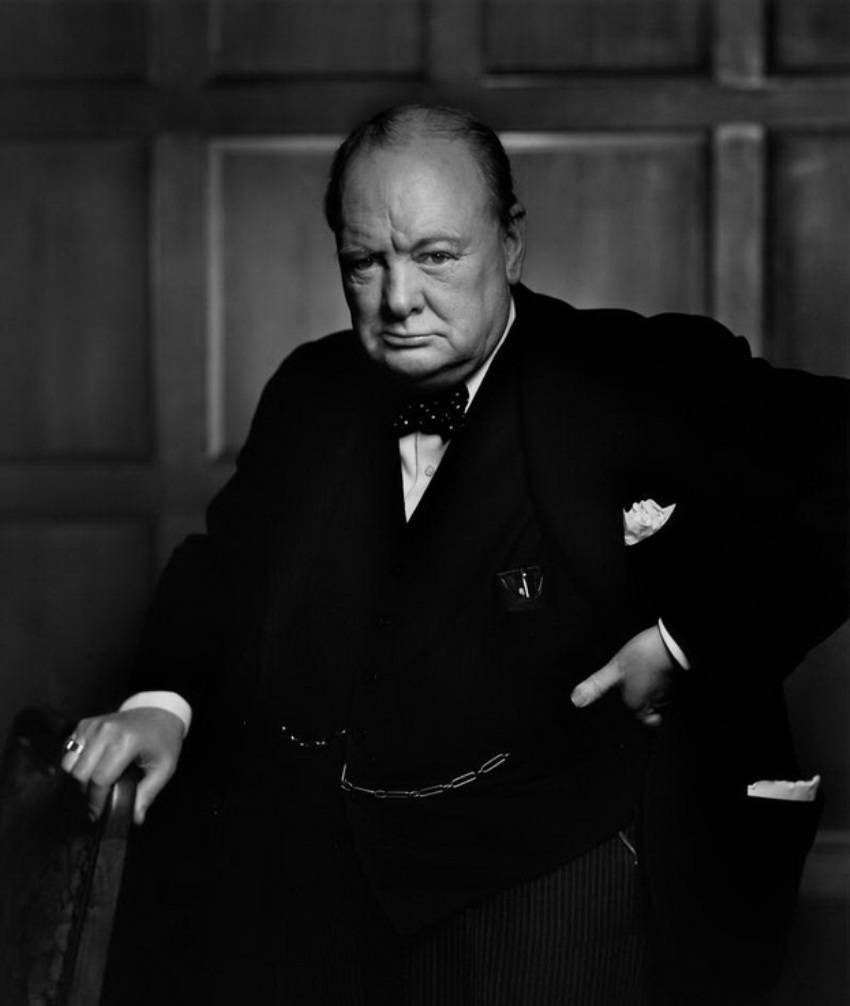
Winston Churchill
Author photo: Yousuf Karsh, 1941.
Prime Minister of Great Britain in 1940-1945 and 1951-1955. Politician, military man, journalist, writer, laureate of the Nobel Prize in Literature.
See more: Winston Churchill as an artist and his other leisure pictures.
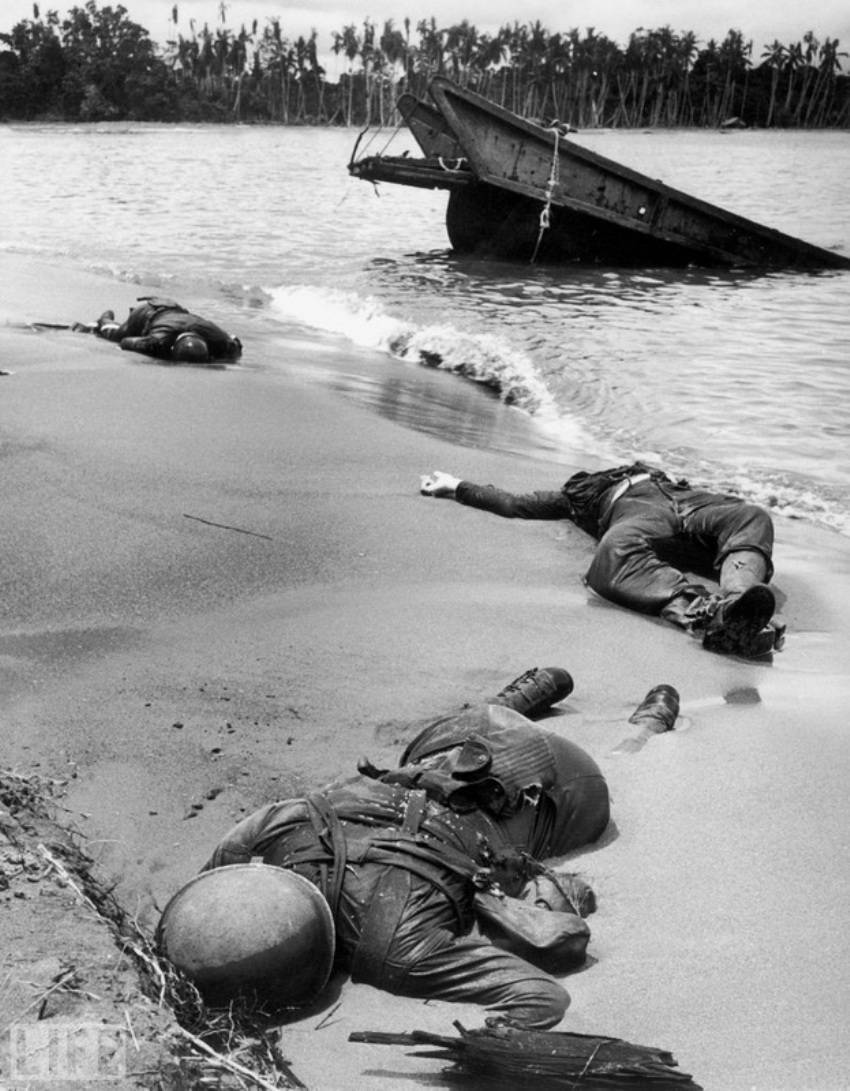
Three Americans
Photo by: George Strock, 1943.
American soldiers were killed in battle with the Japanese on a beach in New Guinea. The first shot of dead American soldiers on the battlefield during World War II.
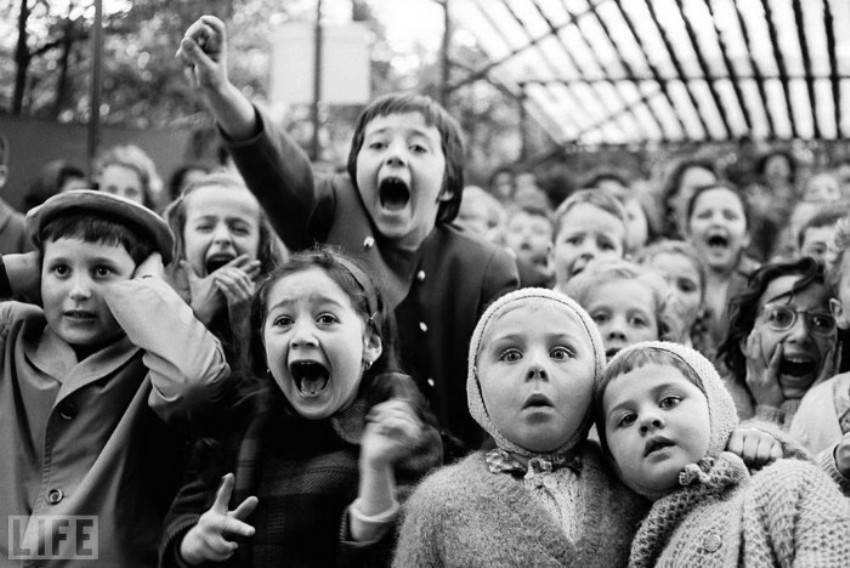
The Puppet Show
Photo by Alfred Eisenstaedt, 1963.
At a puppet show in a Parisian park. The moment of the killing of the serpent by Saint George.
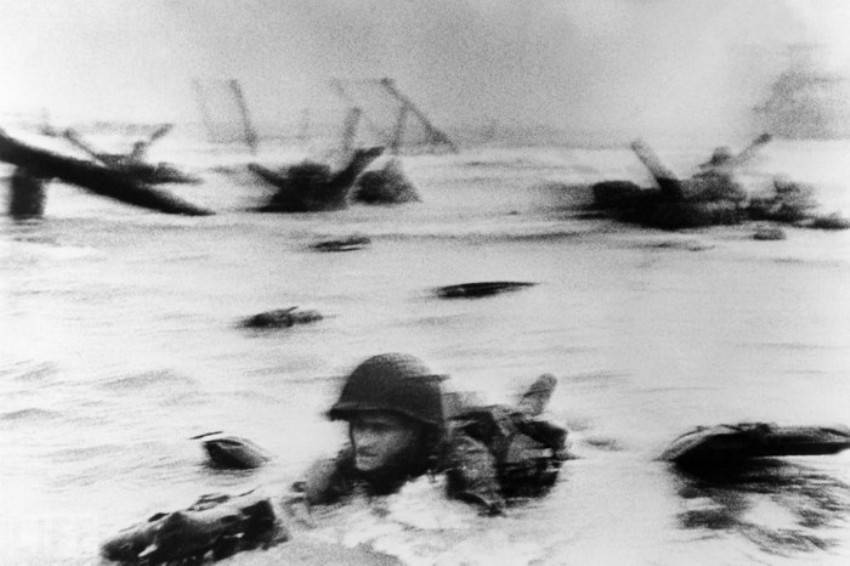
The Longest Day
Photo by Robert Capa, 1944.
The landing of the American army on Omaha Beach in Normandy on June 6, 1944. It was also depicted in the film “Saving Private Ryan” by Steven Spielberg.

The Kiss
Photo by Alfred Eisenstaedt, 1945.
One of the most famous photographs. Kiss of a sailor and a nurse after the end of the war.
The story ‘V-J Day in Times Square’ by Alfred Eisenstaedt
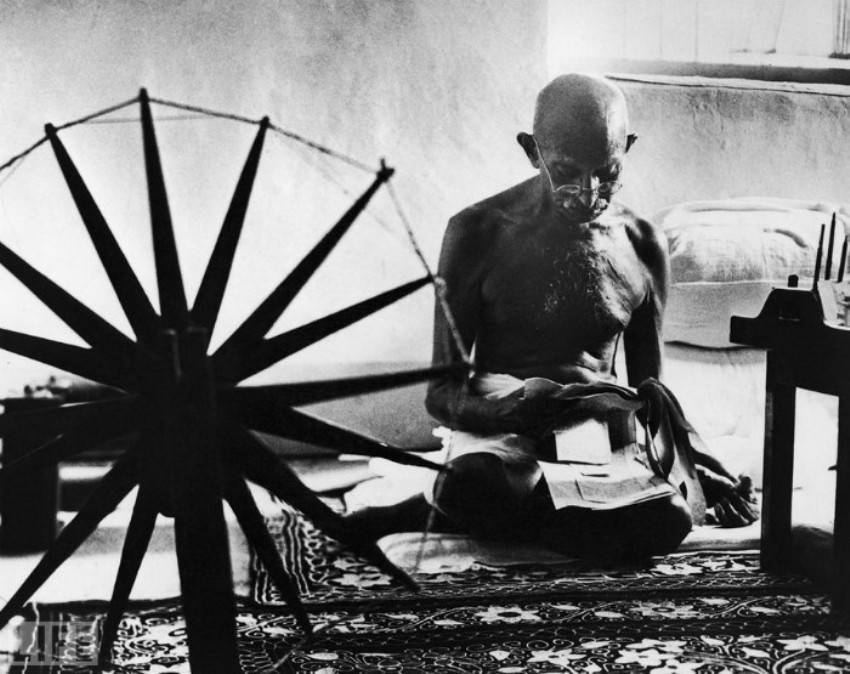
The Great Soul
Photo by: Margaret Bourke-White, 1946.
Mahatma Gandhi, next to his spinning wheel, symbolizes the non-violent movement for Indian independence from Britain.
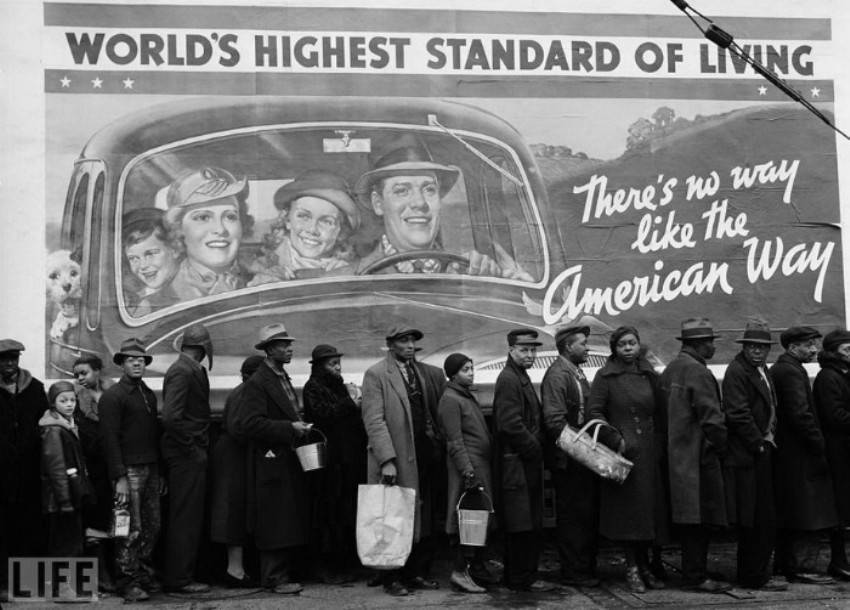
The American Way
Photo by: Margaret Bourke-White, 1937.
Food queue during the Great Depression with a poster reading, “There is way like the American way.”
The story of the American way photo by Margarett Bourke-White

Steve McQueen
Photo by: John Dominis, 1963.
Actor Steve McQueen, who starred in The Magnificent Seven.
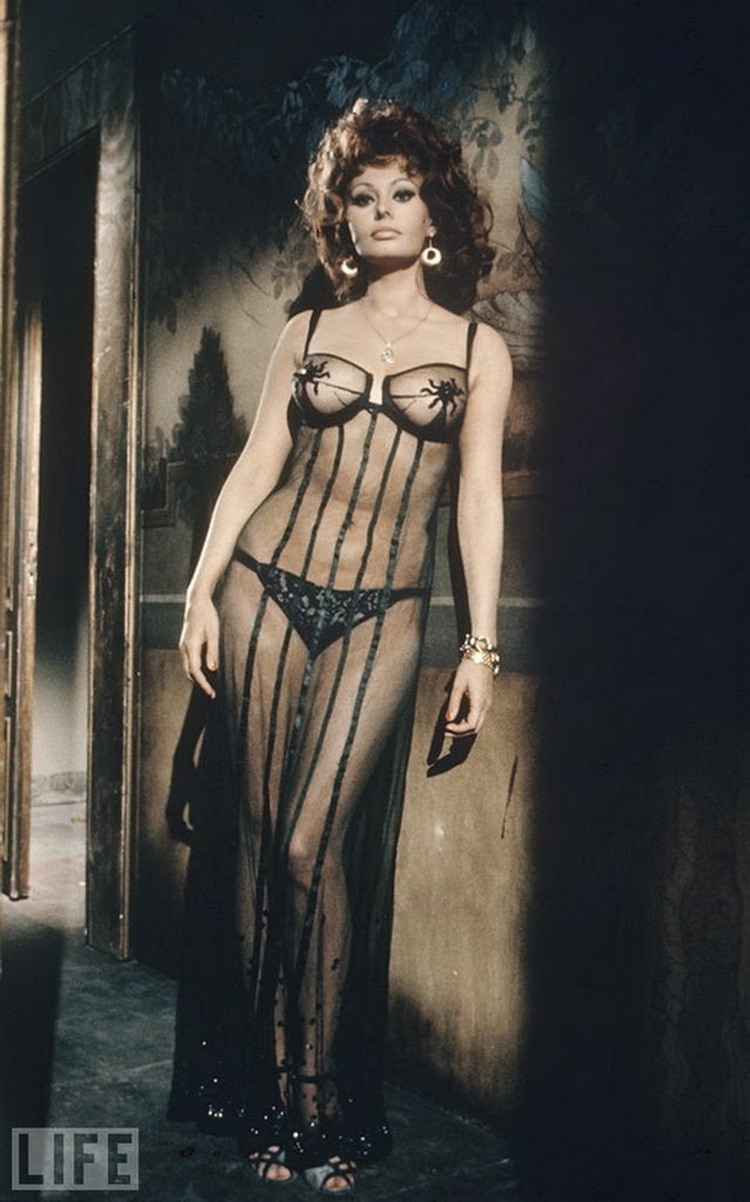
Sophia Loren
Photo by Alfred Eisenstaedt, 1966.
Sophia Loren, in the movie “Italian Marriage.” When this candid snapshot took the cover of LIFE, many criticized the magazine for “going into pornography.” One reader wrote, “Thank God the postman comes at noon when my kids are at school.”
Сообщение TOP 50 legendary LIFE magazine photographs появились сначала на Old Pictures.
]]>Сообщение Lee Miller in the bathroom of Adolf Hitler появились сначала на Old Pictures.
]]>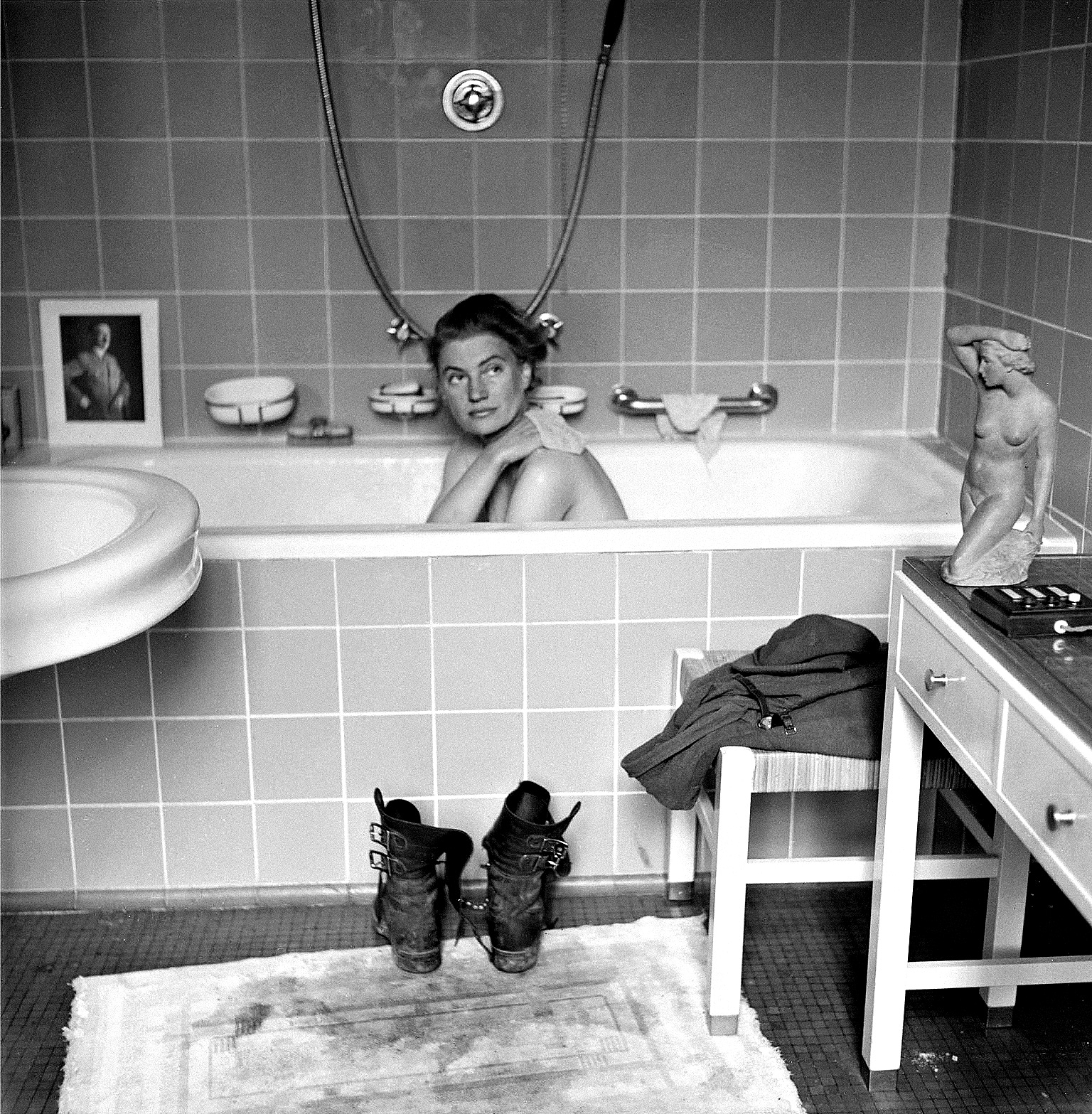 Somehow this photo of former-model Lee Miller in Hitler’s bathroom is one of the best-known WW2 photography. Its story is noteworthy, though. Photographers Lee Miller and David Sherman worked together during WWII. Miller shot for Vogue, Sherman shot for LIFE. They participated in the liberation of the Dachau concentration camp. The very next day, photographers entered Munich together with the 45th American division. Precisely speaking, Lee Miller didn’t shower in the secondary apartment of Adolf Hitler, which he used during his trips to Bavaria.
Somehow this photo of former-model Lee Miller in Hitler’s bathroom is one of the best-known WW2 photography. Its story is noteworthy, though. Photographers Lee Miller and David Sherman worked together during WWII. Miller shot for Vogue, Sherman shot for LIFE. They participated in the liberation of the Dachau concentration camp. The very next day, photographers entered Munich together with the 45th American division. Precisely speaking, Lee Miller didn’t shower in the secondary apartment of Adolf Hitler, which he used during his trips to Bavaria.
“Lee and I found an elderly gentleman who barely spoke English, gave him a box of cigarettes, and said, ‘Show us Munich,’” Sherman recalled in a 1993 interview. “He showed us around Hitler’s house, and I photographed Lee washing in Hitler’s bathroom.”
Lee Miller moved from the apartment of Hitler to the mansion of Eva Braun
Miller and Sherman lived in the apartment of Adolf Hitler for several days. After that, they even squatted in the house of Eva Braun, which was located nearby.
The photo of Lee Miller taking a bath in the Fuhrer’s apartment caused a flurry of indignation. Many considered the photographers’ behavior unethical. Lee Miller’s son, Anthony Penrose, commenting on the image, said: “Her boots covered in Dachau mud are on the floor are. She says she is a winner. But what she didn’t know was that a few hours later in Berlin, Hitler and Eva Braun would kill themselves in a bunker. ”
Many people noticed that Hitler decorated the bathroom with his own portrait and a classic statue of a woman. The New York Times described the photograph as “A woman caught between horror and beauty.” However, some researchers have interpreted the image more deeply, arguing that there is no single accidental detail in it. The pollution of Hitler’s bathroom with Dachau dust was a deliberate act. The Sherman bathing photographs in the same bath, taken by Lee Miller, are also symbolic since the photographer was a Jew.
Read more: Raising a Flag over the Reichstag by Yevgeniy Khaldei,1945
Commenting on the photos, Miller said she was trying to wash off the Dachau scents.
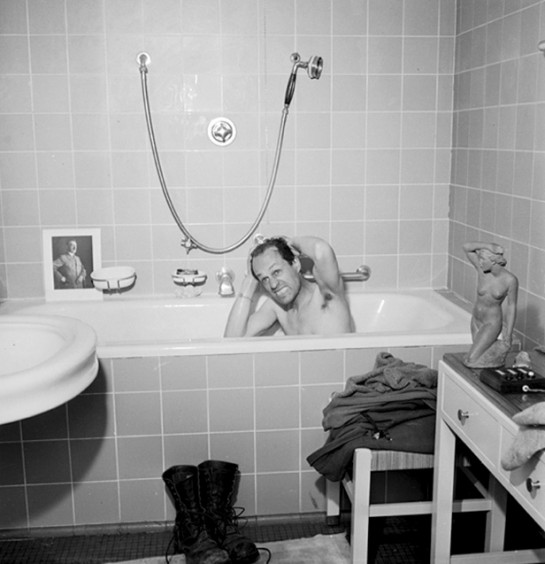
David Sherman, a jew, tried Hitler’s bathroom too

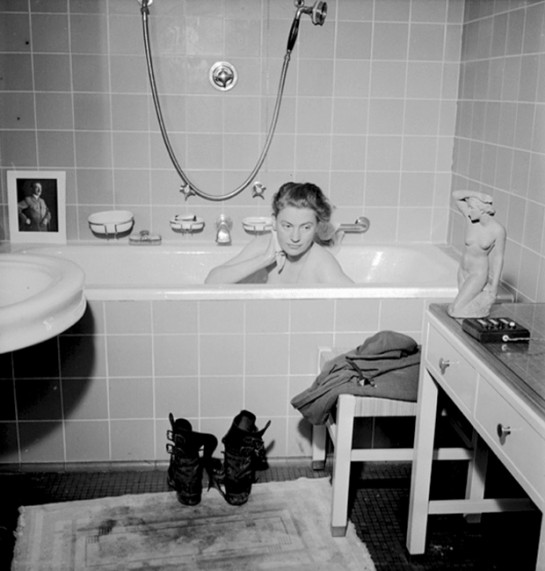
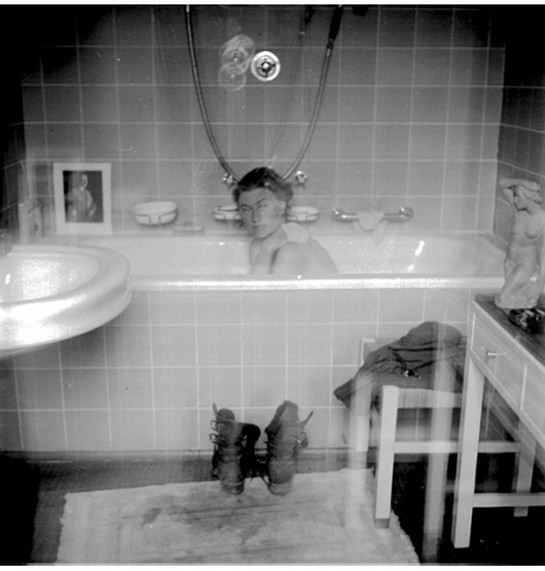
Сообщение Lee Miller in the bathroom of Adolf Hitler появились сначала на Old Pictures.
]]>Сообщение Adolf Hitler trains body language – unique historical photos появились сначала на Old Pictures.
]]>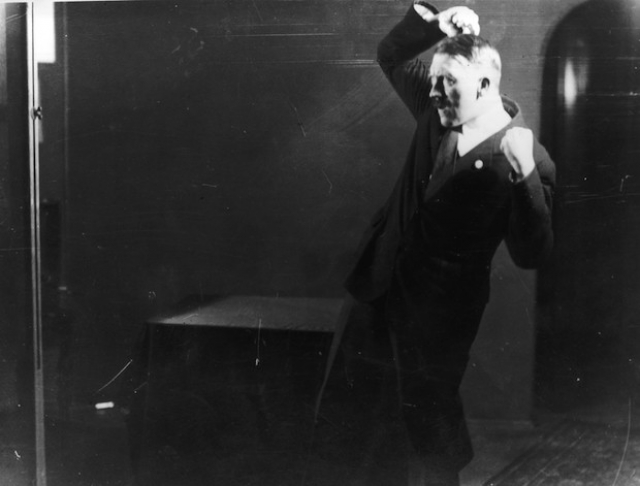 The infamous Adolf Hitler was an inspiring speaker and turned out to train his body language for this. Gestures accompany a good persuasive speech. Adolf Hitler knew it well, as his prominent public speaking was supported by body language. But few people know that Fuhrer carefully practiced gestures, postures, and diction. The preparation for the performances took so many resources that Hitler involved a personal photographer for his sessions.
The infamous Adolf Hitler was an inspiring speaker and turned out to train his body language for this. Gestures accompany a good persuasive speech. Adolf Hitler knew it well, as his prominent public speaking was supported by body language. But few people know that Fuhrer carefully practiced gestures, postures, and diction. The preparation for the performances took so many resources that Hitler involved a personal photographer for his sessions.
Heinrich Hoffmann (also known for these Fuhrer’s WWI photos) photographed Hitler view the footage, and evaluate his own image. Here’s how we’ve got this series of pictures in which dictator appears in very strange poses. Later, Heinrich Hoffmann used these portraits in his memoirs.
The photographs look almost photoshopped. Adolf Hitler looks more like a ballroom dancer or stage actor than a ruthless dictator. But it was a fair price for polishing his speaking skills that were so important during the elections’ campaign.
Let’s note that Adolf Hitler was a skillful politician and he was ready for some bold moves to get the voters’ sympathy. For example, he organized a very special photoshoot while wearing traditional Tyrollian shorts, very popular in Bavaria. Hitler didn’t like those shorts, that looked almost ridiculous. But he knew that people will pay attention and did to gain more popularity before the elections. A strong move that, among others, allowed the Nazi party to get absolute power.
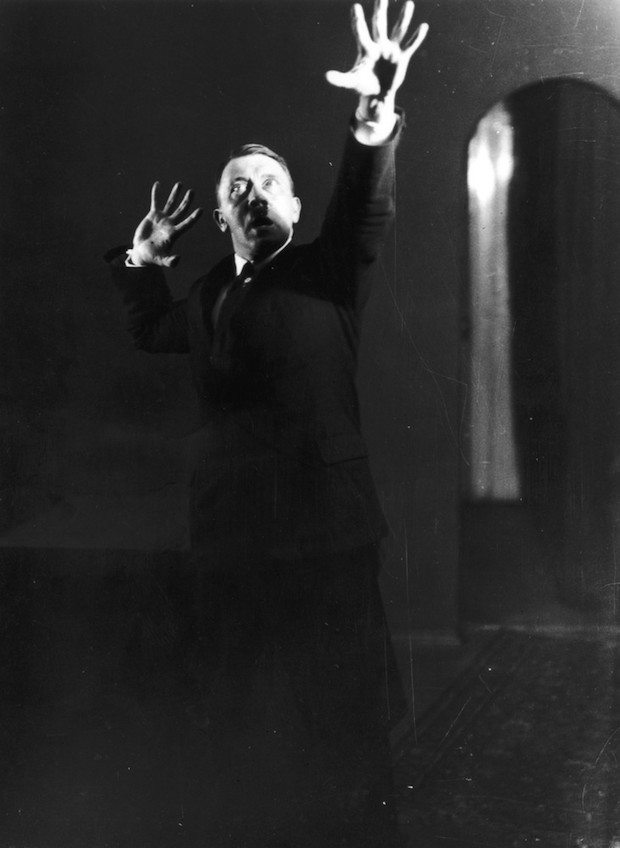
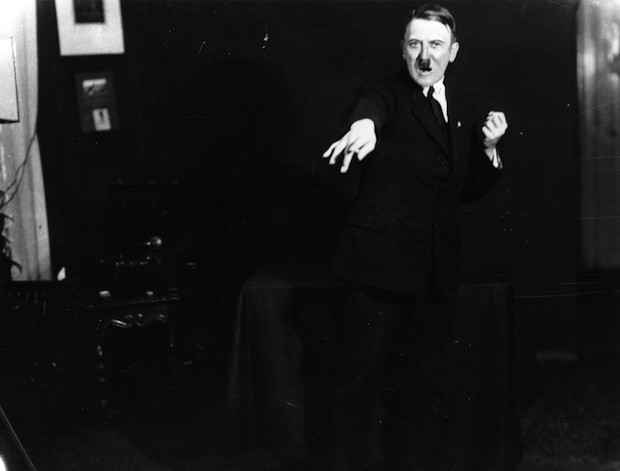
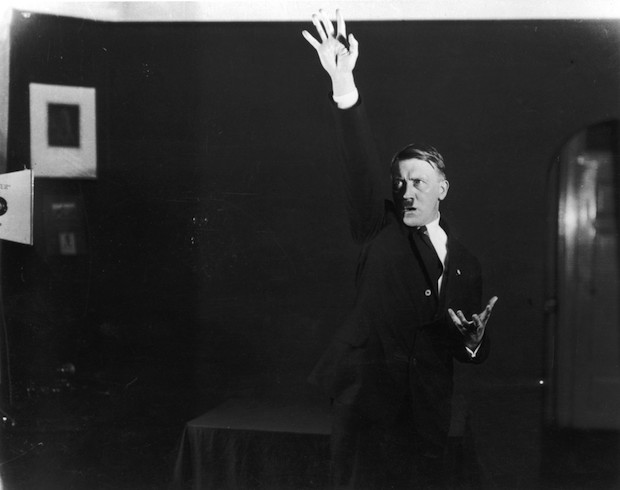
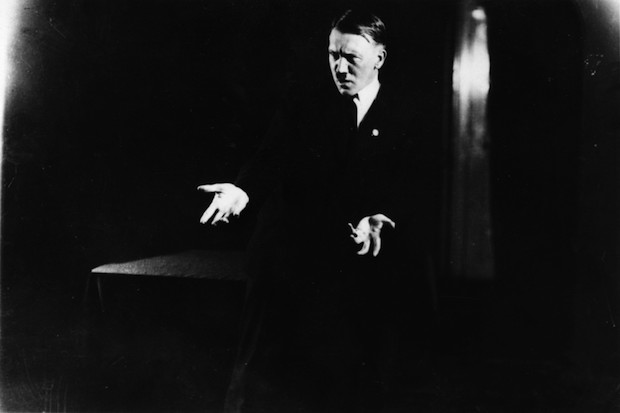
Сообщение Adolf Hitler trains body language – unique historical photos появились сначала на Old Pictures.
]]>Сообщение Hiroshima aftermath pictures right after the bombing появились сначала на Old Pictures.
]]>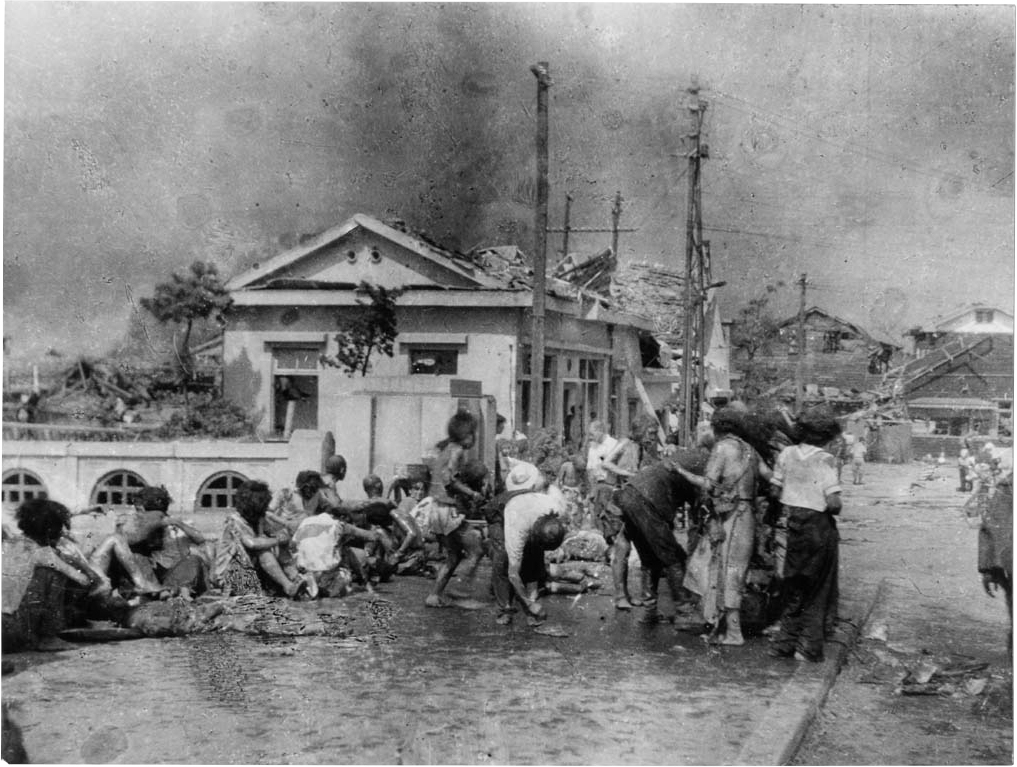 These pictures are the only aftermath documentary taken on the day of the Hiroshima bombing. Japanese photojournalist Yoshito Matsushige was lucky twice on August 6, 1945. He survived the Hiroshima bombing while staying at his own home, kept his camera, and took some fantastic pictures of the explosion aftermath.
These pictures are the only aftermath documentary taken on the day of the Hiroshima bombing. Japanese photojournalist Yoshito Matsushige was lucky twice on August 6, 1945. He survived the Hiroshima bombing while staying at his own home, kept his camera, and took some fantastic pictures of the explosion aftermath.
When the bomb detonated, Matsushige was at his home, less than three kilometers from ground zero.
“I had breakfast and was about to go to the office when it happened. There was a flash, and then I felt a kind of thunderstrike. I didn’t hear any sounds; the world around me turned bright white. I was momentarily blinded as if the light of magnesium was burning right in front of my eyes. An explosion followed immediately. I was not dressed, and the blast was so intense that I felt like hundreds of needles pierced me at the same time. “
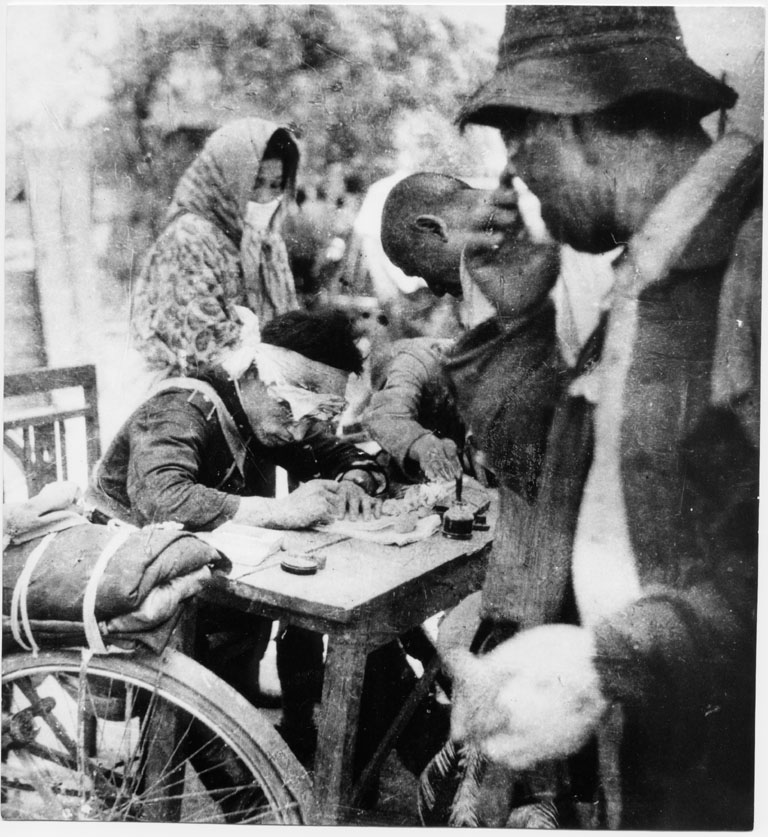
The injured policeman issues a certificate for a rice ration. People had nothing to eat after the explosion.
The horrors of the detonation aftermath
After that, Matsushige took his camera and headed to the Hiroshima downtown to take pictures of the bombing aftermath. He took two 24-frame photographic films and wandered around the ruined city for several hours.
Yoshito Matsushige took only seven pictures on that explosion day. The aftermath scenes were too horrible.
“I was also a victim of that detonation,” Matsushige later said, “but I had minor injuries from glass fragments while these people were dying. It was such a brutal sight that I could not bring myself to press the shutter button. My tears watered the viewfinder. I felt that everyone was looking at me in anger: “He is taking pictures of us and not giving any help.”
“Sometimes, I think I should have mustered up the courage to take more photos,” Matsushige later said. “I couldn’t keep taking pictures that day. It was too heartbreaking. “
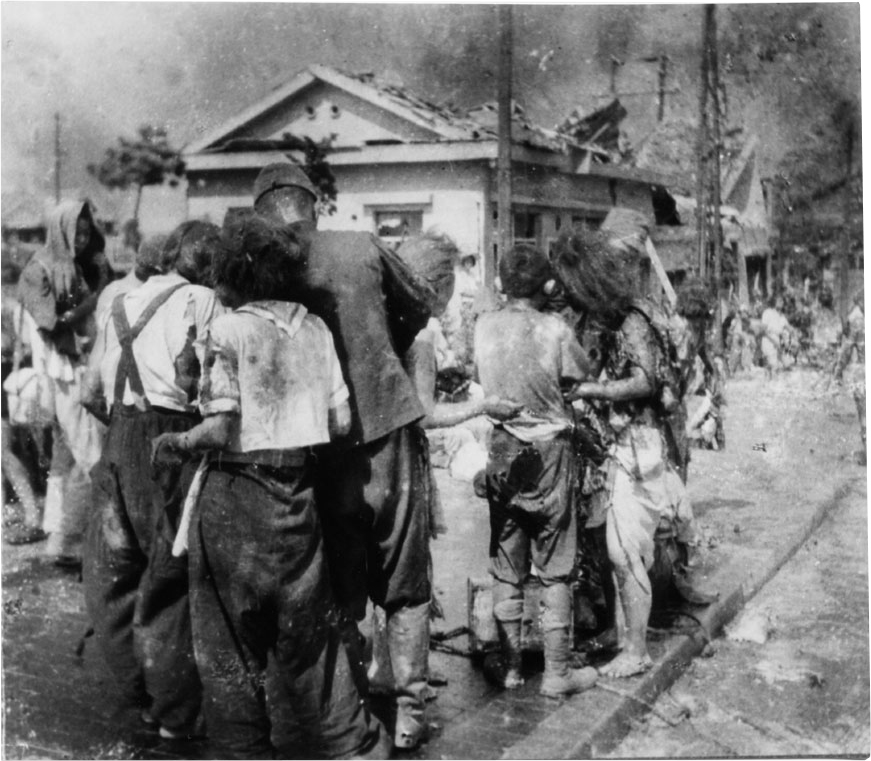
Yoshito Matsushige took only seven pictures of the Hiroshima bombing aftermath. He lost two of them while working with negatives.
Saving pictures in a post-explosion Hiroshima
Detonation destroyed the darkroom, and Matsushige worked with the negatives outside at night. He washed them in a stream near his house and dried them on a tree branch. Only five of his seven photographs have survived. A few weeks after the explosion, the US military confiscated Japanese newspapers and newsreels after the explosion, but Yoshito Matsushige hid the negatives.
Three photos were taken at the Miyuki Bridge. The first two shots show police spilling oil on the lubricate schoolchildren’s burns. The pictures were taken 2.3 km from the epicenter of the explosion, between 11.00 and 11.30 am. Matsushige will return here later to take another snapshot of the wounded policeman signing the certificates for emergency rice rations.
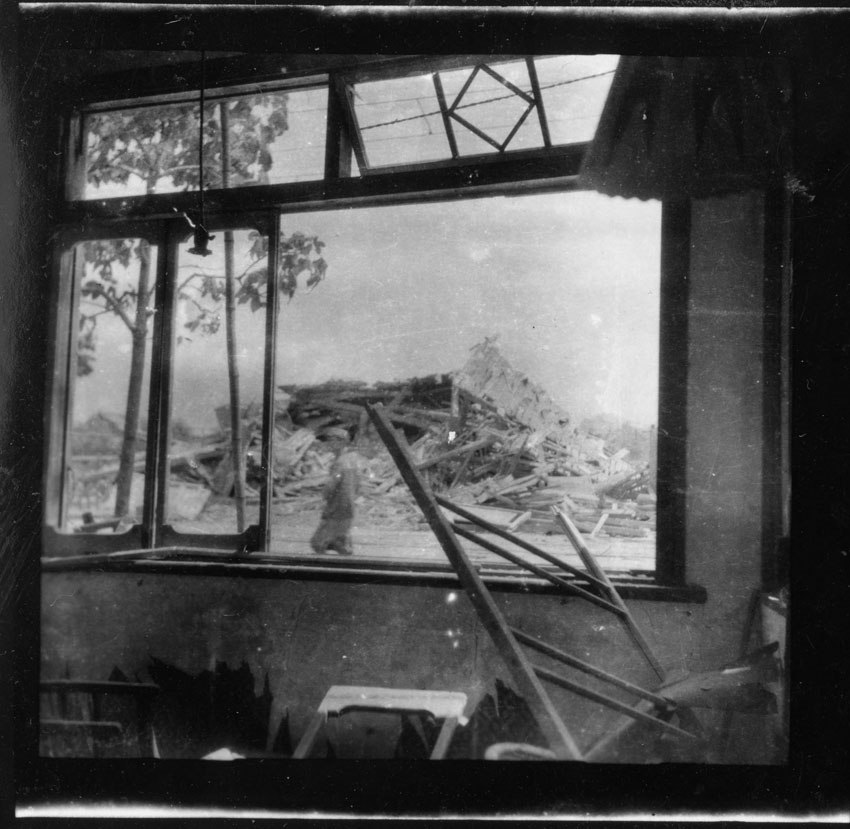
Detonation aftermath from the window of the photographer’s house
Photographer took two more shots of the aftermath near his house in Hiroshima. In these photos, his wife Sumie, wearing a helmet to protect her from radiation, is trying to clean up a barbershop that belonged to their family. He took a second shot from the window of the house.
Photos went public in 1952 when the LIFE magazine printed them. The title was “When the Hiroshima atomic bomb detonated: aftermath uncensored.”
Yoshito Matsushige died in 2005 at the age of 92.
The Hiroshima and Nagasaki bombing put an end to WW2 in the Pacific Region. The war, which was started by Japan, finally ended.
Read more: 64 Amazing photos by Alfred Eisenstaedt
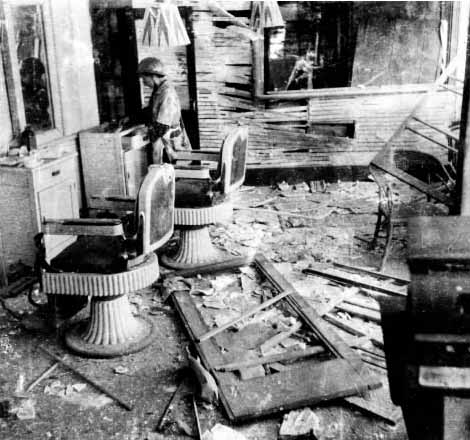
Destroyed barbershop.
Сообщение Hiroshima aftermath pictures right after the bombing появились сначала на Old Pictures.
]]>Сообщение Rare photos and facts about Sting появились сначала на Old Pictures.
]]>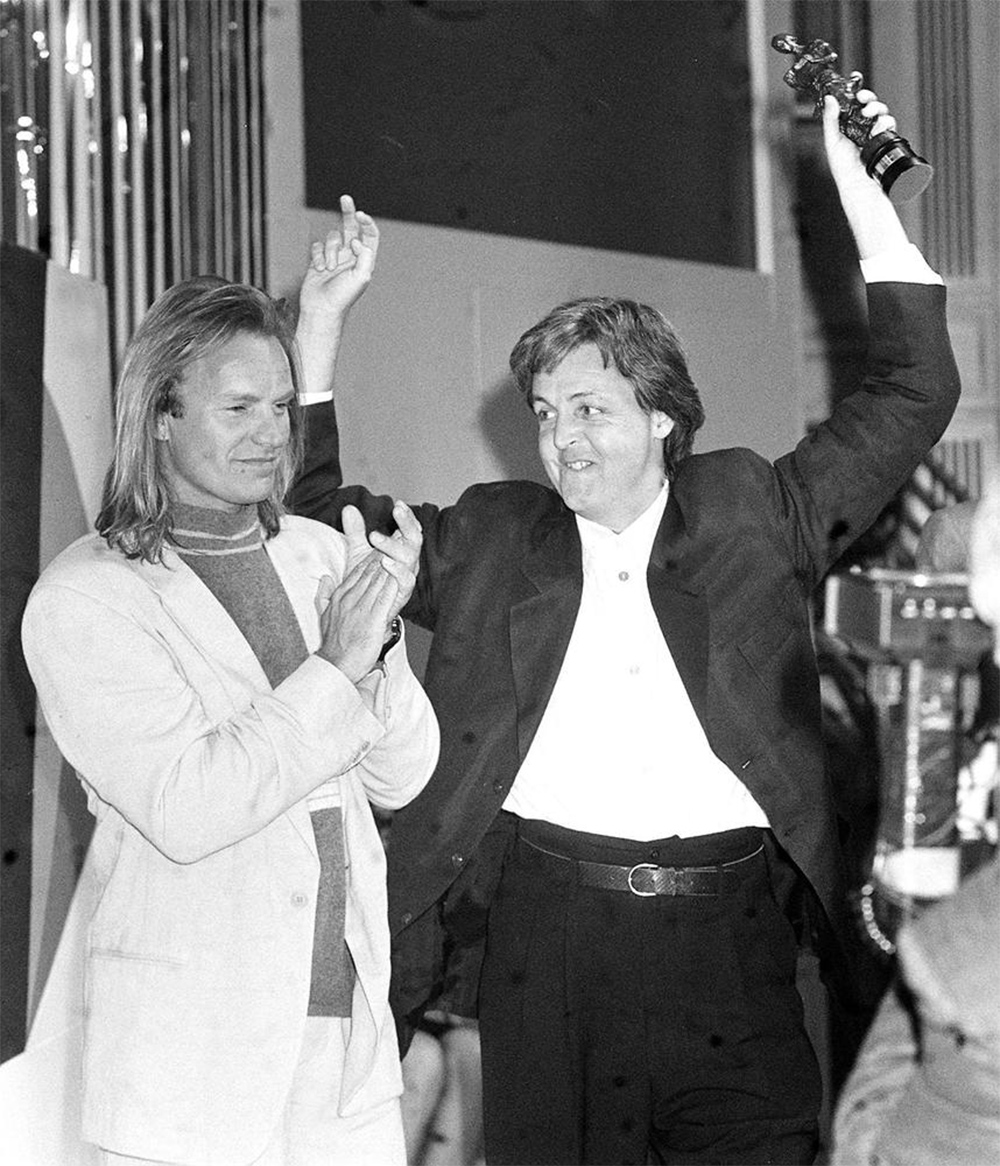
Sting and Paul McCartney, 1989. McCartney said he would like to be the author of a song like Fields of Gold
Sting nickname stuck to the musician due to his younger years’ performances in a bee costume (check one those photos below). Well, not precisely a bee, but still wearing a sweater with black and yellow stripes.
By the way, another gifted kid, Neil Tennant, co-founder of the Pet Shop Boys duo, went to the same school with Sting. Neil was only three grades younger.
Check out our collection of Early photos of famous musicians.
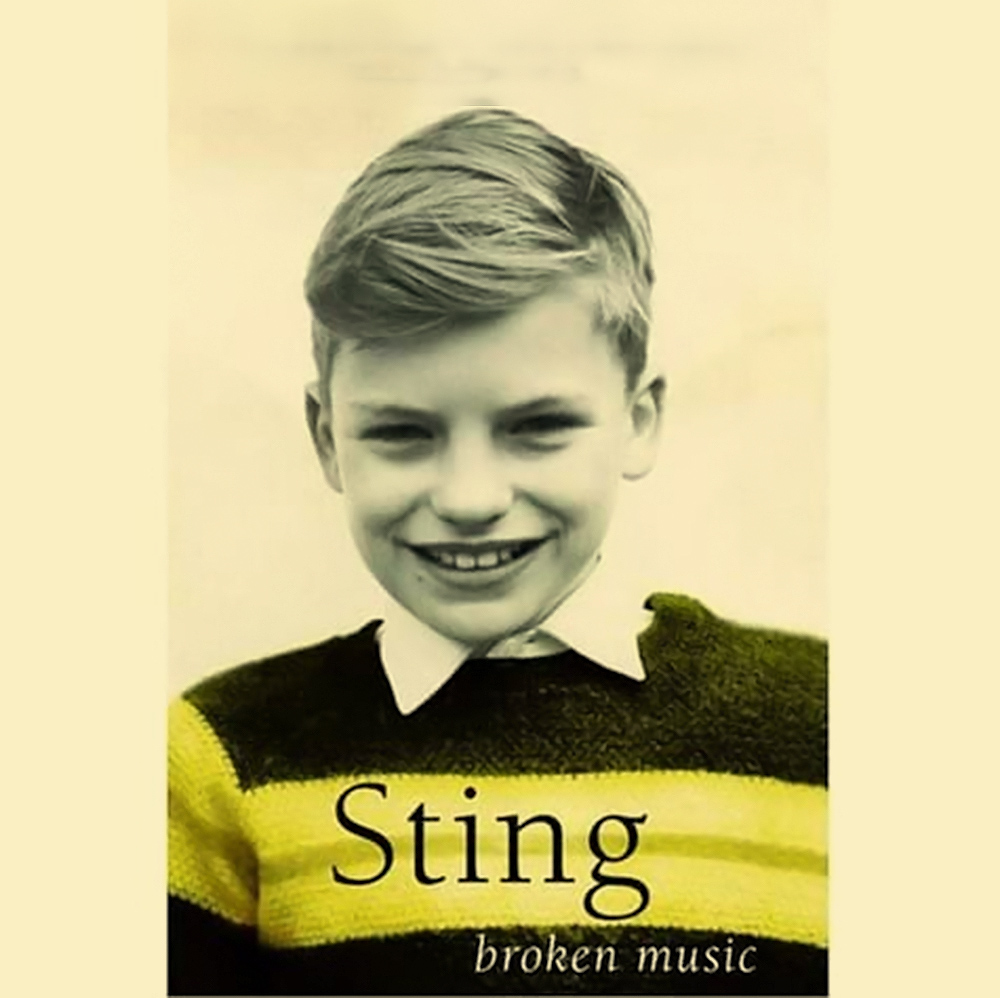
Young Sting in the photo that gave him the nickname for the rest of his life
On October 2, 1951, the singer was born in the north of England in Wallsend’s port city. Like many yet-not-famous-rock-stars, he has tried a million professions: bus conductor, football coach, English teacher. There was a time when he was a tax collector. It was the worst job, according to Sting.
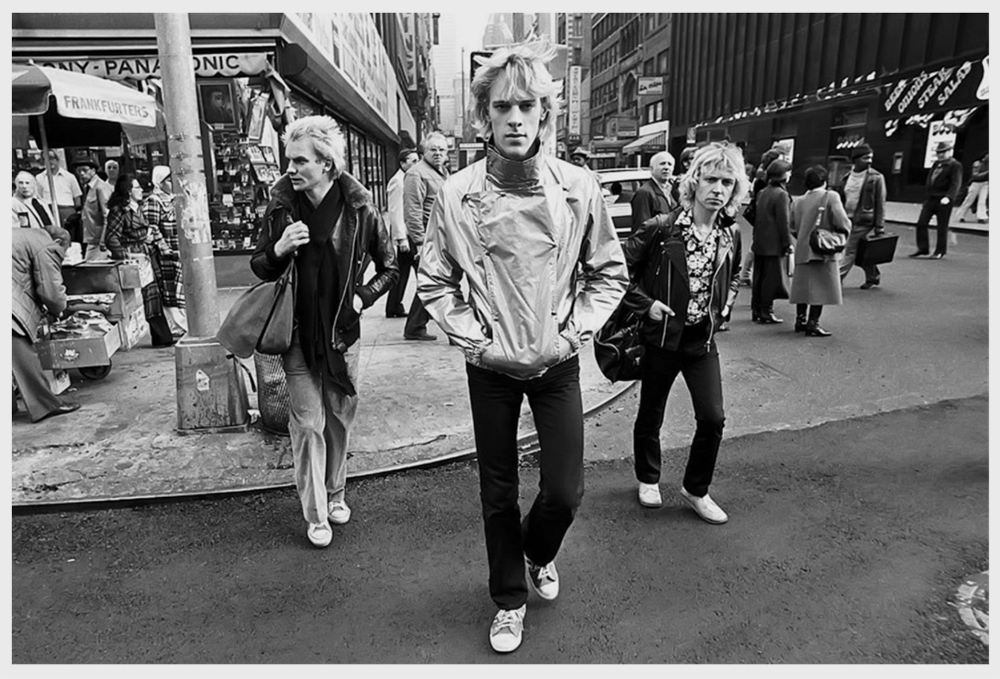
Sting and The Police trio in New York, 1978
In the beginning, Sting shared his popularity with two bandmates from The Police. The band released their first album in 1978, and it also featured the early hit “Roxanne” (which was initially born not as a reggae song at all, but as a lullaby for a baby).

The Police
The Police have always appeared in public in the form of ash blondes. And this image has a bright background!
In 1977, the gum manufacturer Wrigley commissioned a commercial and hired a little-known English director, Ridley Scott. The video required an unnamed rock band with dazzling blonde hair. The unknown guys from The Police agreed to participate. The advertisement did not hit the air, but the group decided to use the white-haired image during their performances.
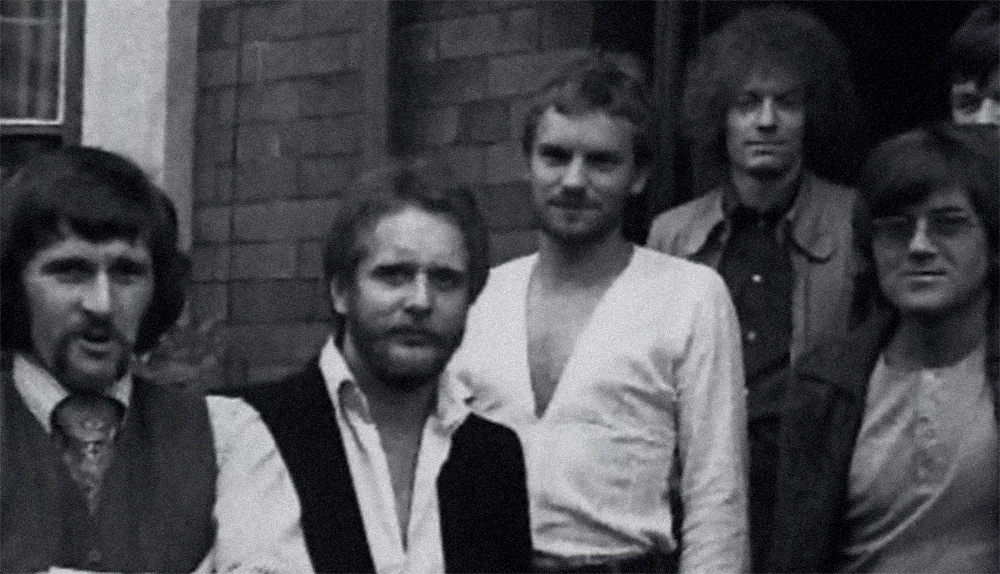
Sting (center) during the game in the Last Exit group, the mid-70s
Sting had a chance to play chess with Garry Kasparov. He took part in a show match against the grandmaster in 2000 in New York. It was a simultaneous session. It took Kasparov fifty minutes to beat all five.
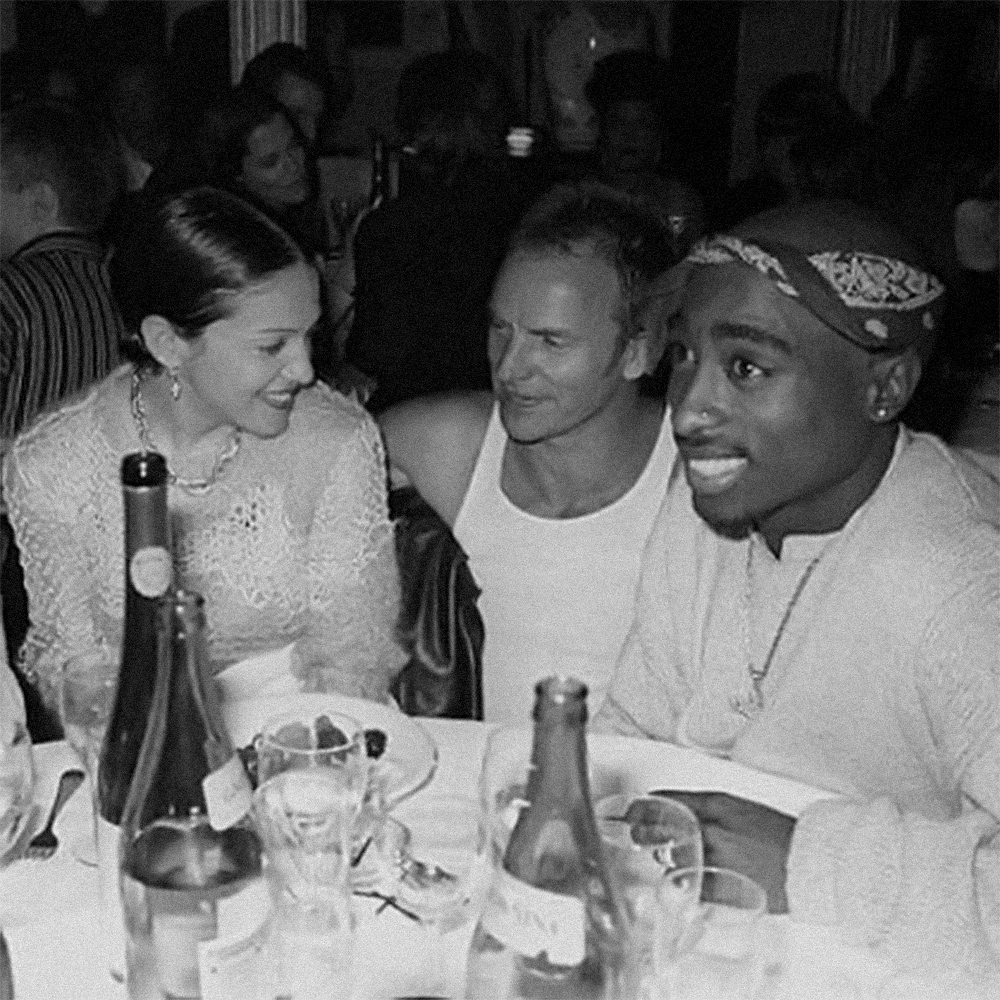
Madonna, Sting, Tupac, 1994. Three people with a one-word nickname at once.
Sting is a remarkable actor. He starred in Dune, The Bride (he played Dr. Frankenstein there), The Adventures of Baron Munchausen, and, of course, ‘Lock, Stock, Two Barrels.’
And his first film work was the role in the semi-cult drama “Quadrophenia” in 1979, based on the British band’s album The Who (and not a musical at all).
Sting also starred in the 1989 Broadway show ‘The Threepenny Opera.’
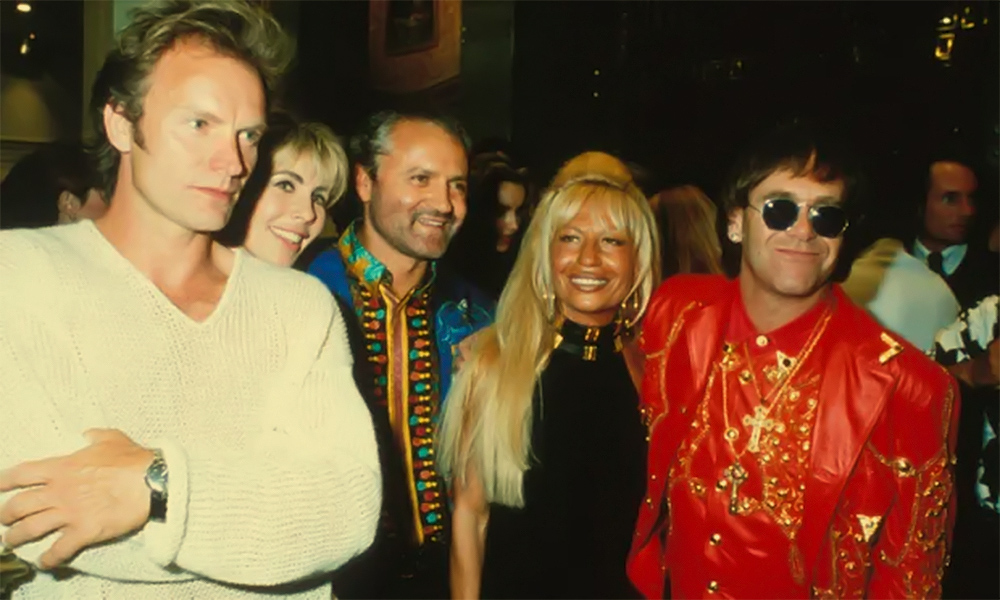
Sting with Gianni and Donatello Versace and Elton John. Sting is one of the patrons of the AIDS Foundation, which Elton founded.
Every reference book and Wikipedia will tell you that Sting’s full name is Gordon Matthew Thomas Sumner. However, Sting himself does not associate himself with this name in any way. Back in 1985, a journalist called the musician Gordon in an interview. Sting immediately replied: “My children call me Sting, my mother calls me Sting. Who the fuck is Gordon?”

Two Stings in one photo. Guess who is a musician and who is a wrestler?
Unlike most successful bands that fell apart at their peak due to squabbling and irreconcilable ambition, The Police had a very different case. It’s just that the time has come.
Sting recalled that on August 18, 1983, they performed at the legendary New York stadium Shea (where The Beatles themselves played at the height of Beatlemania). And right during the show, the artist felt that he had conquered Everest. There is no higher mountain to climb. Therefore, The Police were paused, without an official disband.
However, other musicians look at the situation a little differently, assuring that, in any case, they are tired of Sting.
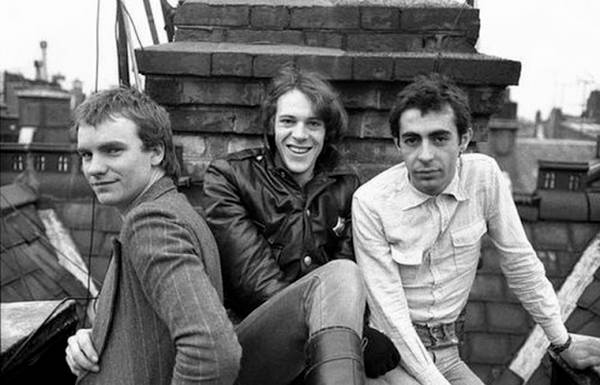
Early photos of Sting and The Police, 1977
The award-winning American wrestling star Stephen James Borden also has a nickname Sting. Interestingly, he claimed it earlier than a musician did. Therefore, when Sting had to buy the rights for the pseudonym from the wrestler.
It is Sting who sings, “I want my MTV” in Dire Straits’s “Money for Nothing.” From now on, you will listen to this song in a completely different way, sorry.
Sting doesn’t want to be featured in a biopic, as is actively encouraged these days. “I am absolutely against it. I don’t want that. I already describe my life through art. “
And Sting doesn’t want his many children to inherit a $ 400 million inheritance. According to the musician, for them, it will become a yoke around their necks. Besides, Sting hopes to spend all this money in full!
Сообщение Rare photos and facts about Sting появились сначала на Old Pictures.
]]>Сообщение The Reindeer operation: a story behind WW2 photo, 1941 появились сначала на Old Pictures.
]]>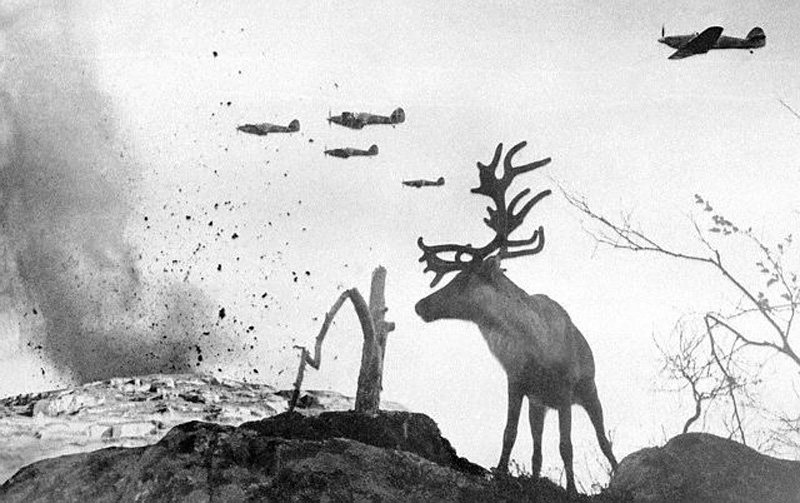 The name of this photo is Reindeer, called after the German operation during the WW2. This offensive aimed to capture Petsamo (an area in Finland on the border with the Soviet Union) to seize nickel mines. The Reindeer operation started on June 22, 1941, and proceeded without incident. On June 29, the German plan changed, and the whole operation was renamed to ‘Platinum Fox.’ The new goal was the city of Murmansk. The Soviet Photojournalist Yevgeny Khaldey was covering the Russian defense activities. It was a time when he made this striking shot in which the beast’s natural beauty confronts the killing machines.
The name of this photo is Reindeer, called after the German operation during the WW2. This offensive aimed to capture Petsamo (an area in Finland on the border with the Soviet Union) to seize nickel mines. The Reindeer operation started on June 22, 1941, and proceeded without incident. On June 29, the German plan changed, and the whole operation was renamed to ‘Platinum Fox.’ The new goal was the city of Murmansk. The Soviet Photojournalist Yevgeny Khaldey was covering the Russian defense activities. It was a time when he made this striking shot in which the beast’s natural beauty confronts the killing machines.
The Reindeer is not the only famous photo that Yevgeny Khaldey took. The best-known picture is, of course, the Flag over the Reichstag, 1945. The ‘Flag’ picture hit the Top 100 most important photos in history.
Oldpics also published a story behind another amazing photo by Yevgeny Khaldey: The Nazi family in Vienna, 1945.
How the reindeer appeared in the combat operation photo
But now, let’s get back to the Reindeer operation photo. In his works, Yevgeny Khaldei liked to combine everyday life and war. He photographed a sunbathing couple next to a destroyed building, the head of the traffic control service next to the sign of German cities in Russian, etc. He used a similar technique with the Reindeer photo. True, the photo with the reindeer was not entirely documentary. The book “Witness to History: Photos by Yevgeny Khaldei” tells about this shot. During the bombardment, the deer (Russian called it Yasha afterward) approached soldiers. The shell-shocked animal did not want to be left alone. Khaldei took a picture, but it turned out not as spectacular as the correspondent expected. Through multiple exposures, Khaldei added British Hawker Hurricane fighters and an exploding bomb to the shot.
The Reindeer operation did not bring success to the German-Finnish army. Neither the Germans nor the Finns reached the Murmansk railway, nor did they seize the Soviet fleet’s base in the Far North. In this sector of the war, the front stabilized until 1942.
Check our publications of the best Soviet WW2 photography:
Outstanding Soviet WW2 pictures (Part I: Max Alpert)
Amazing Soviet WWII pictures (Part 2: Dmitri Baltermants)
Outstanding WW2 pictures (Part3: Emmanuil Evzerikhin)
Сообщение The Reindeer operation: a story behind WW2 photo, 1941 появились сначала на Old Pictures.
]]>Сообщение Gandhi and spinning wheel: a story behind the iconic photo появились сначала на Old Pictures.
]]>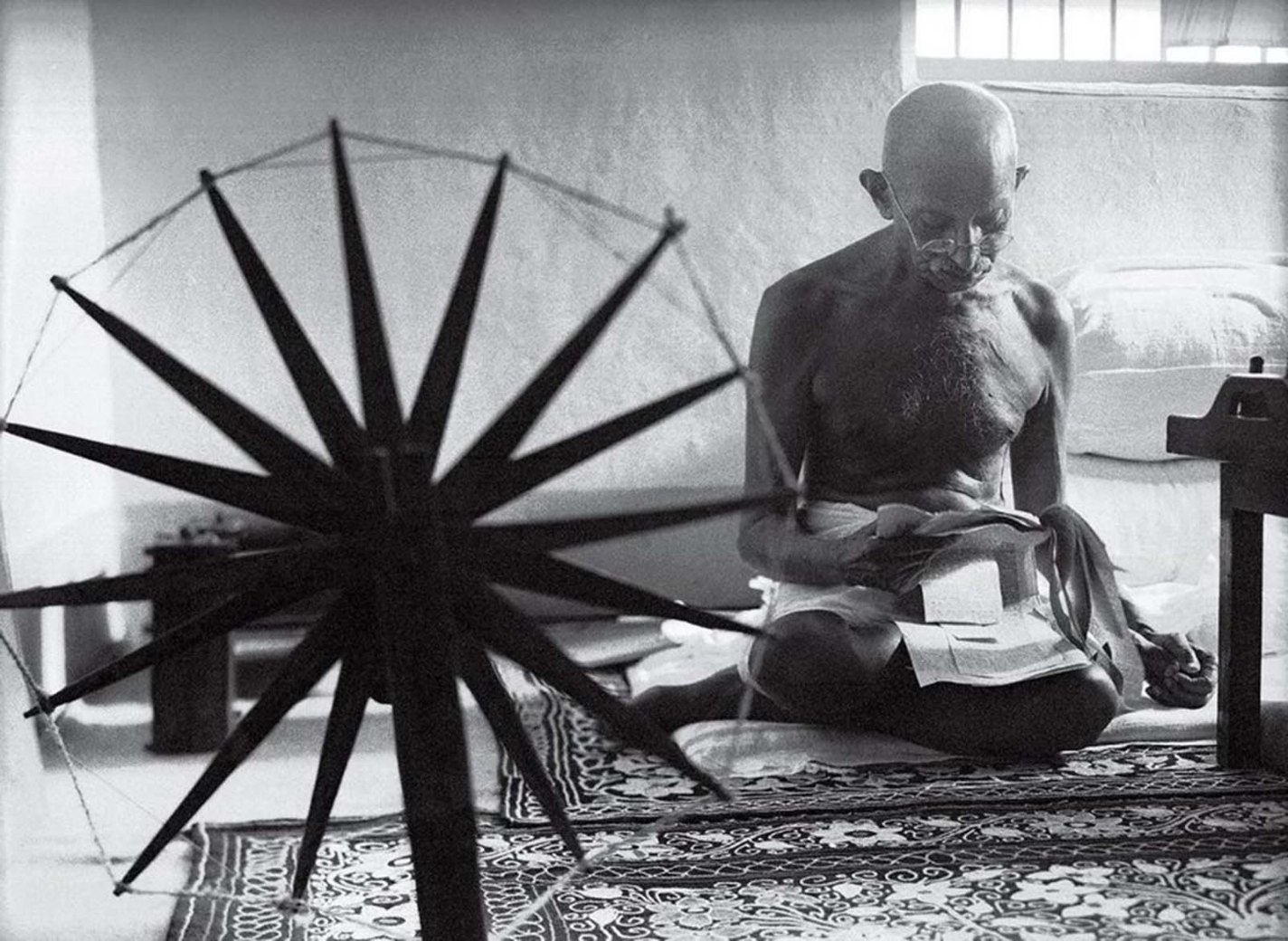 American photographer Margaret Bourke-White took her legendary Mahatma Gandhi and spinning wheel photo in 1946. It became a symbol of the “nonviolent resistance” ideology. Later it turned out that the spinning wheel was a perfect visual component to show the lifestyle and the mindset of Gandhi.
American photographer Margaret Bourke-White took her legendary Mahatma Gandhi and spinning wheel photo in 1946. It became a symbol of the “nonviolent resistance” ideology. Later it turned out that the spinning wheel was a perfect visual component to show the lifestyle and the mindset of Gandhi.
Margaret Bourke-White was a fearless photographer. She became the first female military journalist and took pictures that are sometimes horrifying with the brutality of the events they depict. But at the same time, she was able to capture moments of peace and tranquility. Her photograph of “Gandhi and His Spinning Wheel” is a perfect illustration of her skill.
This Mahatma Gandhi photo is among the 100 most important pictures in history
The harsh time for India
1946 is a turbulent time for India. The former British colony split into independent states – Pakistan and the Indian Union. Numerous bloody clashes between Hindus and Muslims will follow, more than 500 thousand people will die. Mahatma Gandhi, who believed in the senselessness of violence, was very upset by the country’s situation. But in 1946, the parties still hoped for a more peaceful settlement of the conflict. During this time, Margaret Burke-White was on assignment for the editorial staff of LIFE magazine in India. She was working on an article ultimately titled “Leaders of India” issued on May 27, 1946.
The photographer took hundreds of pictures, including many photographs of Gandhi himself: with his family, with a spinning wheel, at prayer. A dozen pictures of the Leaders of India hit the pages of the magazine. But there was no famous Gandhi photo among them.
This picture hit the paper in June 1946, as a small image on top of an article dedicated to Gandhi’s charm, which the editorial board called “natural medicine” for the sick.
Why is the spinning wheel a symbol of Gandhi
The ‘Gandhi spinning wheel’ photograph became truly famous after the assassination of Gandhi in January 1948. LIFE magazine released an article entitled “India Lost Its Great Soul.” A shot of Gandhi with a spinning wheel took half a page over the text. The photograph served as a moving visual eulogy for this man and his ideals.
Margaret Bourke-White noted the significance of the simple spinning wheel in the photograph for Mahatma Gandhi. She wrote: “Gandhi spins every day for an hour, usually starting at 4 a.m. All members of his ashram must spin too. He and his followers encourage everyone to spin”. They even told Margaret Bourke-White to put aside the camera to spin … When she noticed that photography and spinning are both crafts, they replied seriously: “Spinning is the greater of two.” Spinning rises to the heights of the almost religious Gandhi and his followers.
The spinning wheel is almost like an icon to them. Spinning is a medicine for them, and they talk about it in terms of high poetry. “
In Burke-White’s most famous portrait of Gandhi, a note to the LIFE editors reads: “Gandhi is reading clippings — in the foreground is the spinning wheel he has just stopped using. It would be impossible to exaggerate the reverence with which Gandhi’s personal spinning wheel is kept in the ashram.”
Read more: The story of American way photo by Margarett Bourke-White
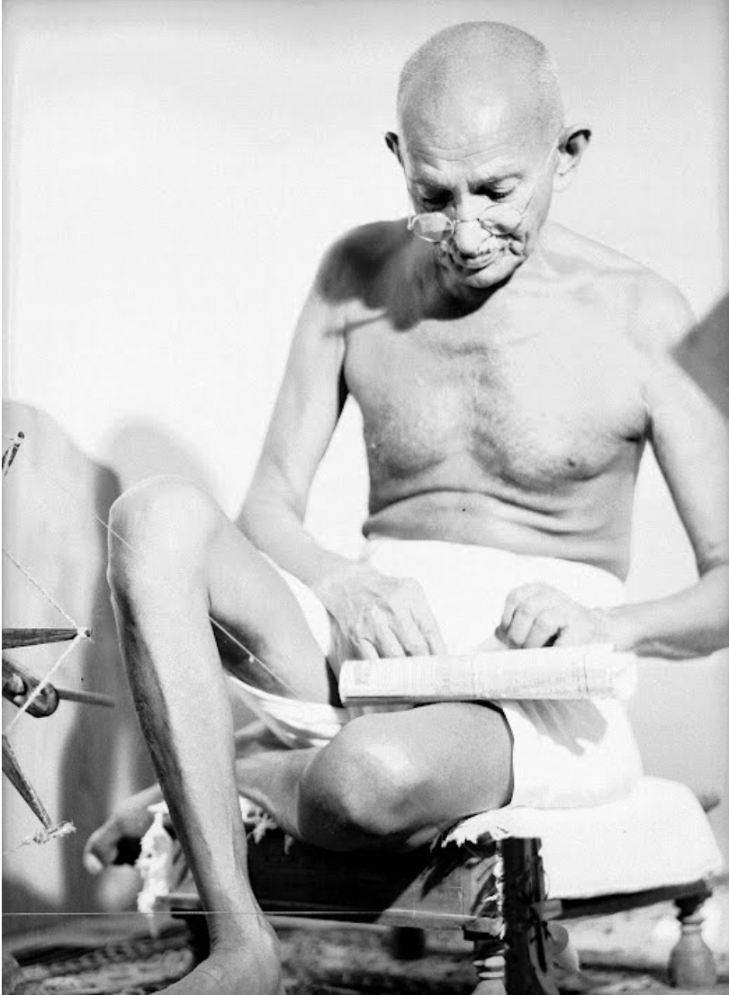
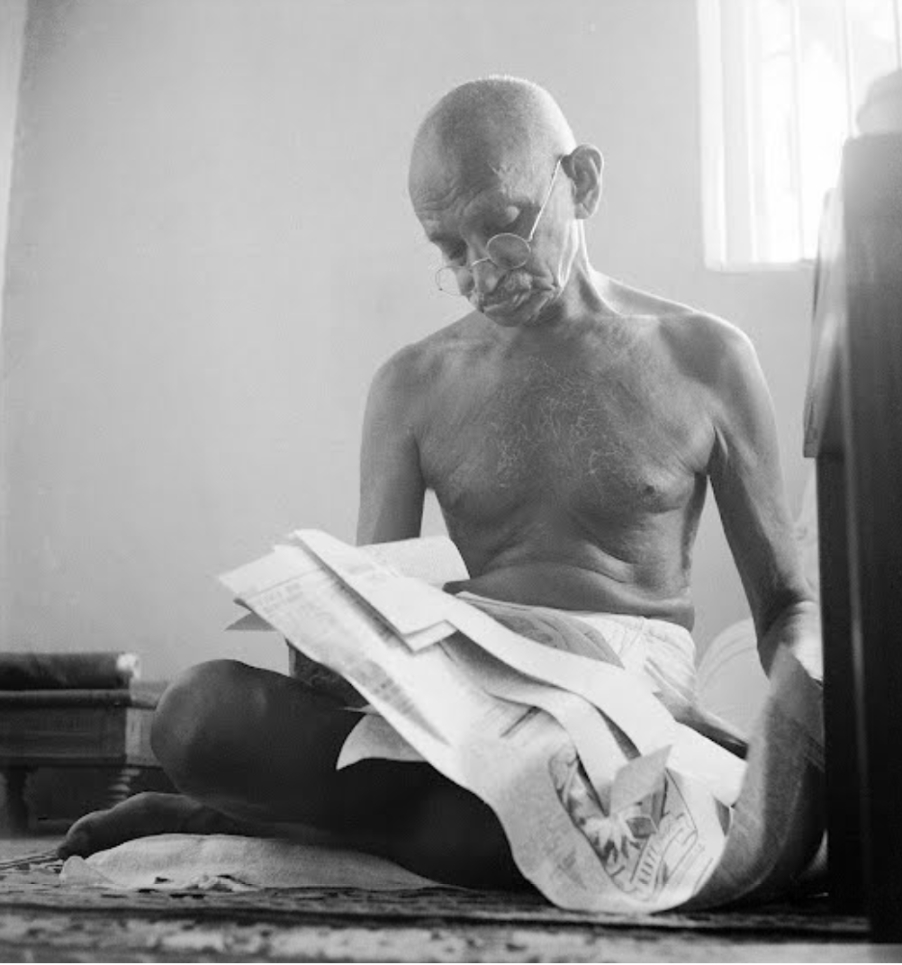
Gandhi reading religious texts.
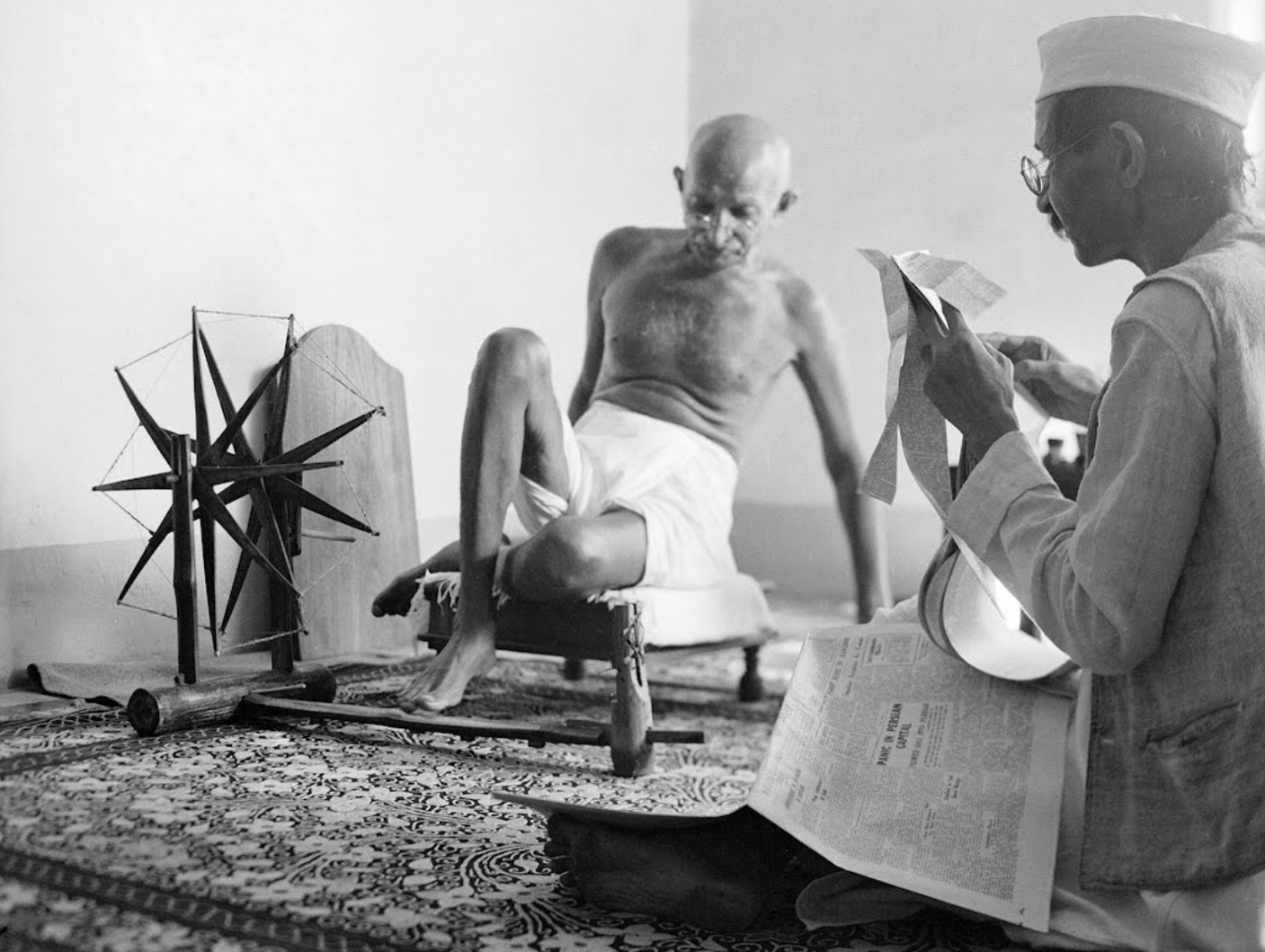
Mahatma Gandhi stretching during the reading
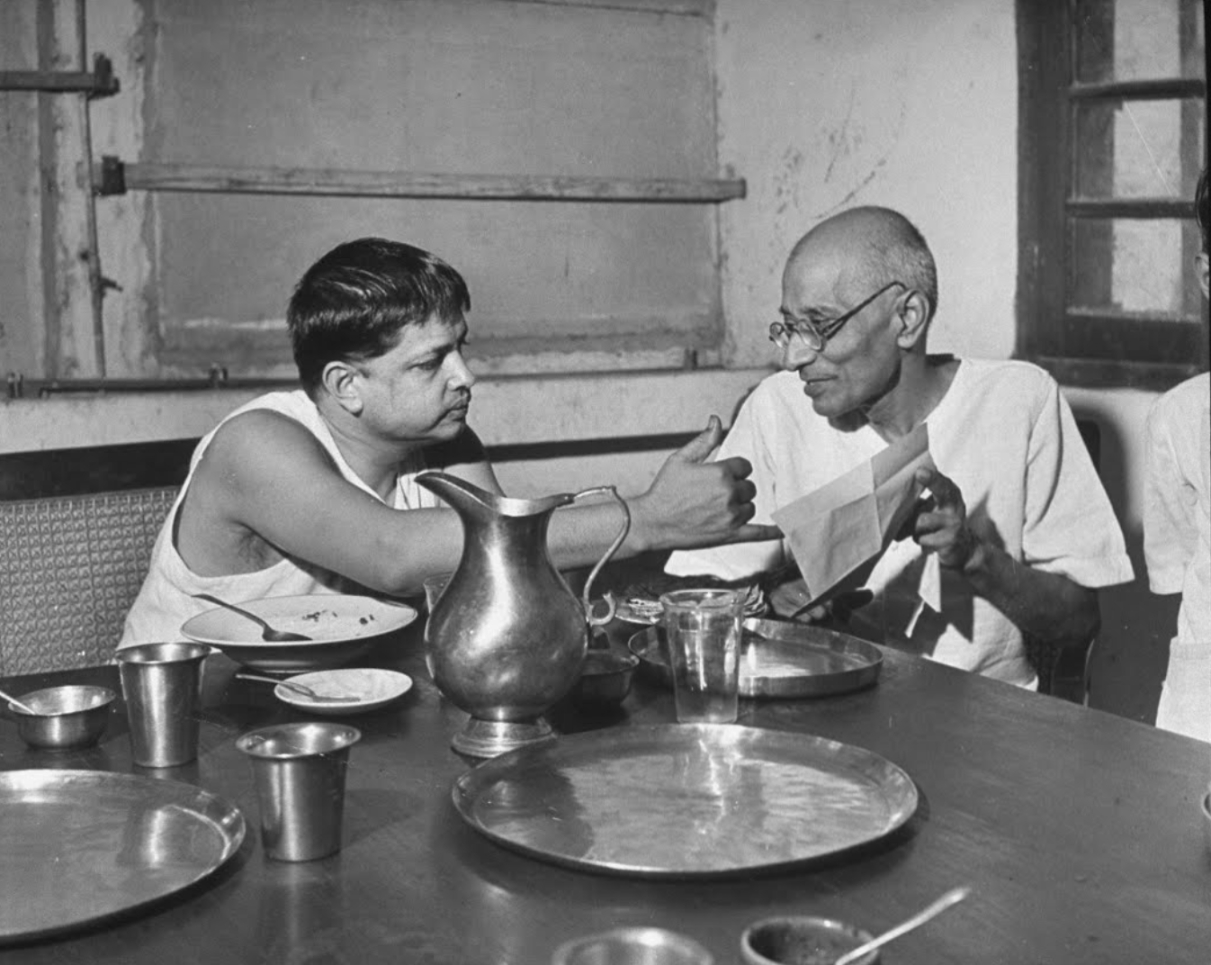
Gandhi and his follower
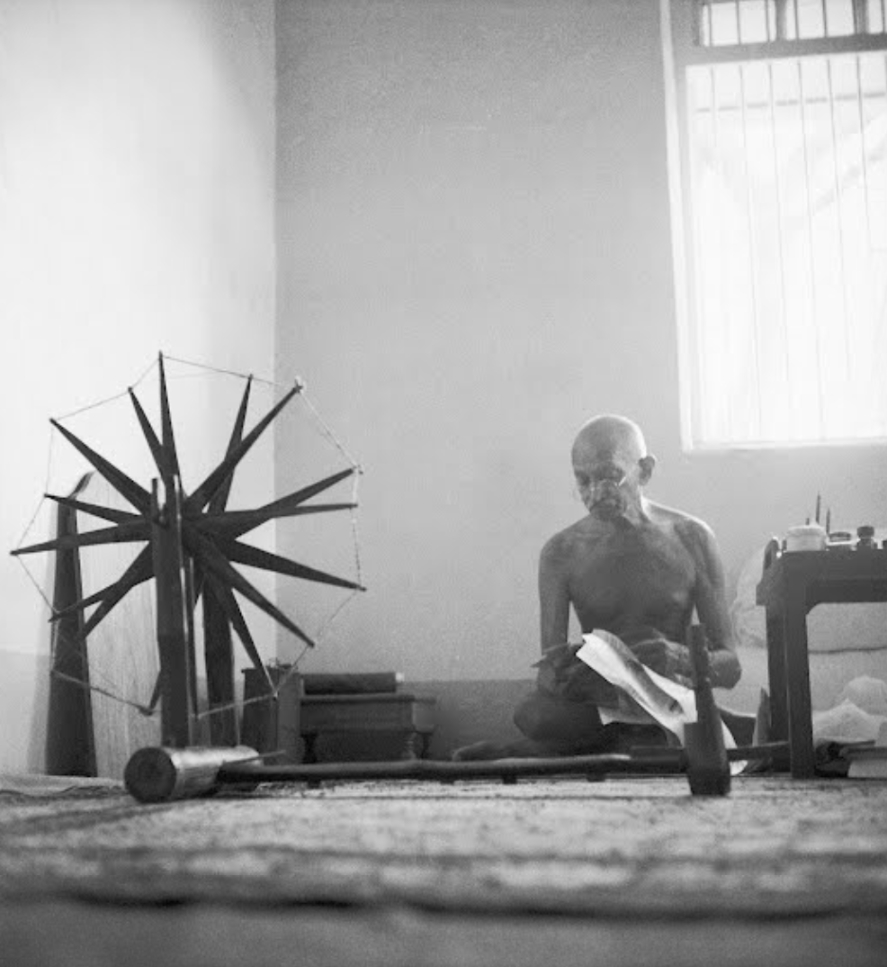
Another angle of the famous spinning wheel photo
Сообщение Gandhi and spinning wheel: a story behind the iconic photo появились сначала на Old Pictures.
]]>Сообщение Winston Churchill as an artist and his other leisure pictures появились сначала на Old Pictures.
]]>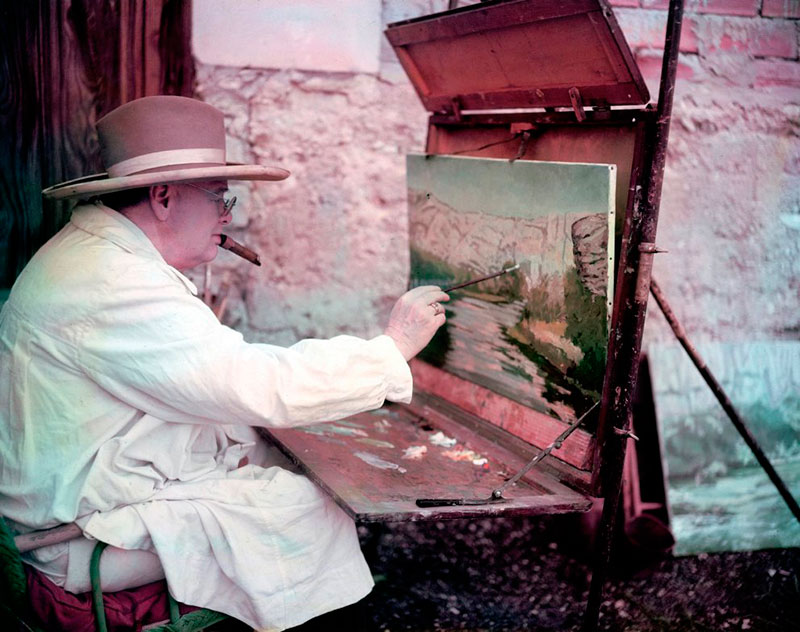
Winston Churchill was a modest artist. He called his paintings daub.
Everybody remembers Winston Churchill as an iron prime-minister from the picture of Yusuf Karsh. This photo is undoubtfully the best-known Prime minister’s image. We also remember him holding a Tommy gun and inspiring British soldiers to defend their homeland.
But we have some relaxed photos of Winston Churchill too. Oldpics selected several noteworthy images showing an unexpected talent of the legendary politician: the painting. Yes, Sir Winston Churchill was an artist too!
Editors asked their photographers to make a portrait of a retired politician at home. In those pictures, the Winston Churchill looked completely different: a sedate landowner, an enthusiastic artist, an animal lover.
Churchill took up a hobby of painting in 1915, at the age of 41. He was a passionate artist until the end of his life. “If I didn’t paint, I would not be able to live. I could not bear the stress, ”he said. During his life, he created more than 500 paintings.
See more: Eyes of hate: story behind iconic photo by Alfred Eisenstaedt.
“When I get to heaven, I intend to spend a substantial portion of the first million years drawing, and so get to the bottom of things.”
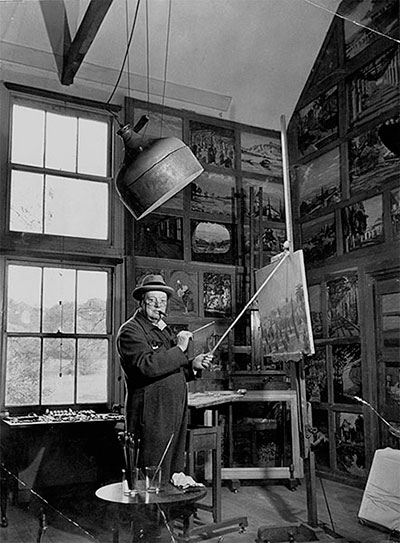
In his studio in Kent

Winston Churchill, an artist, 1939
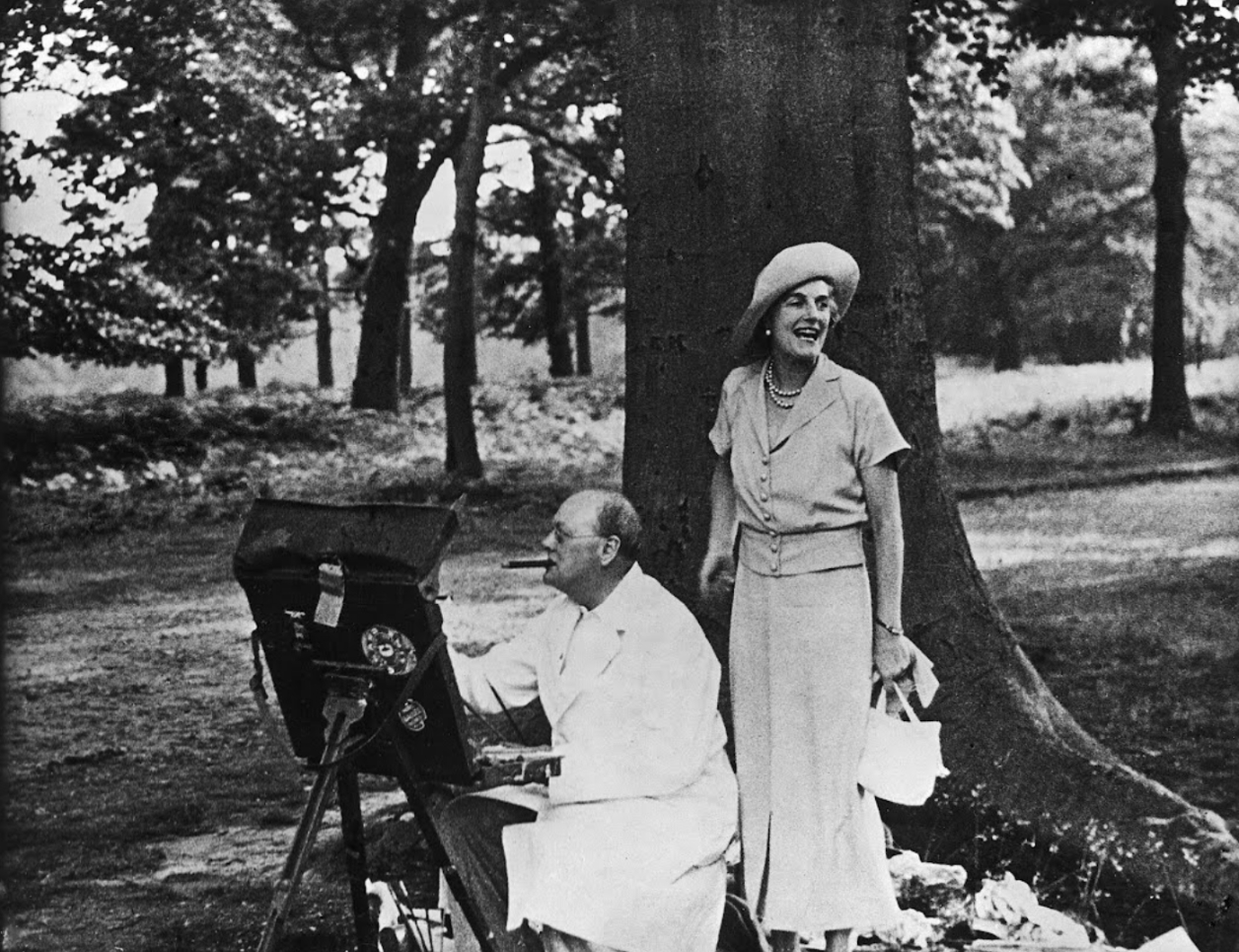
Churchill’s wife supported her husband’s painting hobby. However, Winston Churchill didn’t make any of her portraits.
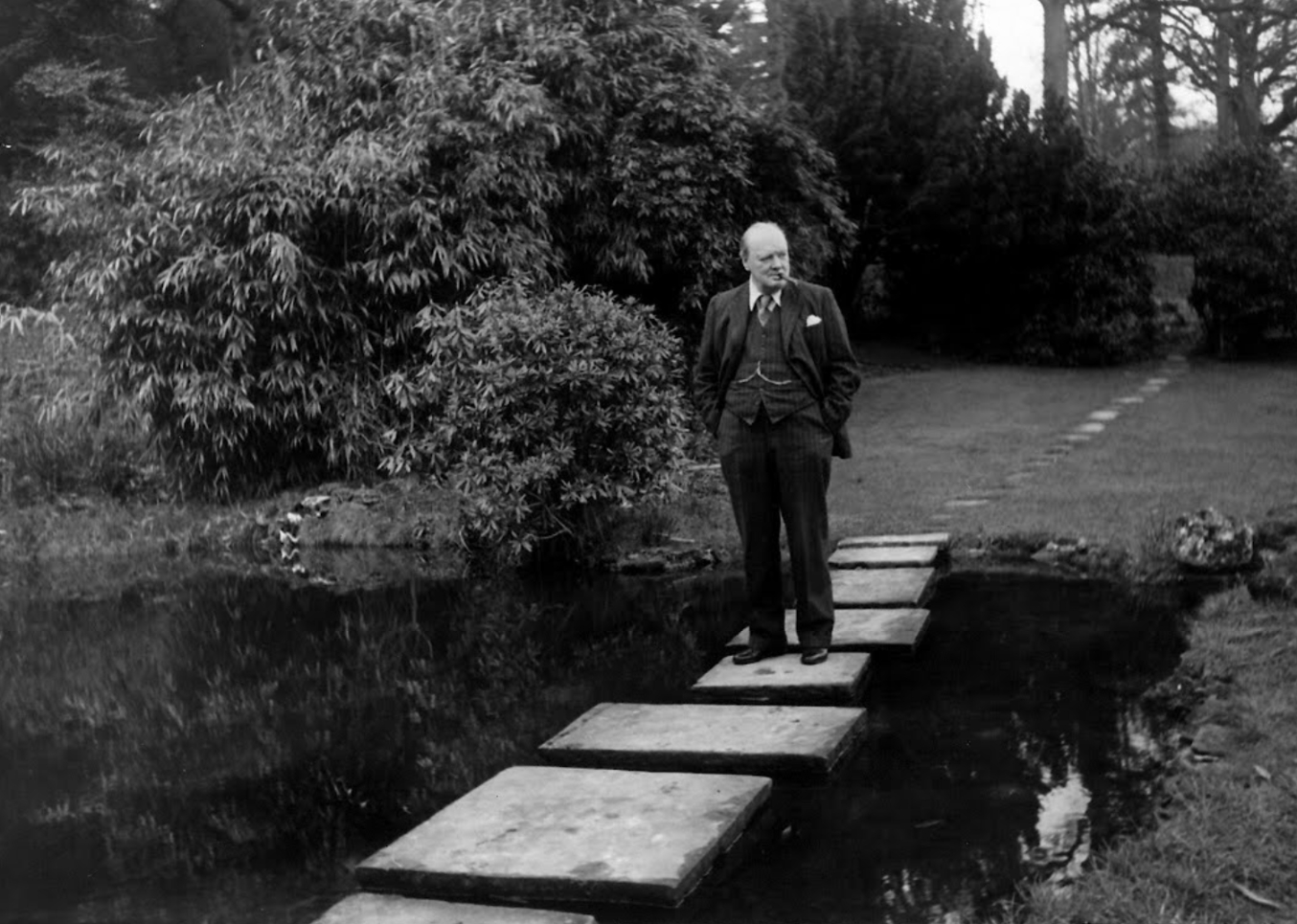
Spending free time, 1939

Winston Churchill knew how to spend his time in style, 1939
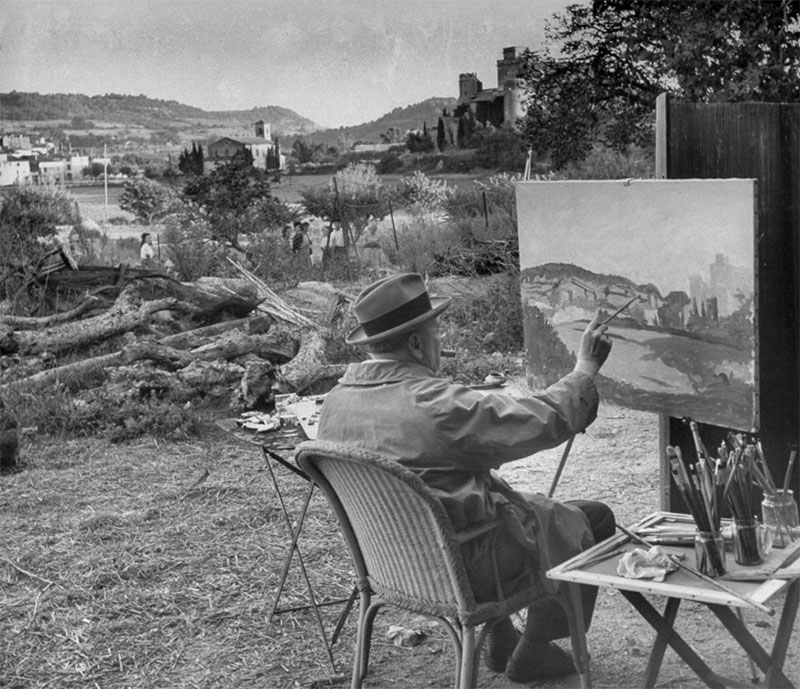
While painting in France, 1949
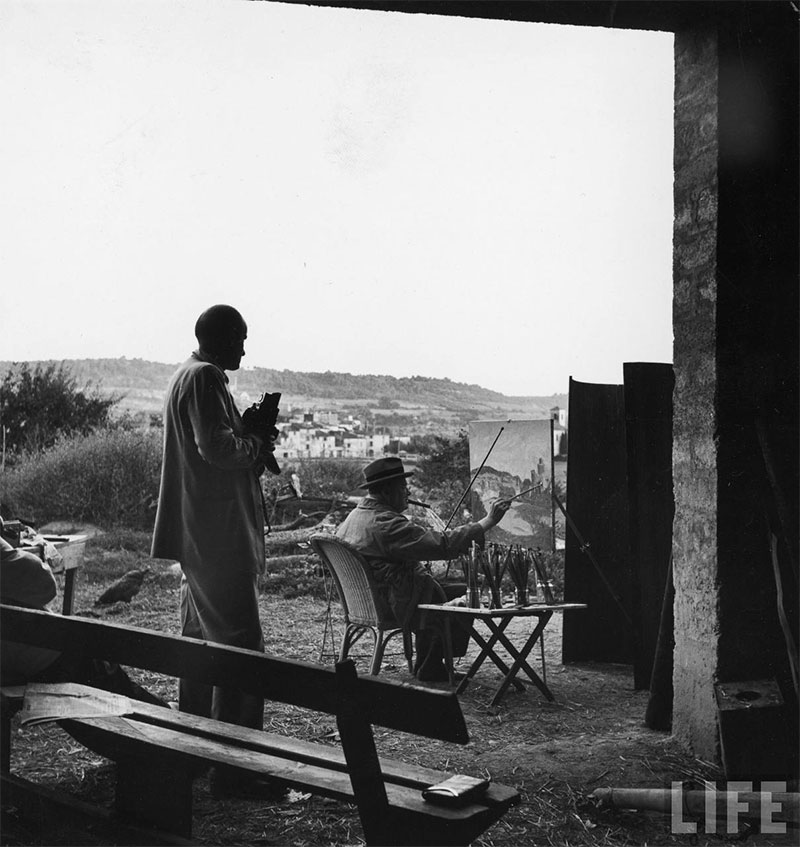
Frank Scherchel photographs Winston Churchill painting, 1949
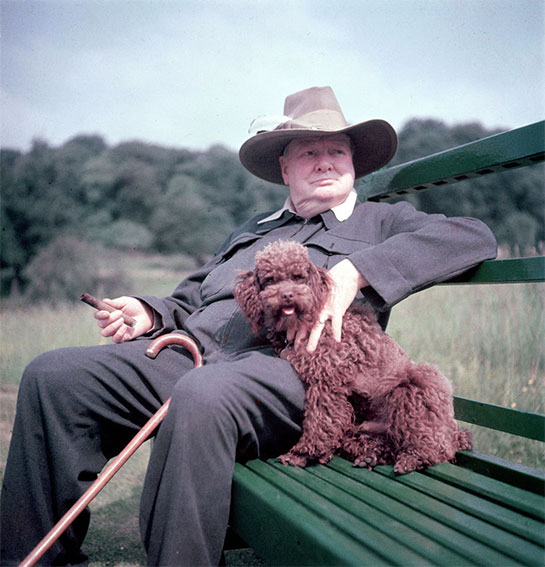
Winston Churchill and his poodle Rufus.
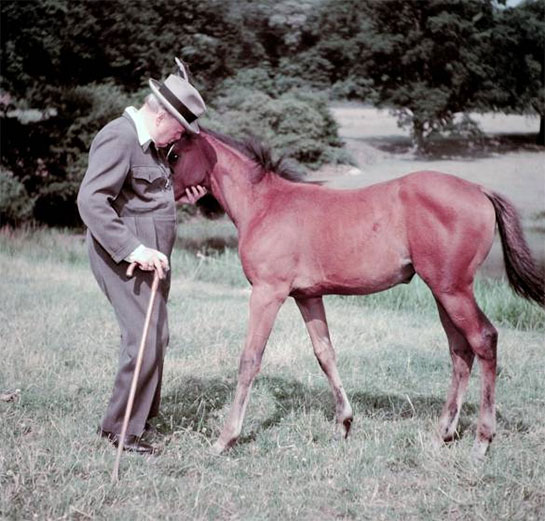
Winston Churchill and his thoroughbred four-month-old mare, whom he called Darling Chartwell, 1950.
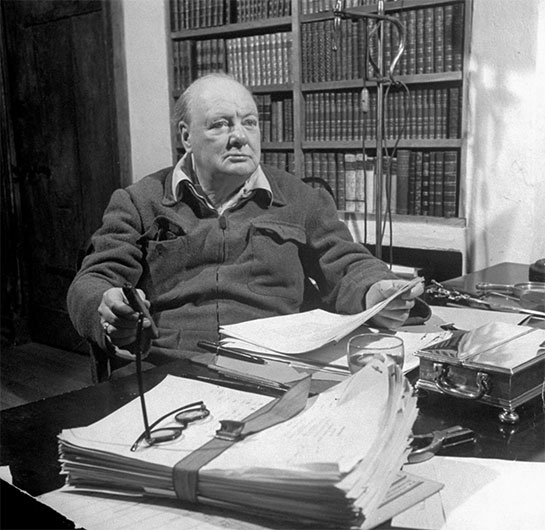
Working on a memoir.
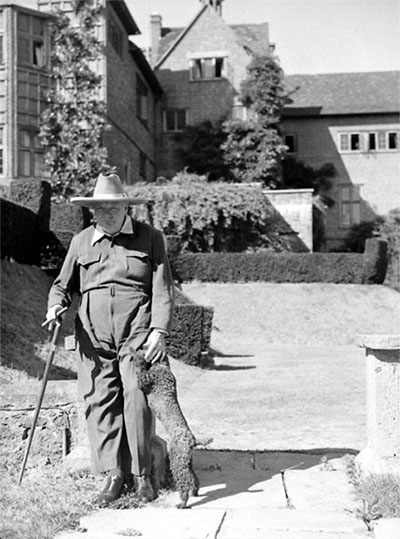
Winston Churchill and his poodle Rufus. Chartwell estate in Kent, 1947.
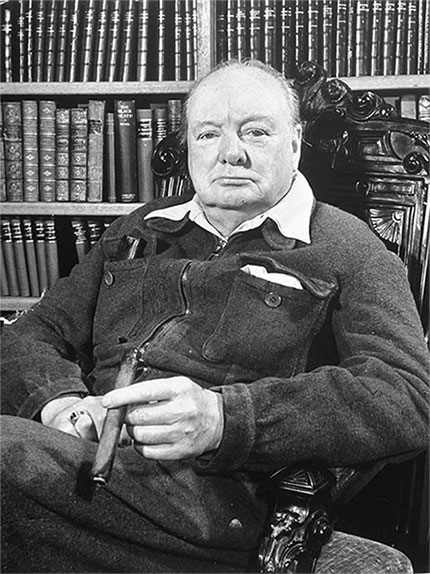
In the office. Chartwell, 1949.
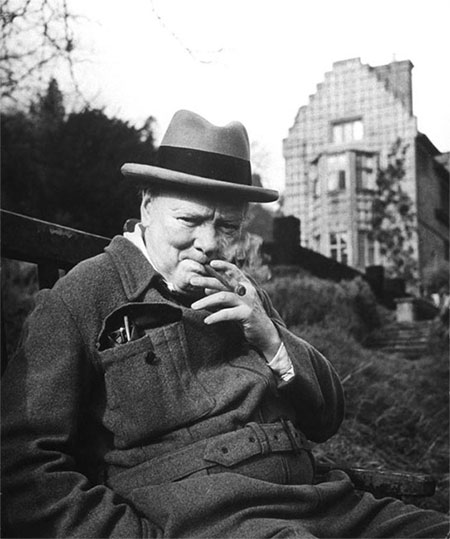
Churchill and cigars. Chartwell Estate, 1947.
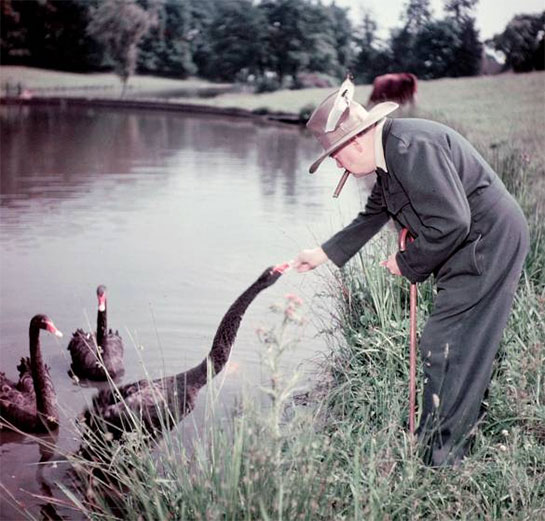
Black Swans are a gift to Churchill from Western Australia (the bird is a state symbol). Chartwell, 1950.
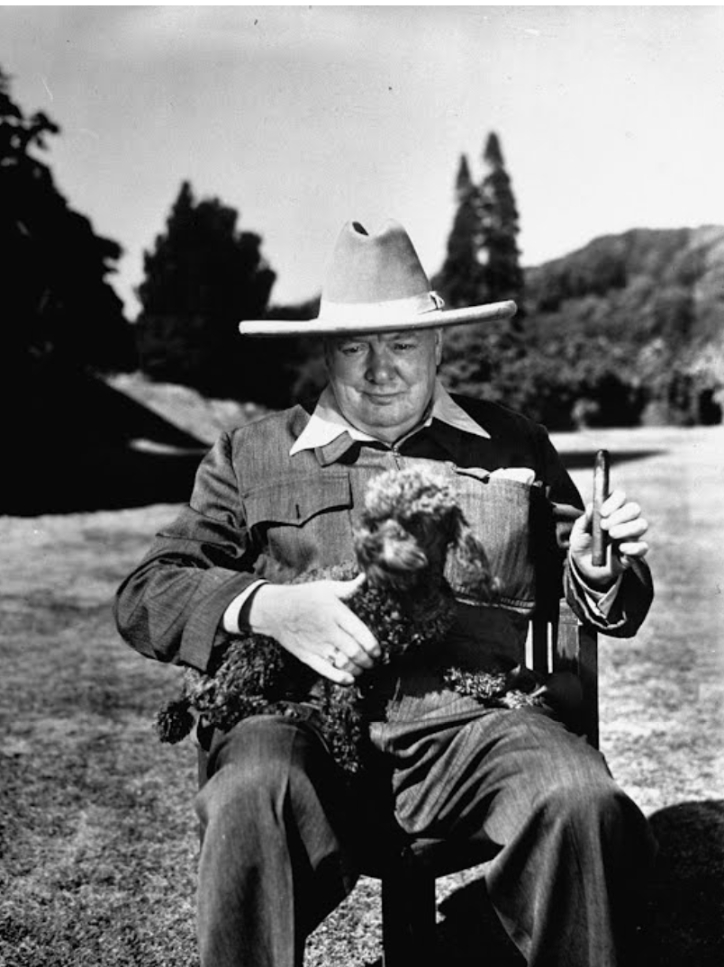
Сообщение Winston Churchill as an artist and his other leisure pictures появились сначала на Old Pictures.
]]>Сообщение Eyes of hate: story behind iconic photo by Alfred Eisenstaedt появились сначала на Old Pictures.
]]>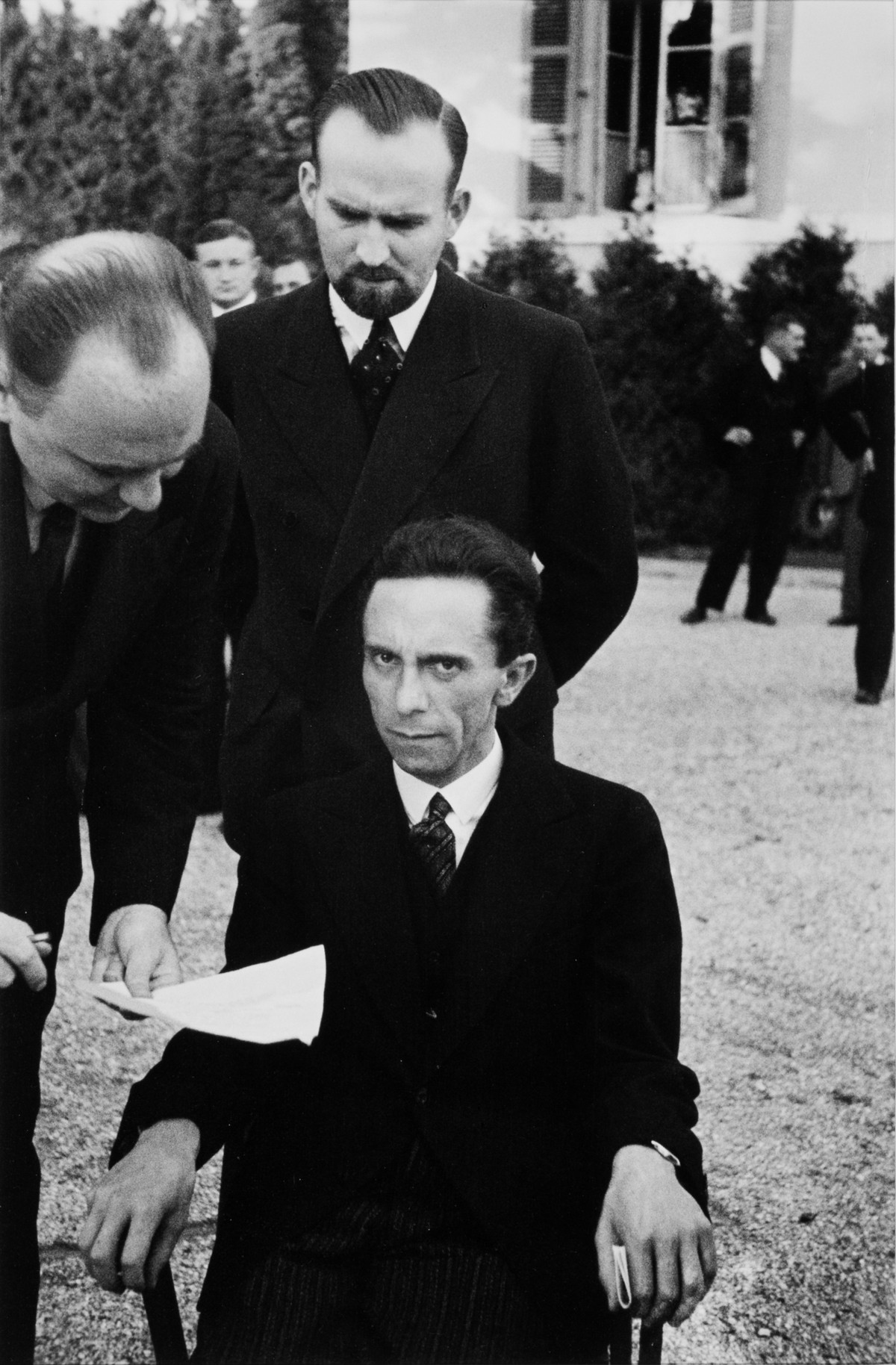
‘Eyes of hate’ is one of the iconic photos of the outstanding Germany-born photographer Alfred Eisenstaedt. Oldpics published his 64 of his most important pictures recently. ‘Eyes of hate’ photo stands among the others, and we decided to cover the story behind it.
The historical background
So, let’s get back to September 1933. Adolf Hitler has already taken all the power in Germany after winning the elections in January. The 3rd Reich has been proclaimed, the anti-jew and militaristic rhetoric became the mainstream.
Alfred Eisenstaedt worked for the Atlantic (it will soon transform into an Associated press) agency as a photo reporter. Here’s how he got accreditation to cover the League of Nations conference in Geneva. The place where Eisenstaedt captured the ‘Eyes of hate’ photo.
Facing the eyes of hate
“I found Dr. Joseph Goebbels In the hotel garden. By that moment, he has already occupied the position of Hitler’s propaganda minister,” Eisenstadt wrote in 1985. Goebbels was smiling, but not at me. He was looking at someone to my left. Suddenly he noticed me, and I took a picture of him. His expression changed immediately. These were the eyes of hate. Was I the enemy?’ Goebbels’ personal assistant Werner Naumann, with a goatee, and Hitler’s translator, Dr. Paul Schmidt, were standing behind him. We assume that one of them told the propaganda minister the photographer’s identity. “People asked what I felt taking pictures of these people. Of course, I wasn’t ok, but I do not know fear when I have a camera in my hands. “
Goebbels’ hostility towards the Alfred Eisenstaedt was due to his Jewish origin. The minister’s tense posture and a suspicious gaze directed directly at the camera clearly indicate Eisenstadt’s dislike. The propaganda minister truly shared the antisemitic views of his patron, Adolf Hitler.
The alternative name
“I could name this picture ‘From Goebbels with Love,’” the photographer continued. -When I approached him in the hotel garden, he looked at me with eyes of hate, as if he was waiting for me to disappear. But I haven’t disappeared.”
A couple of weeks later, Germany, quite the League of Nations, explaining that other countries discriminate against it. In fact, this meant Germany’s unwillingness to make compromises. It also testified to the League of Nations’ further ineffectiveness in resolving international disputes and preventing war conflicts.
Interestingly, Alfred Eisenstaedt captured his best-known ‘V-J day’ picture in 1945. It became the symbol of WW2 victory. While Joseph Goebbels ended his days committing suicide in May 1945.
Know more: All Pulitzer Prize photos (1942-1967)
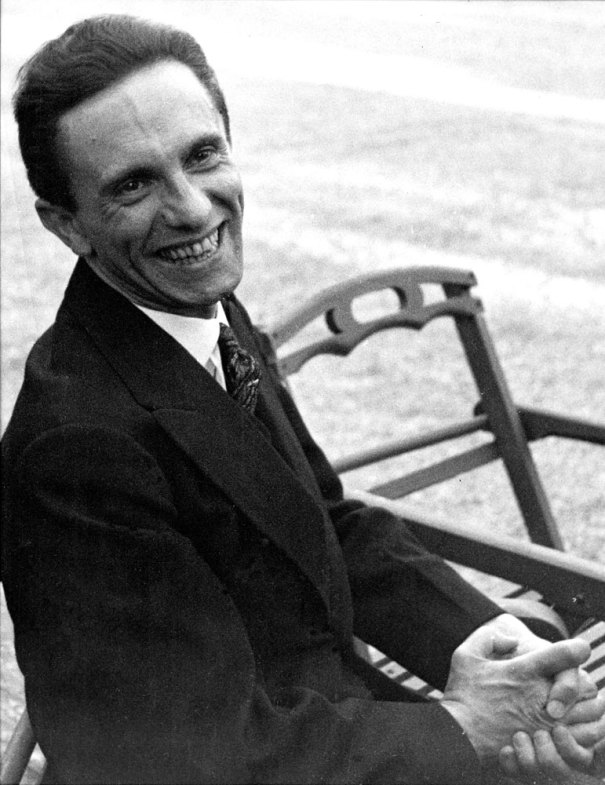
That’s how Joseph Goebbels before the ‘Eyes of hate’ scene
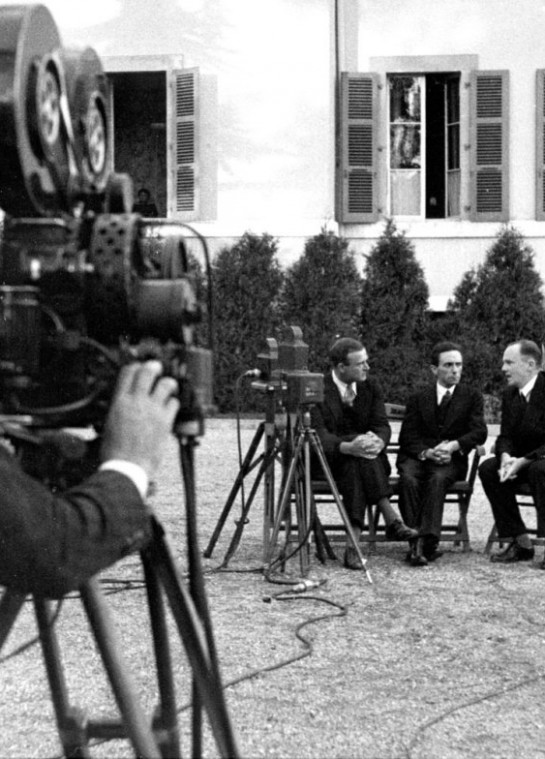
The scene during the League of Nations session
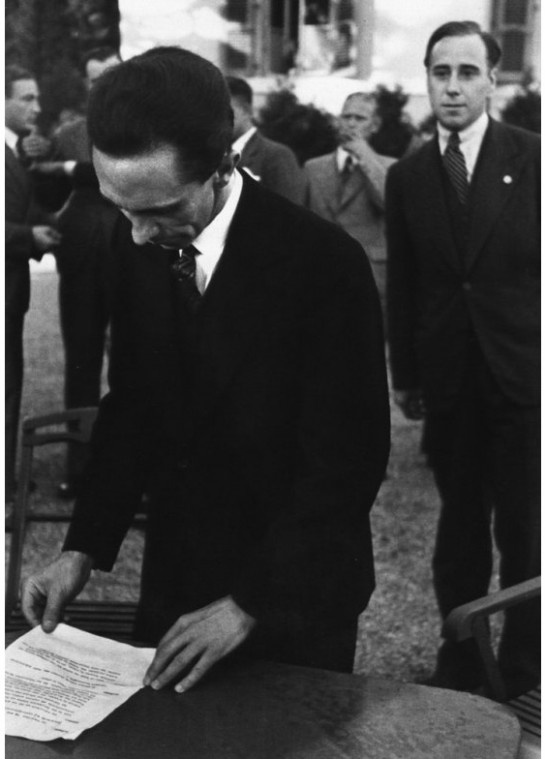
Joseph Goebbels truly shared antisemitic views of Adolf Hitler
Сообщение Eyes of hate: story behind iconic photo by Alfred Eisenstaedt появились сначала на Old Pictures.
]]>